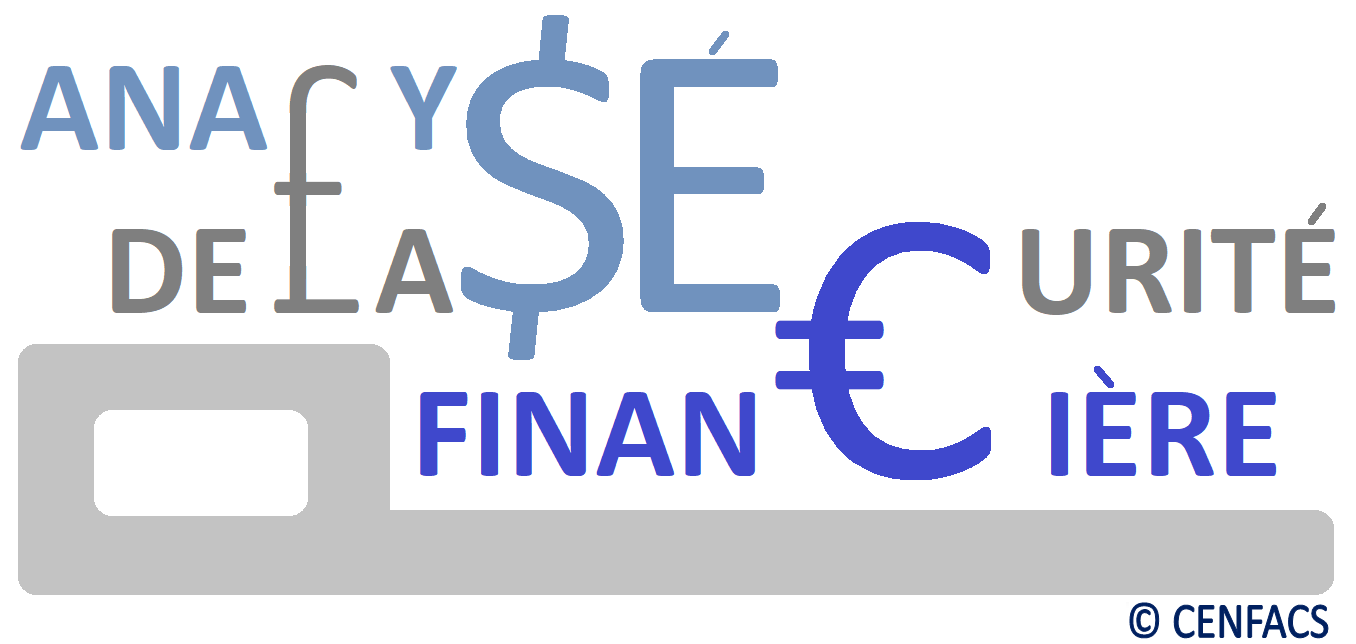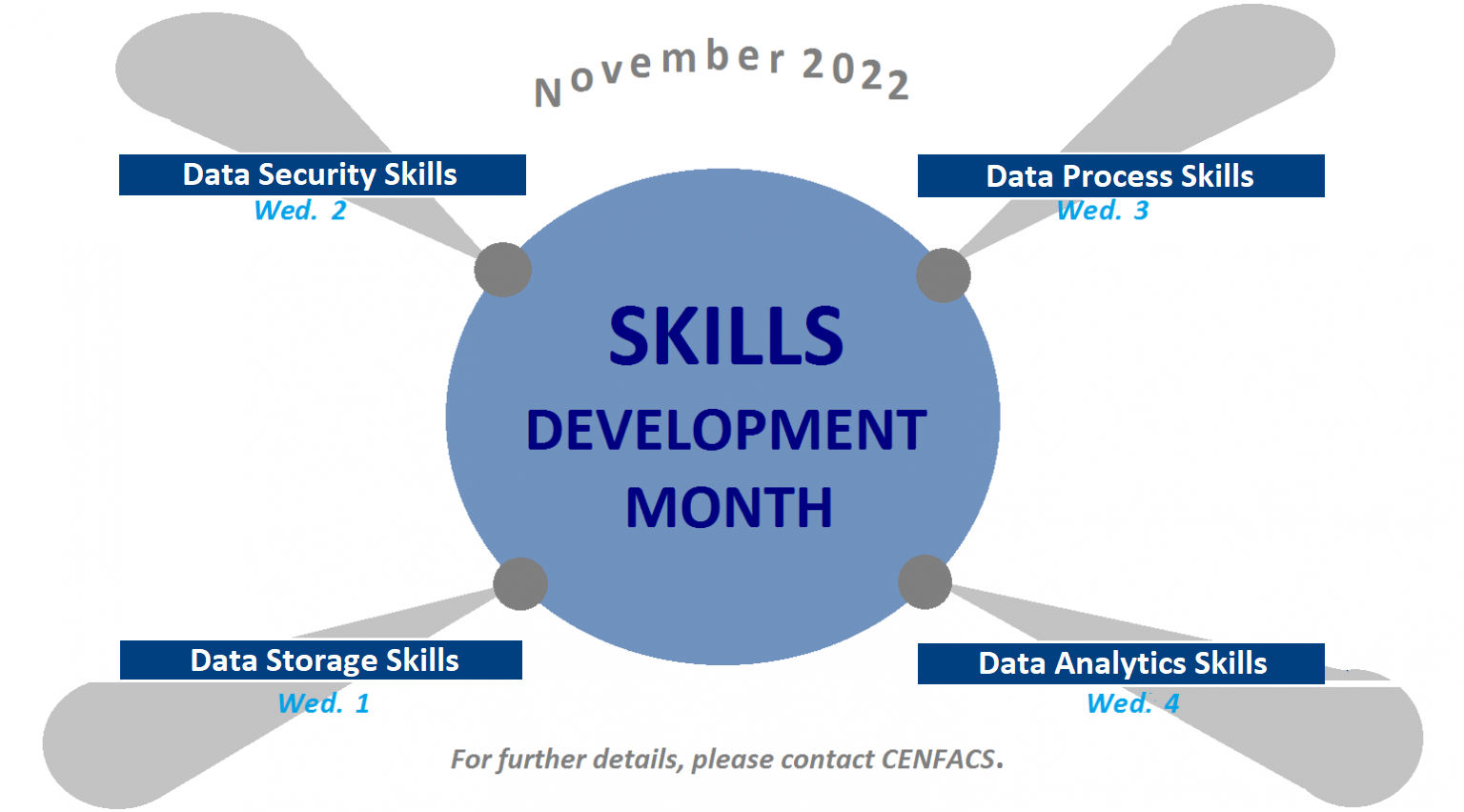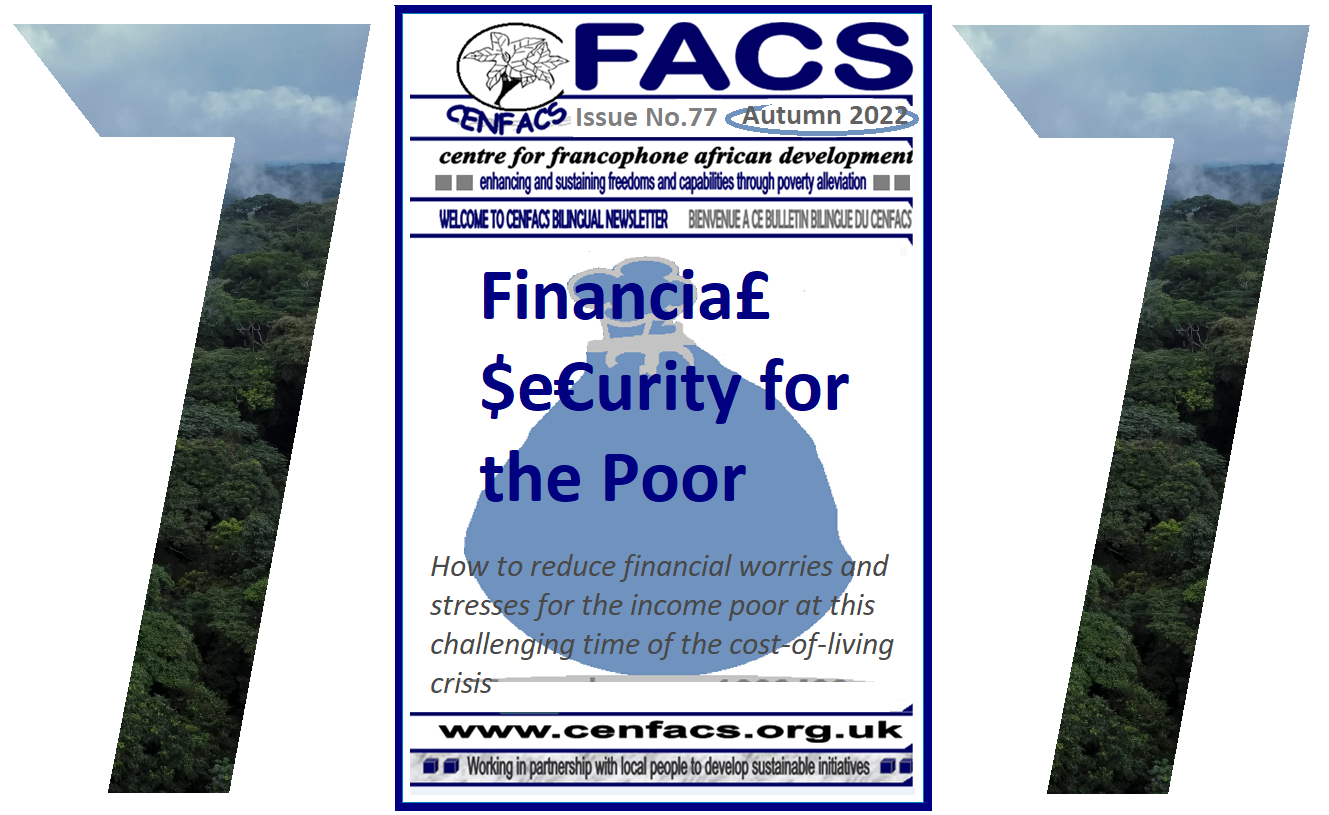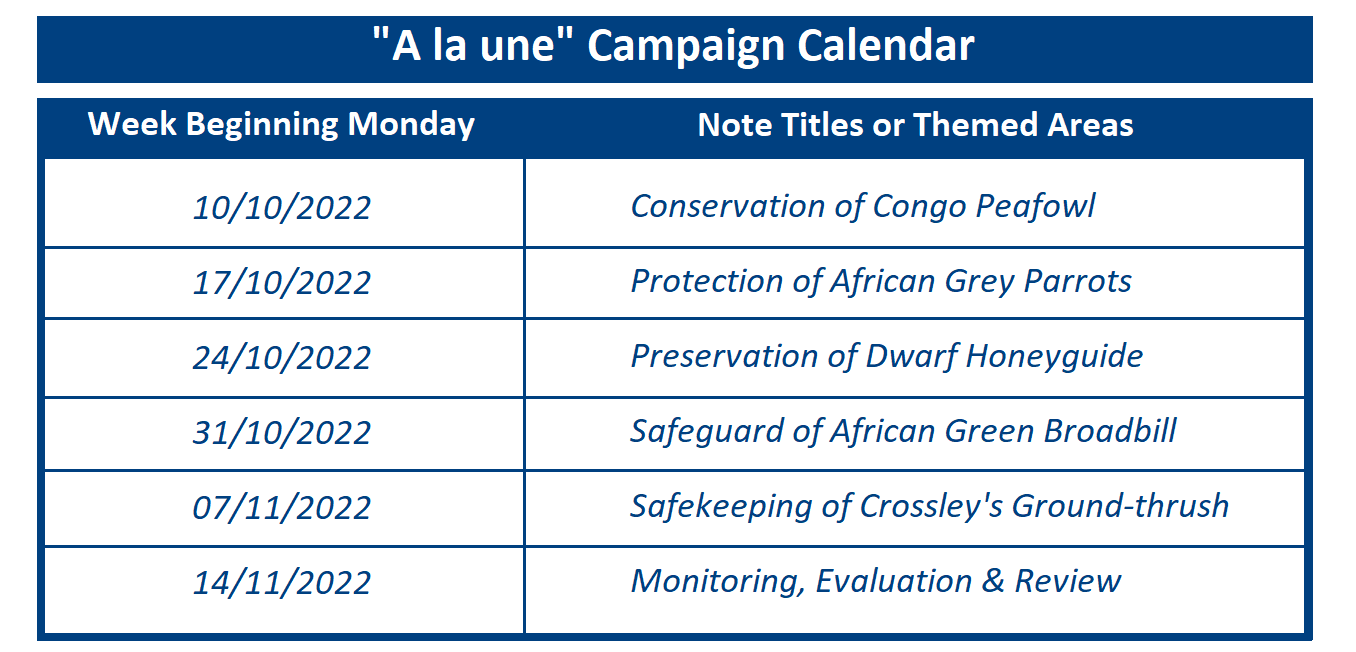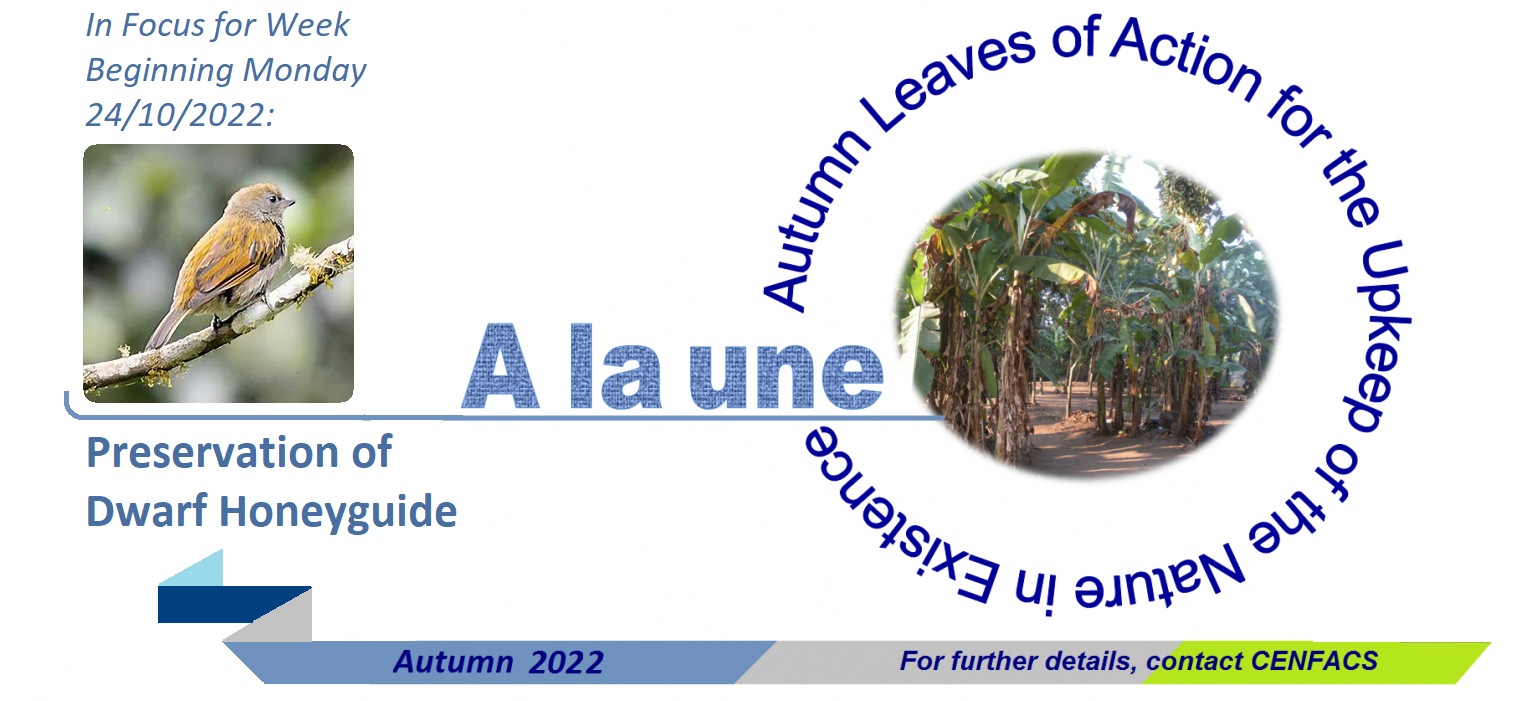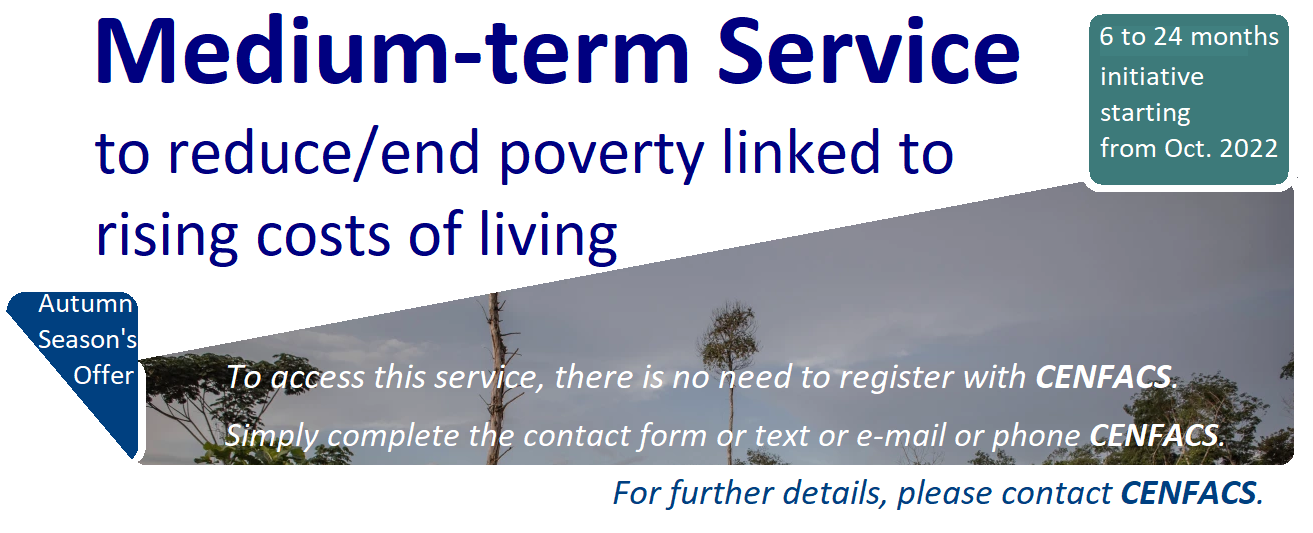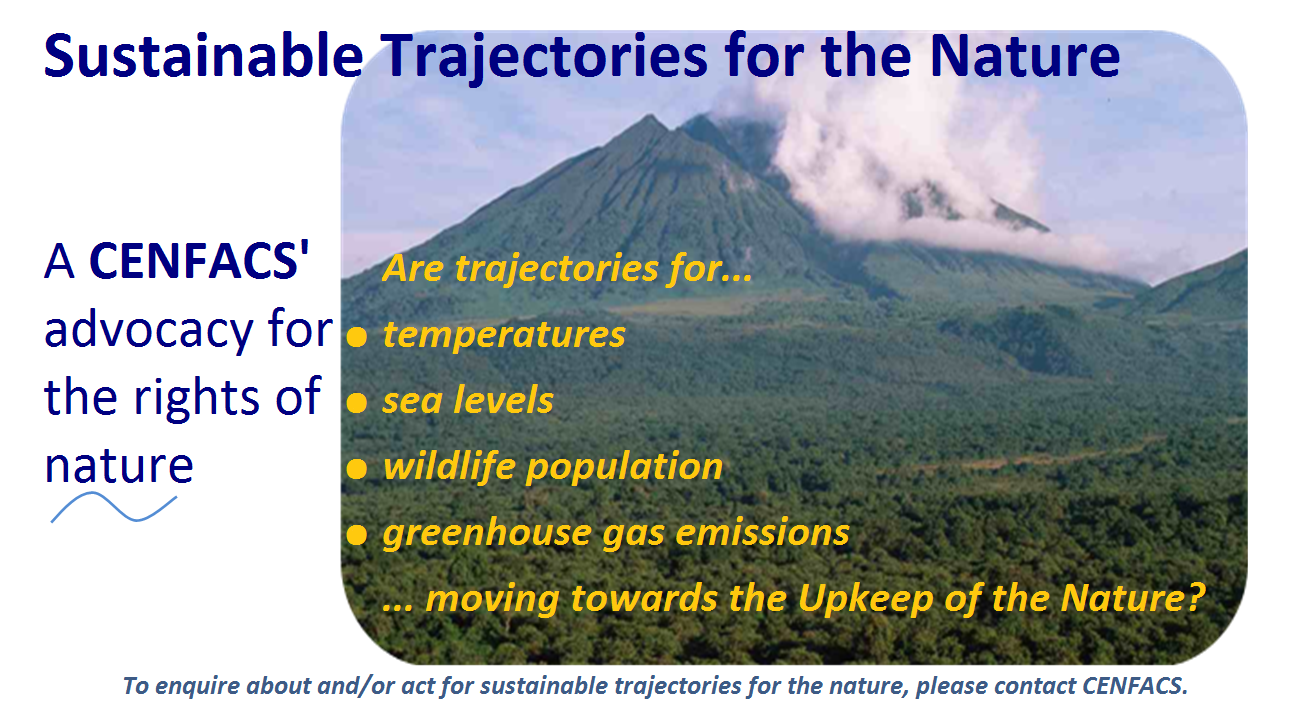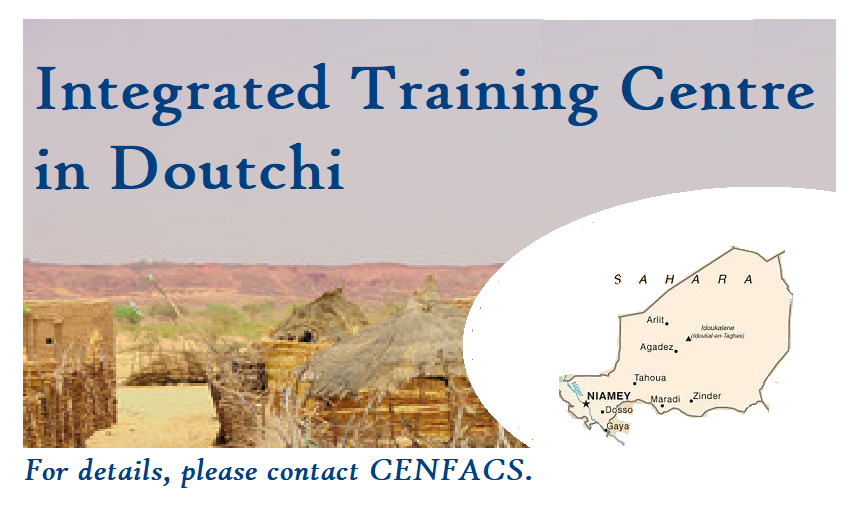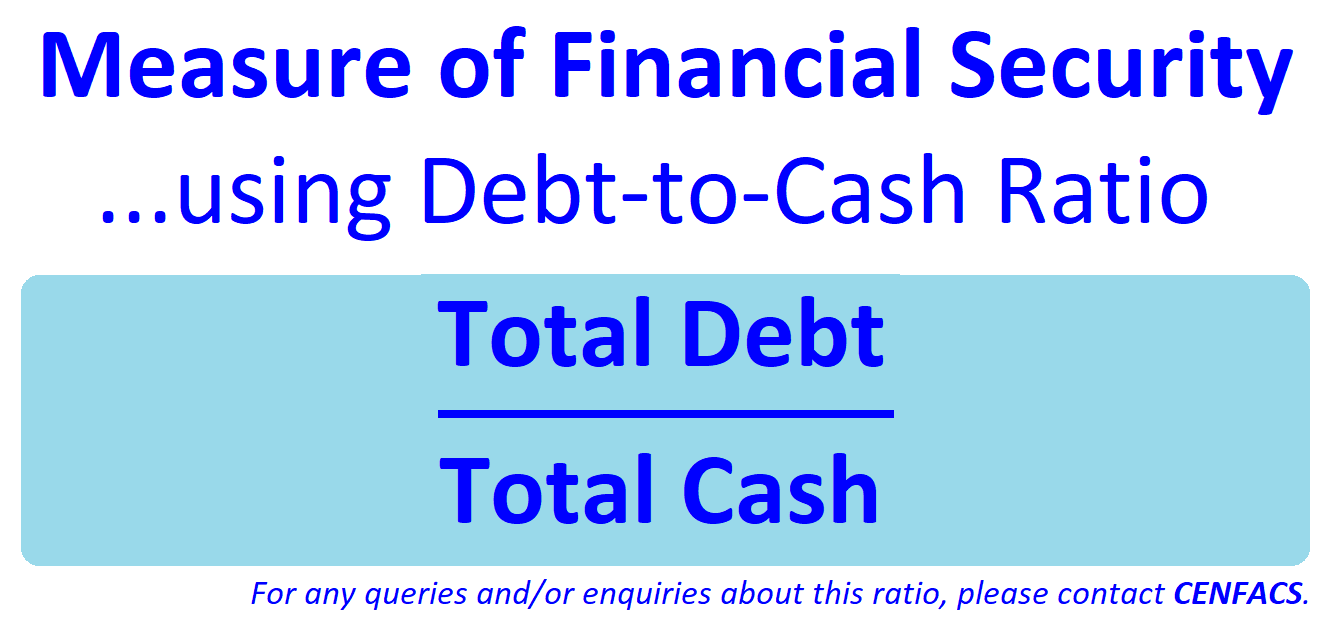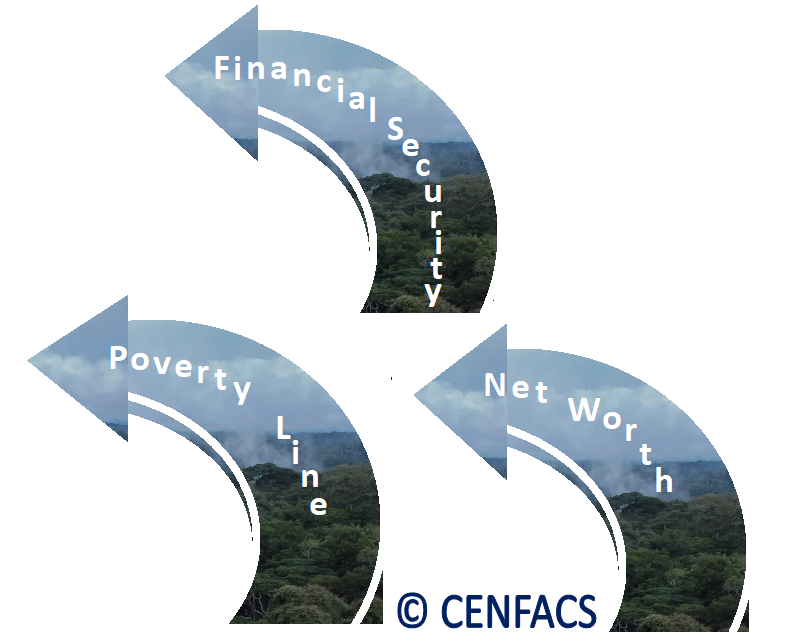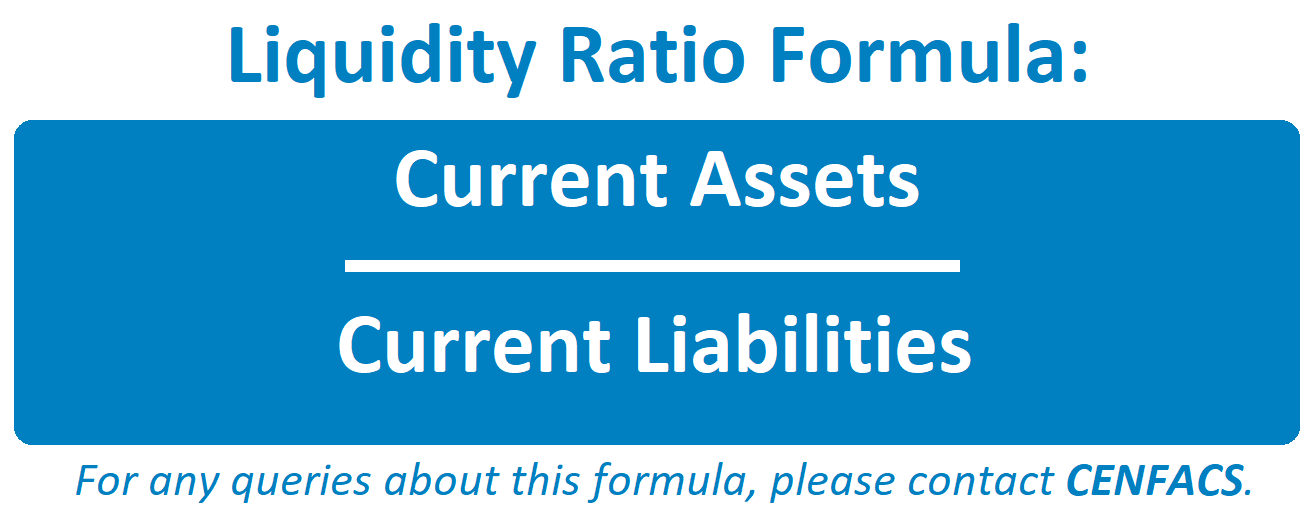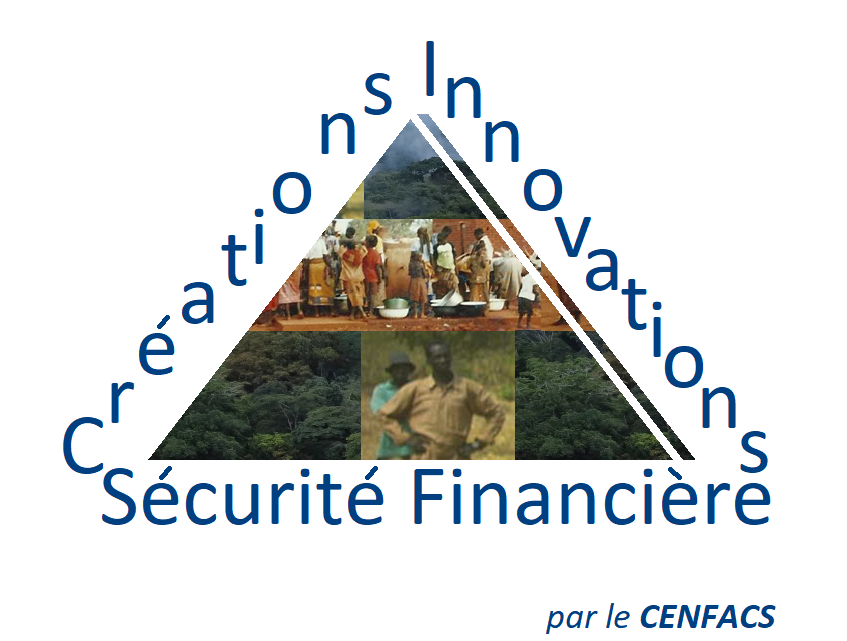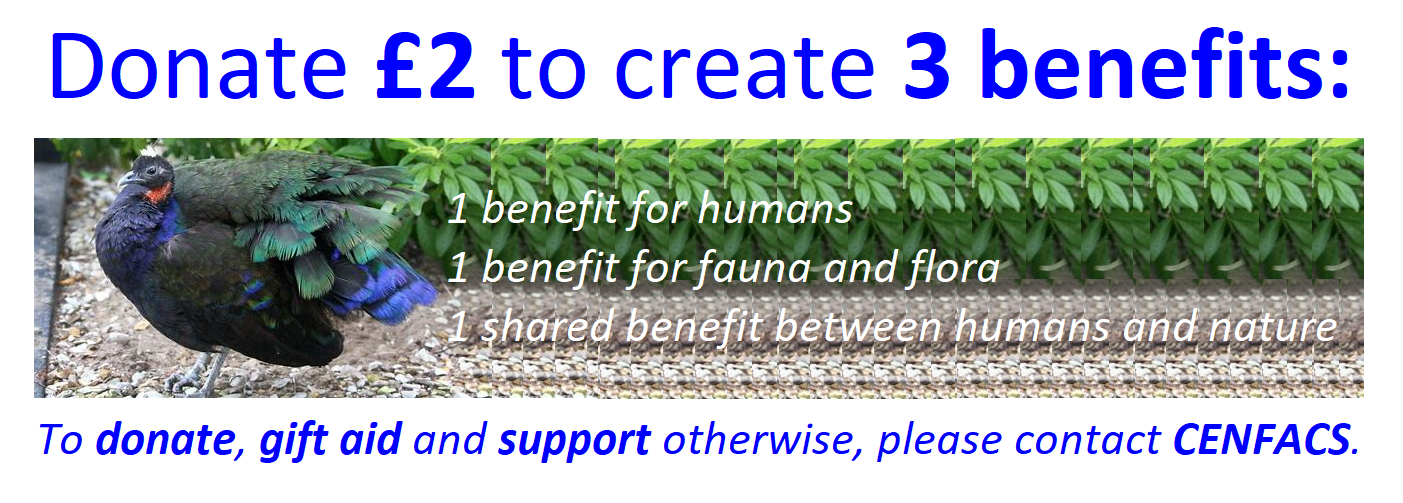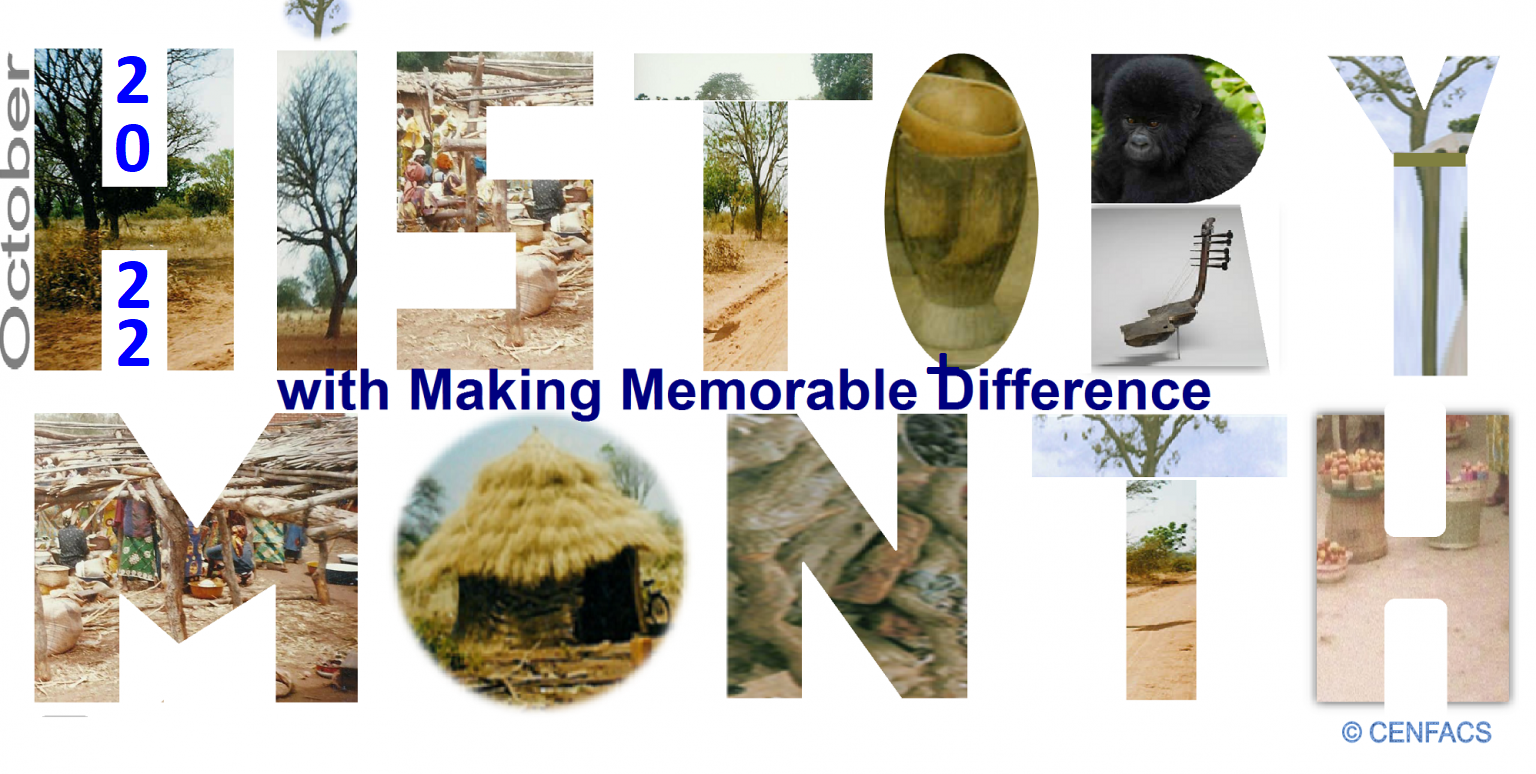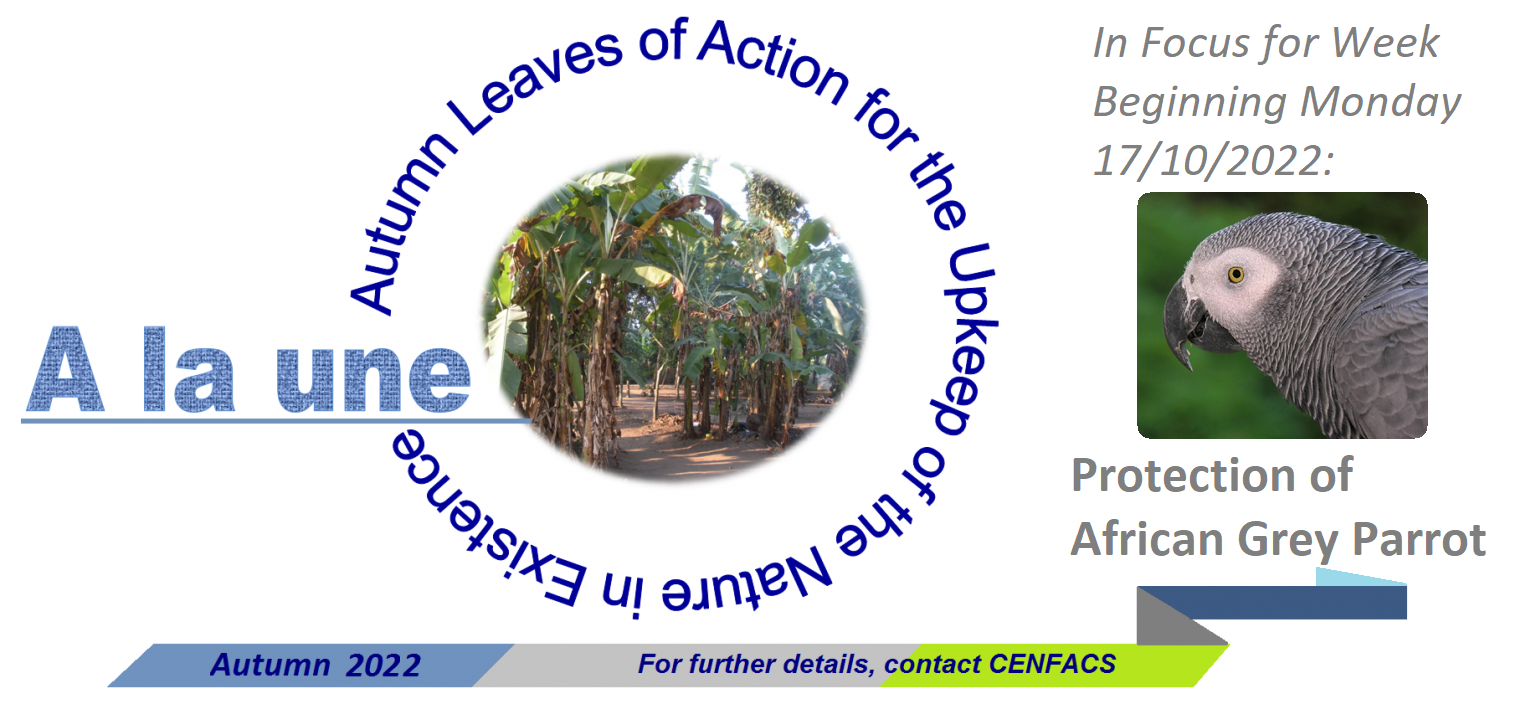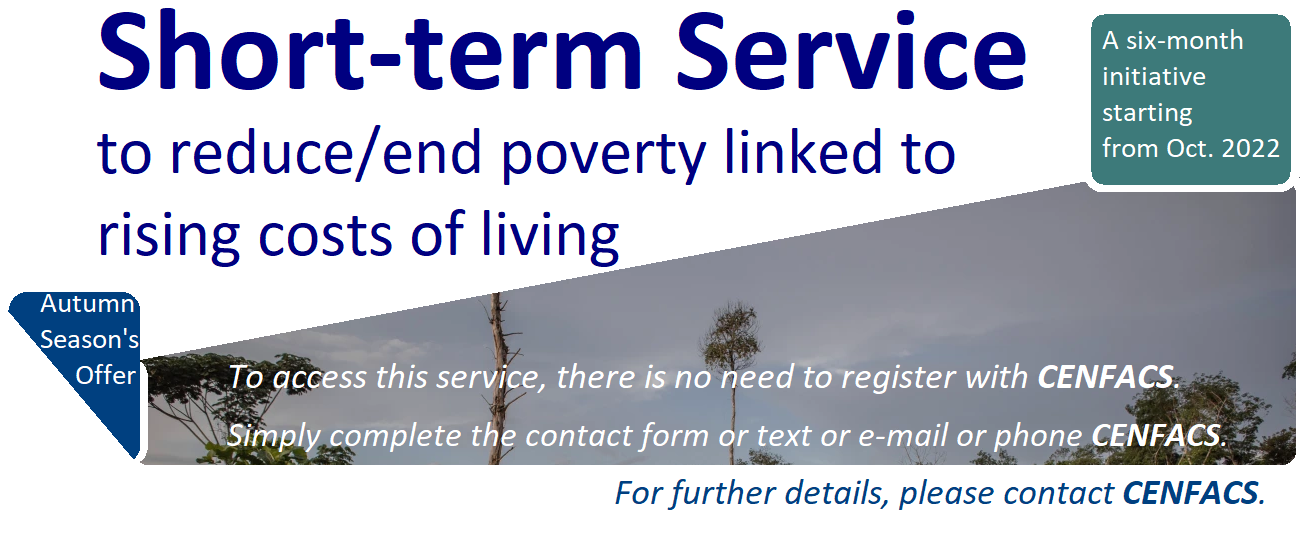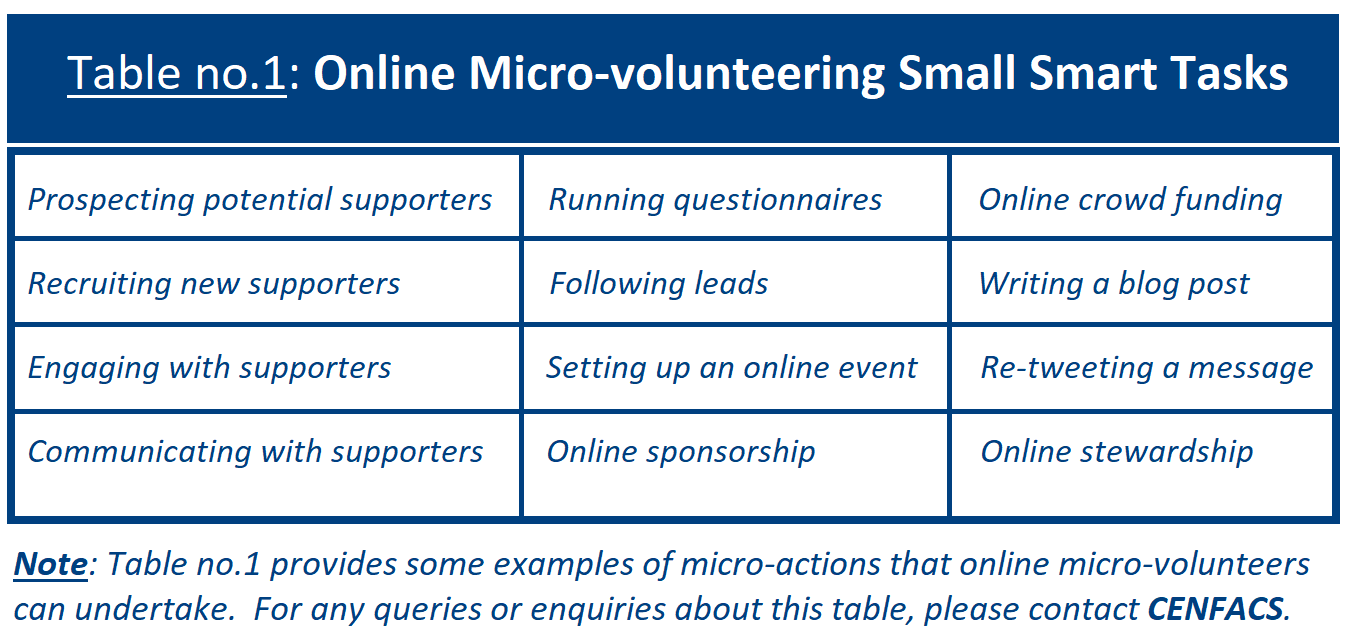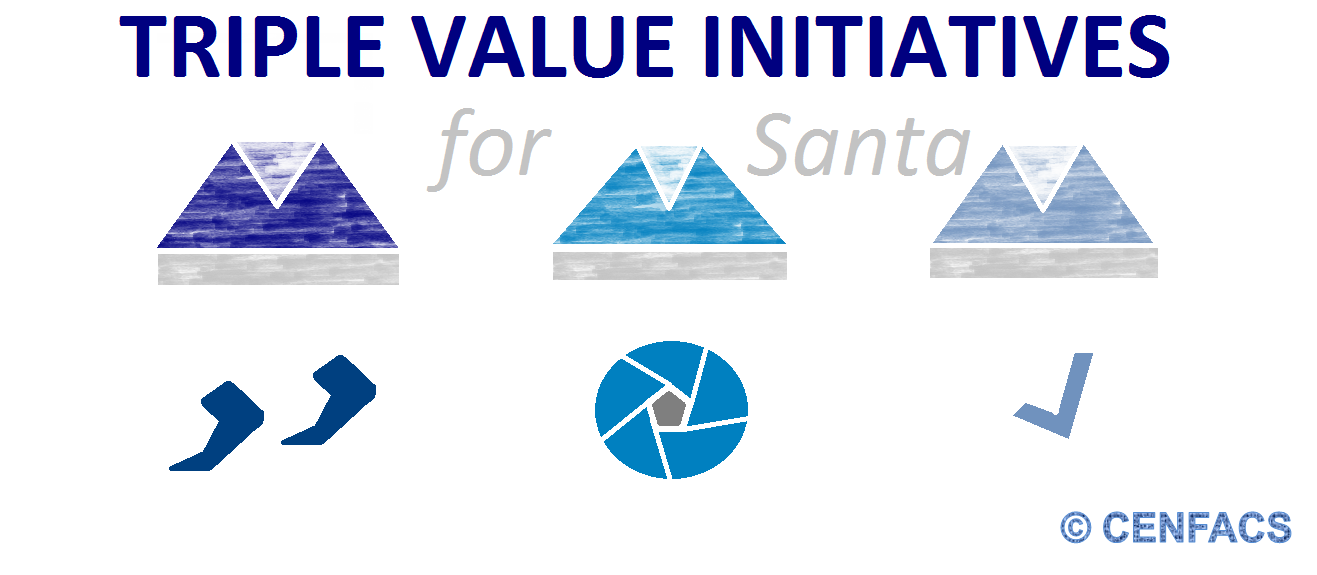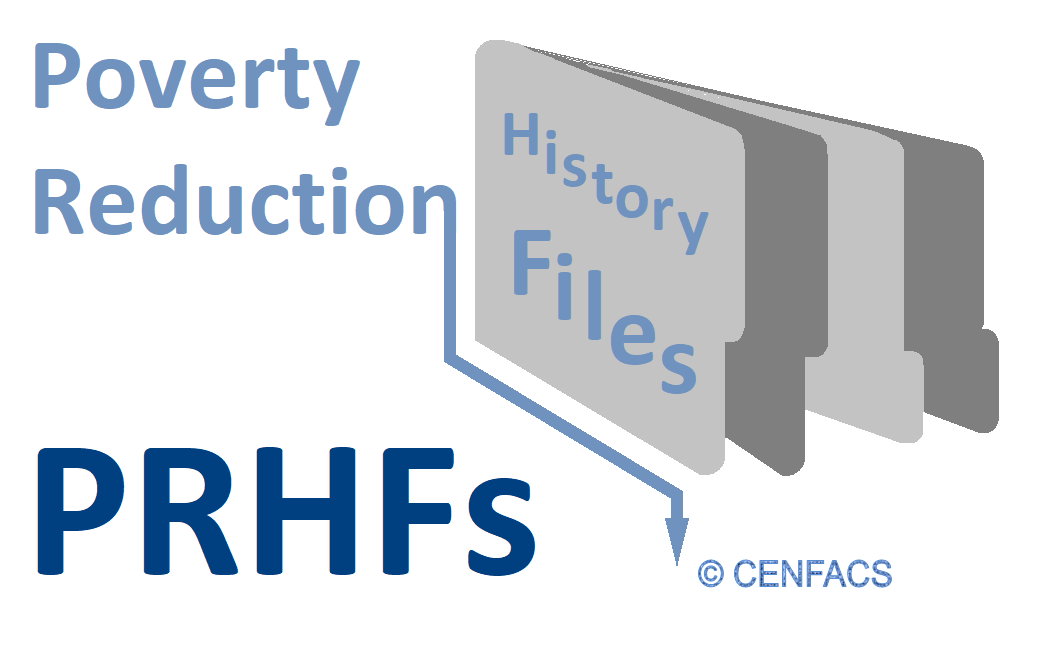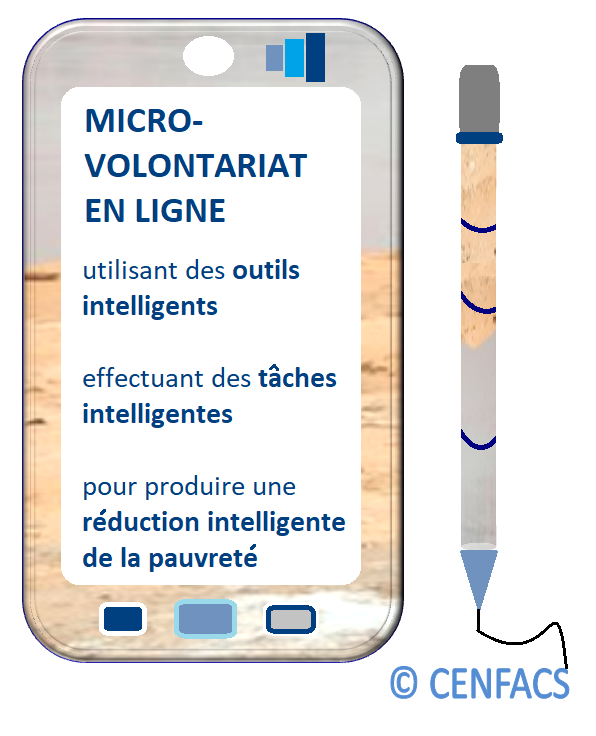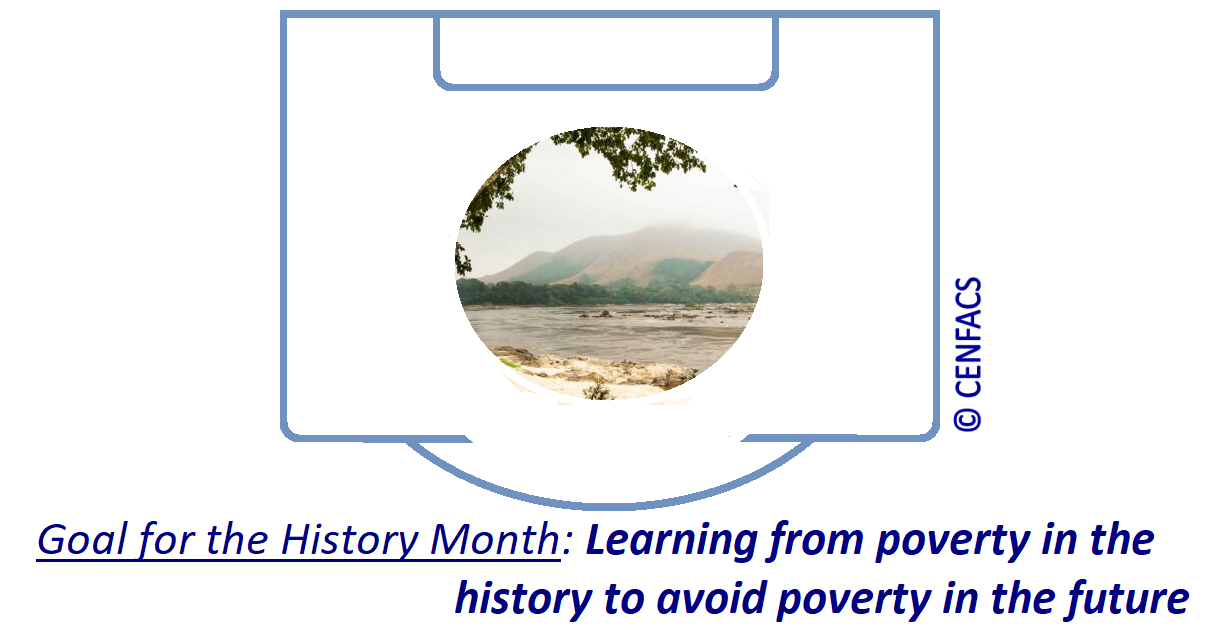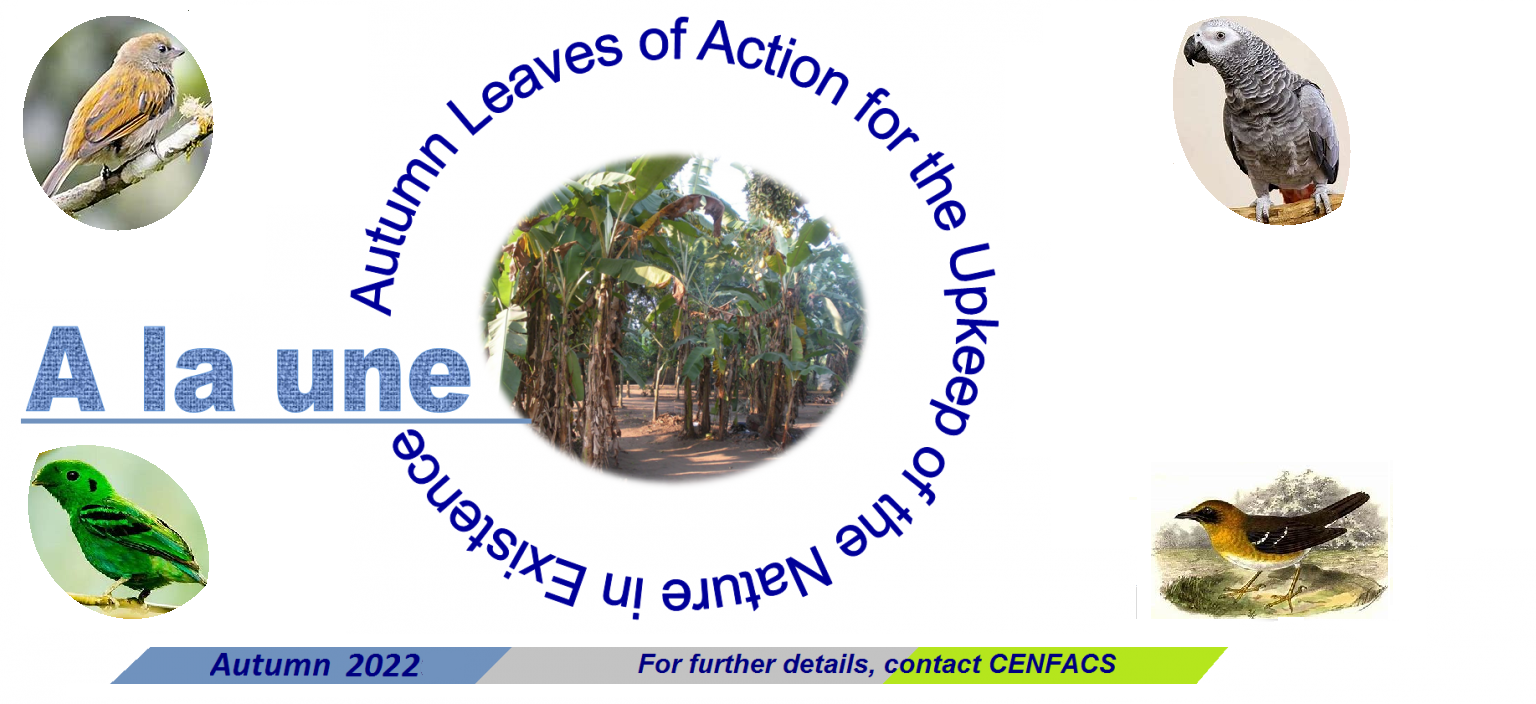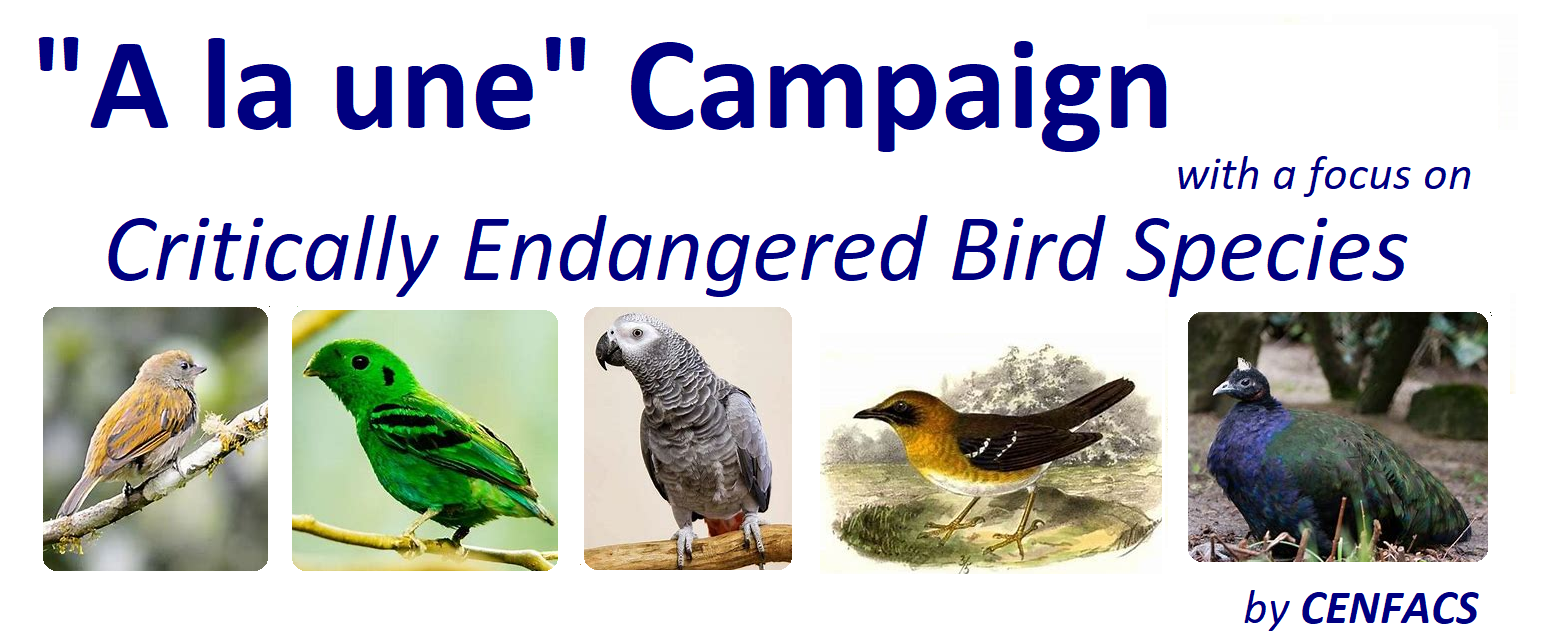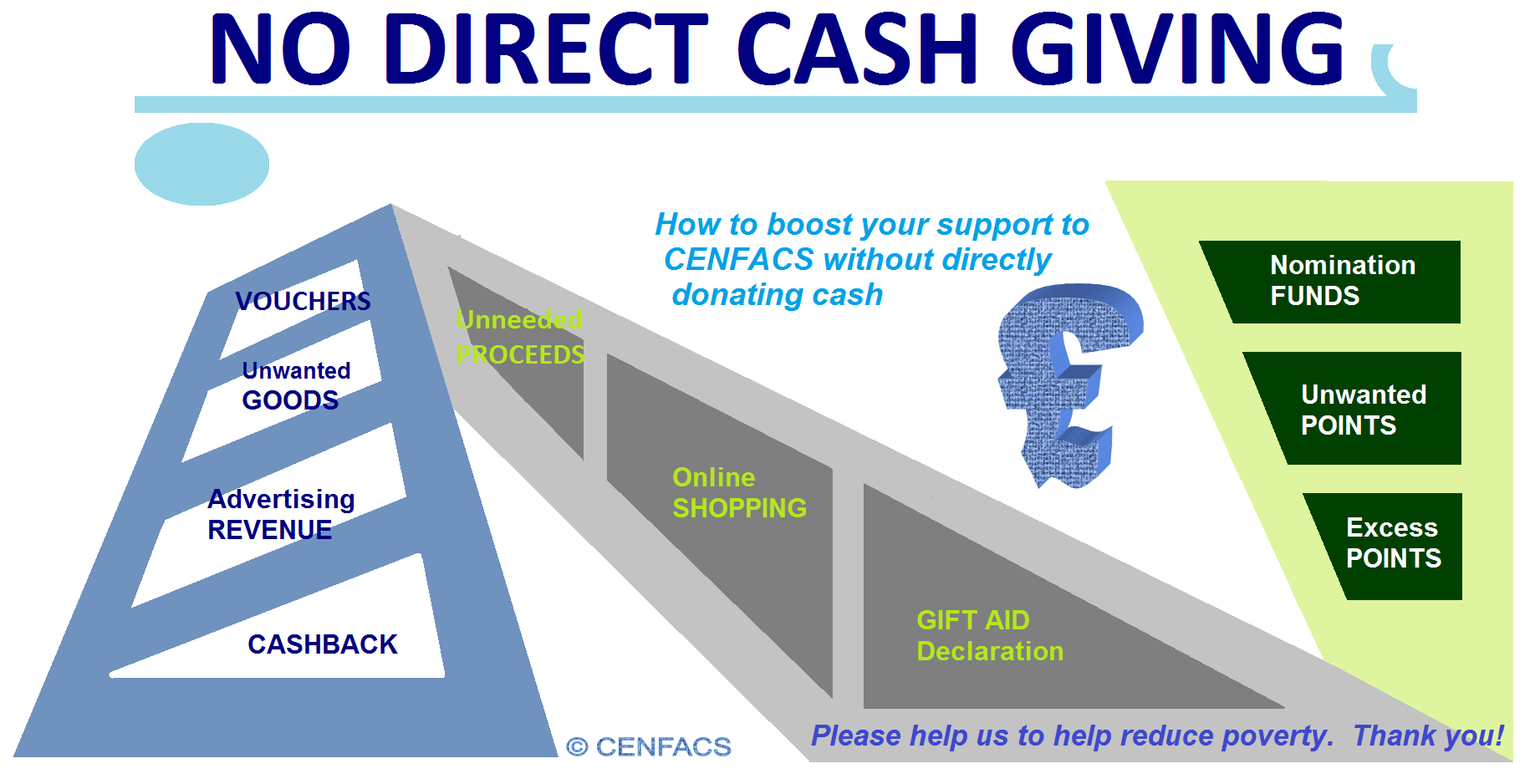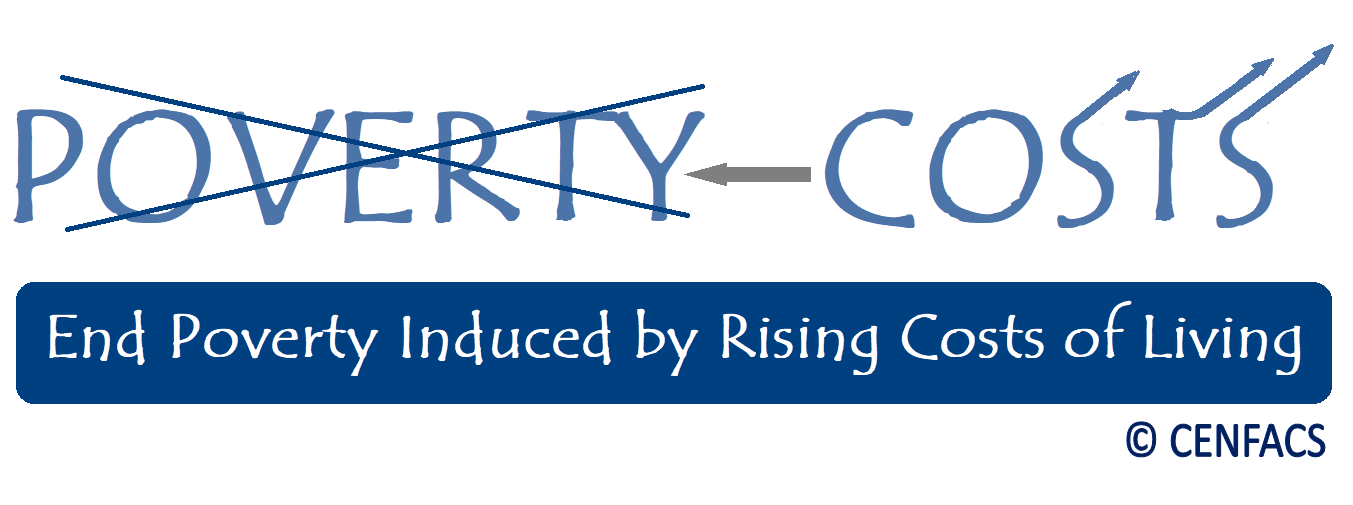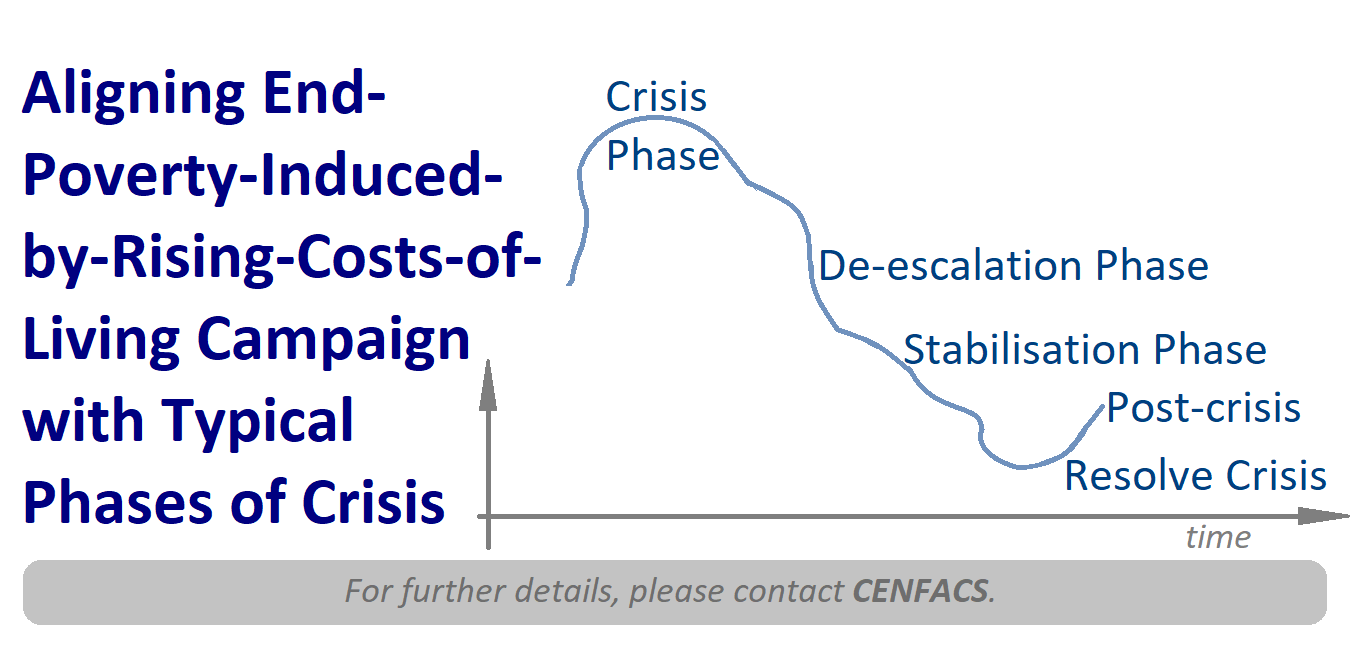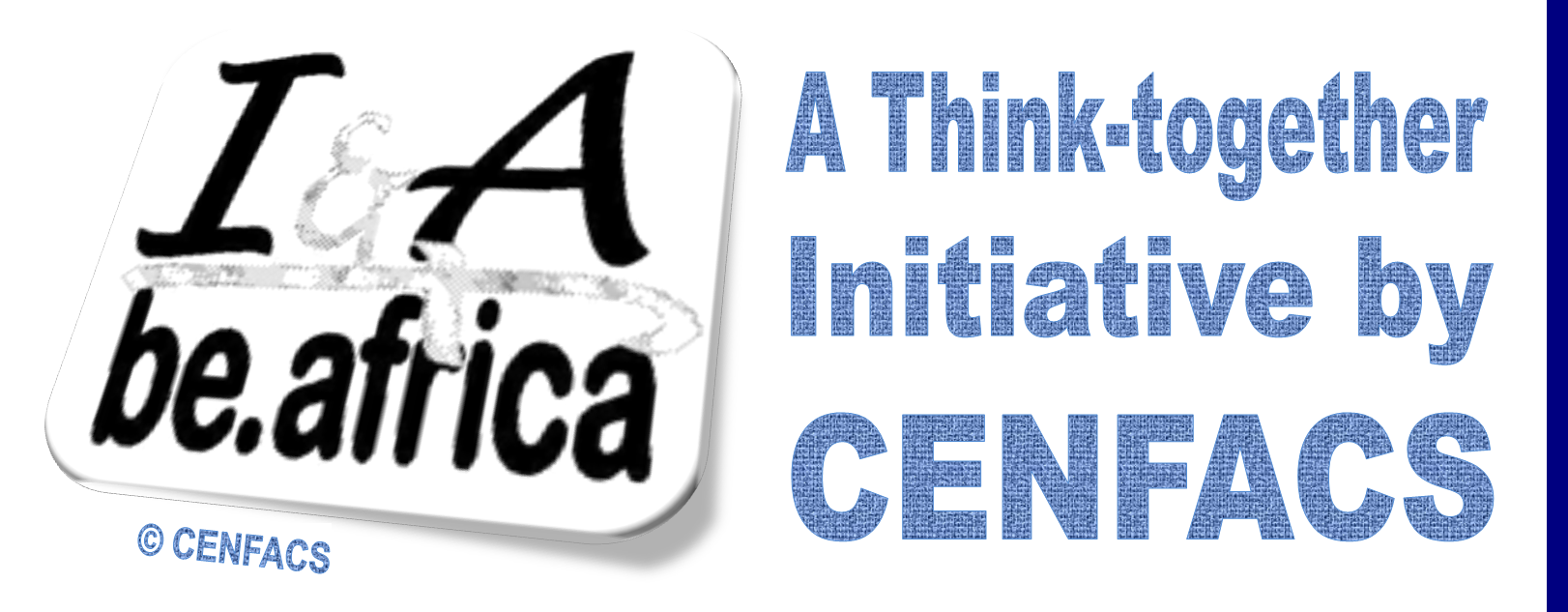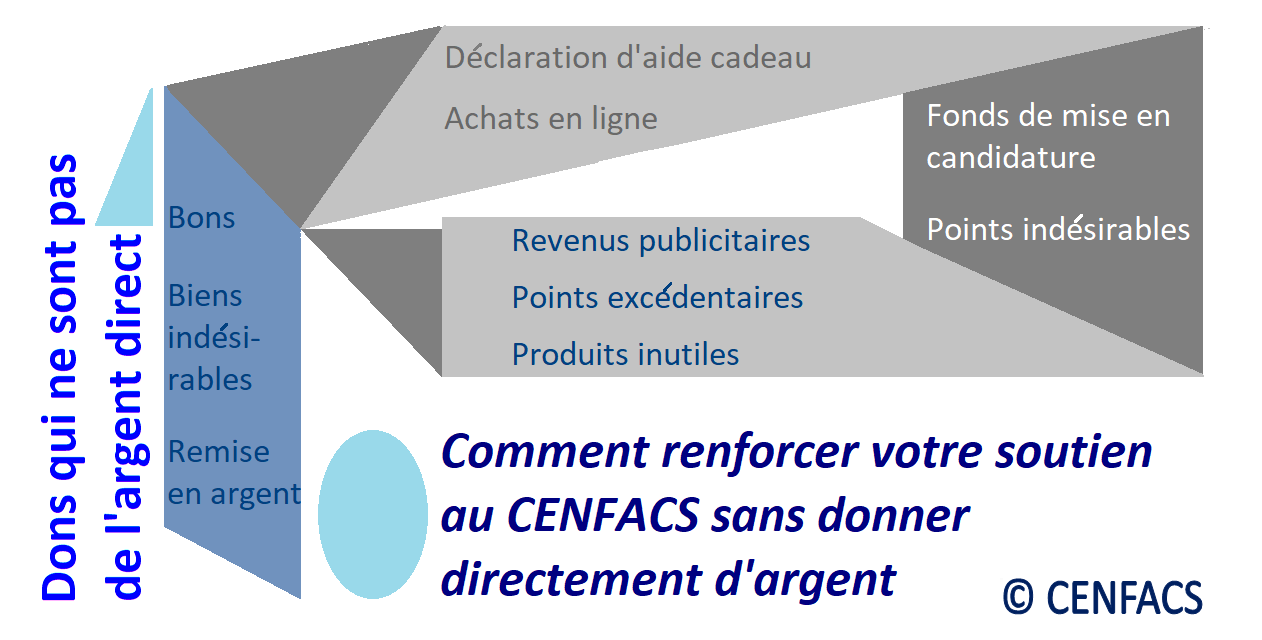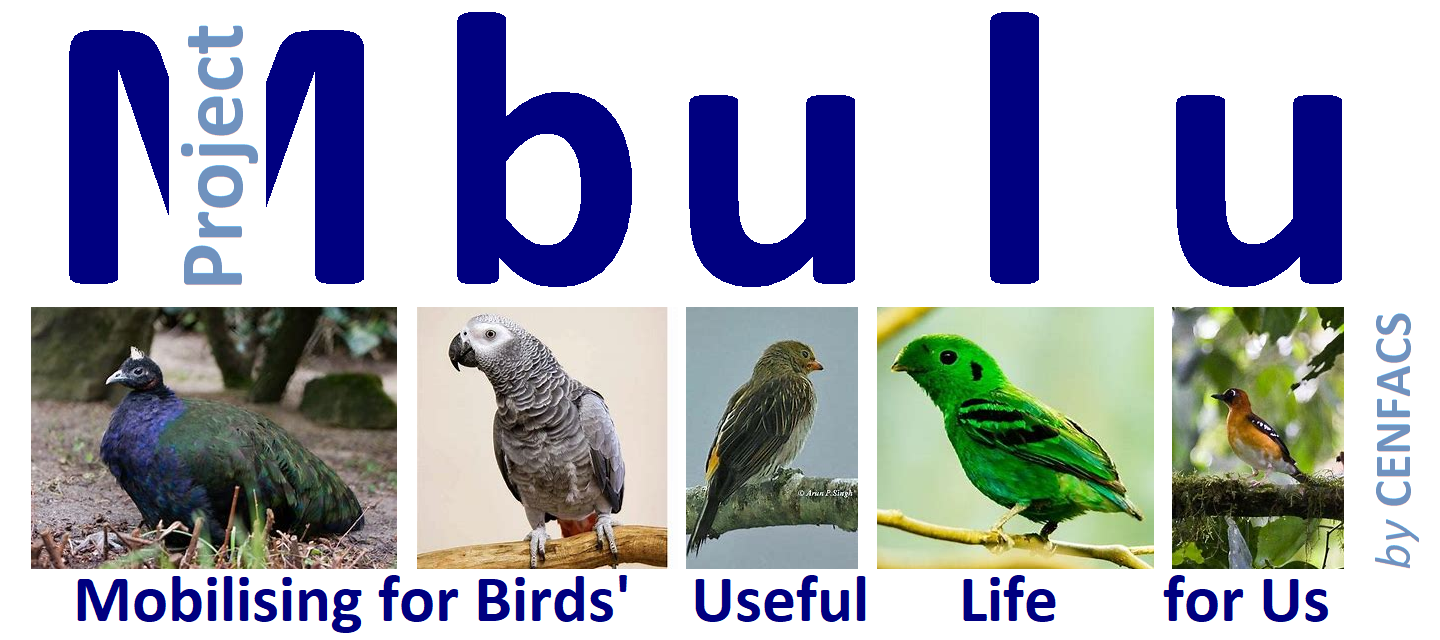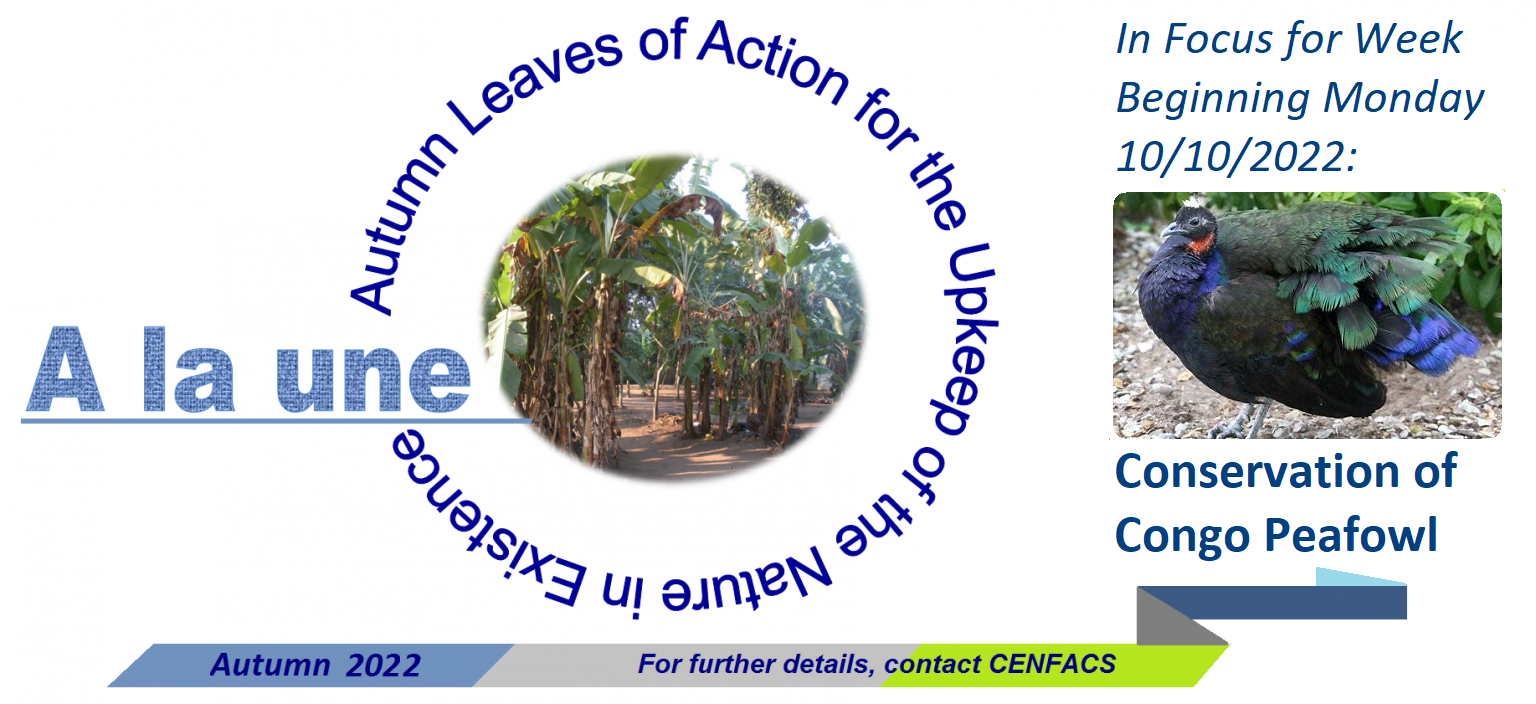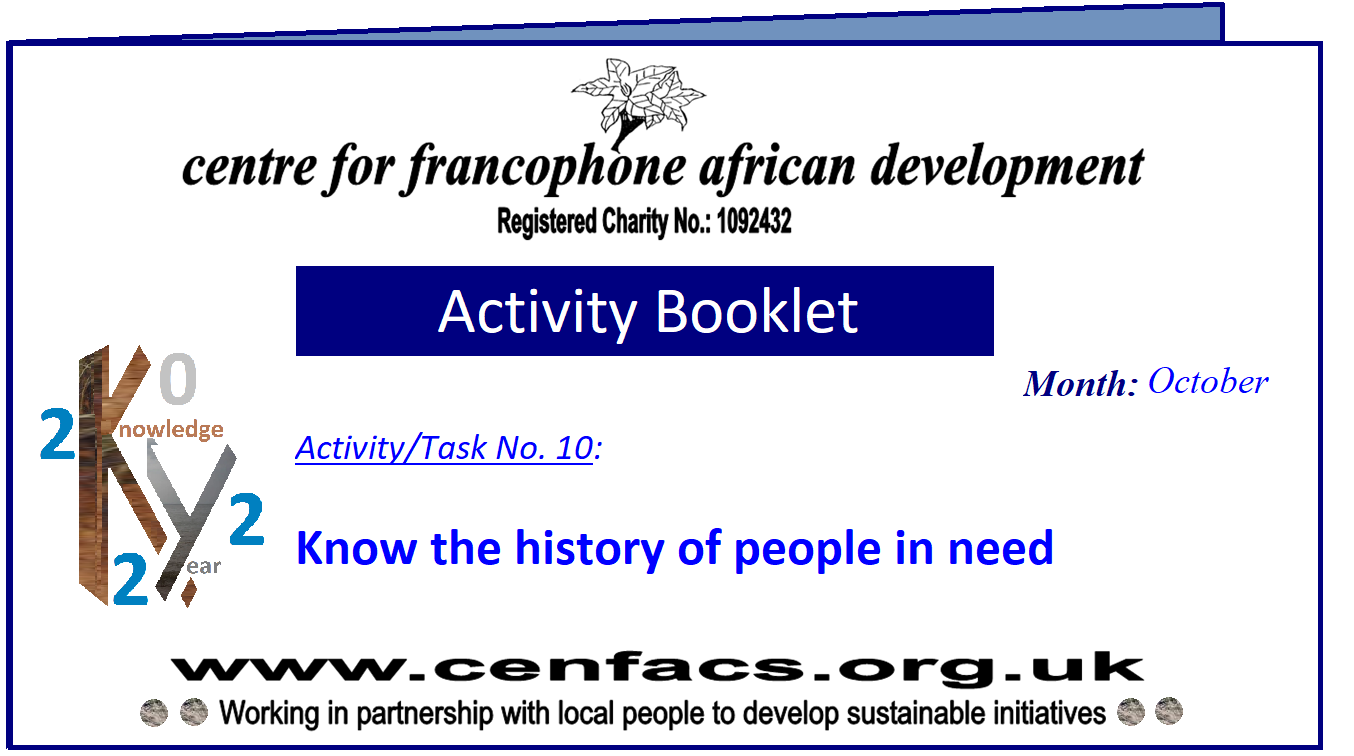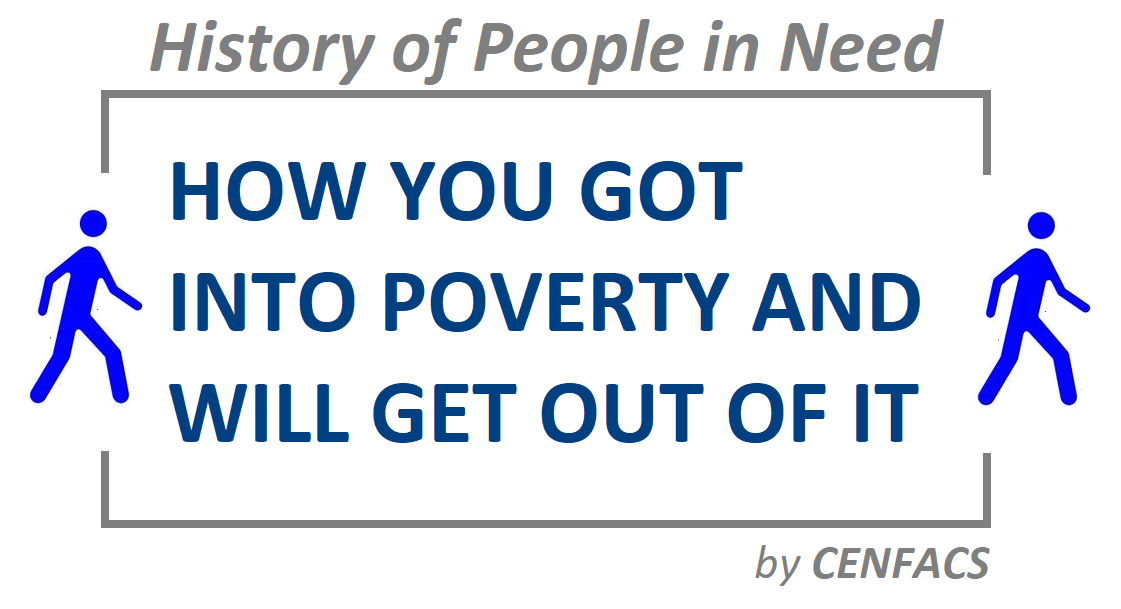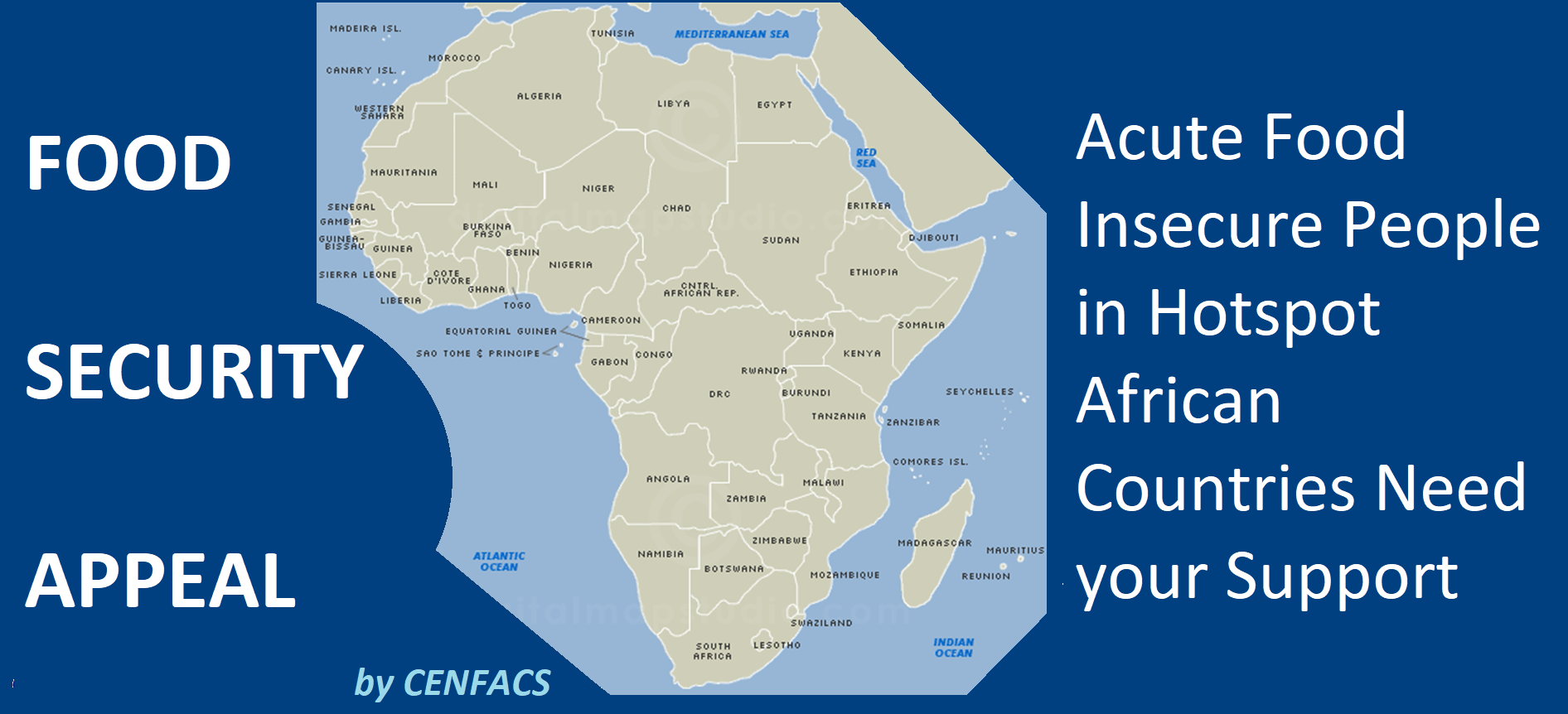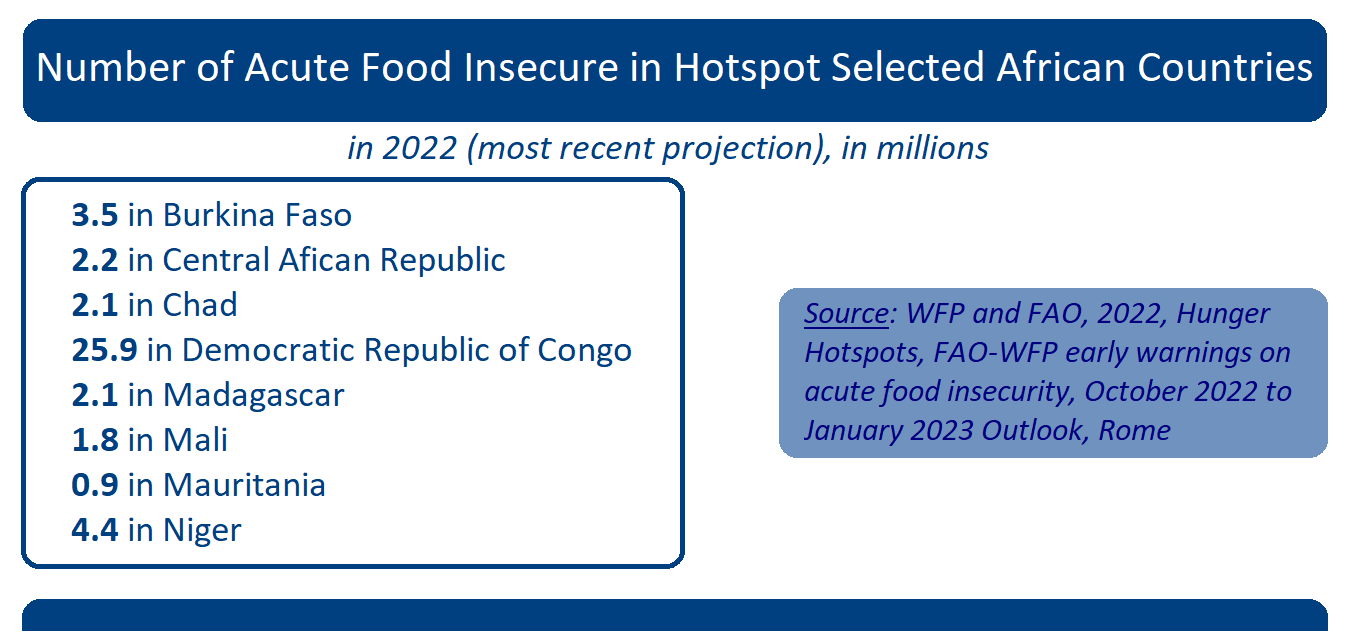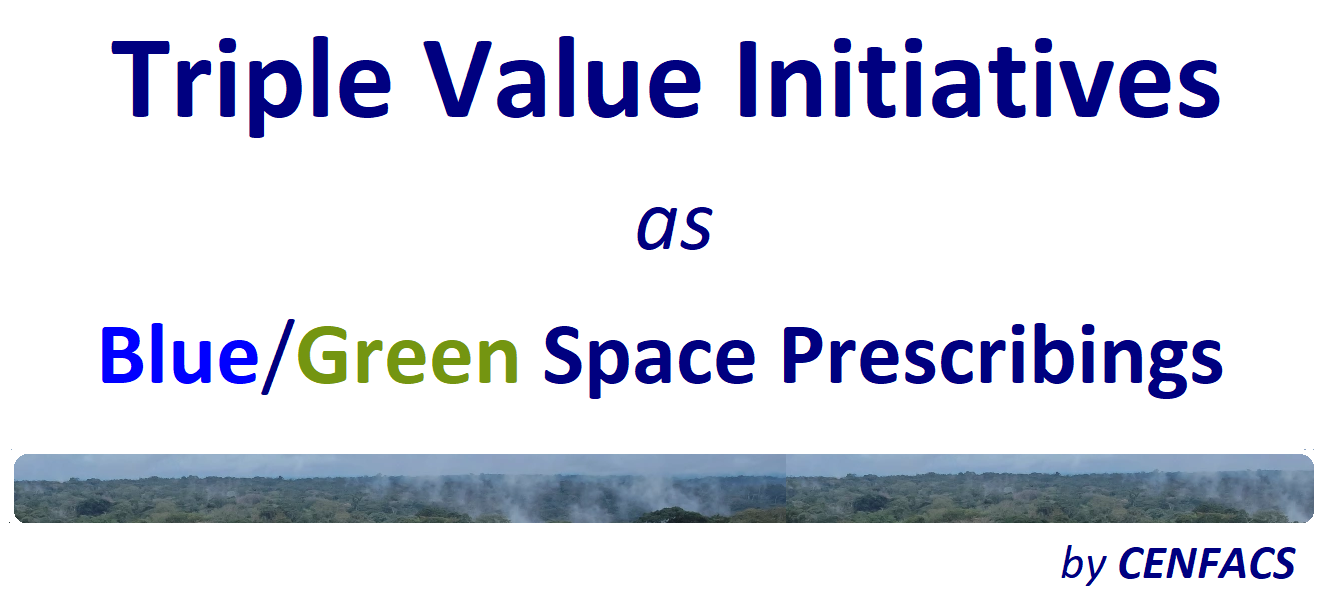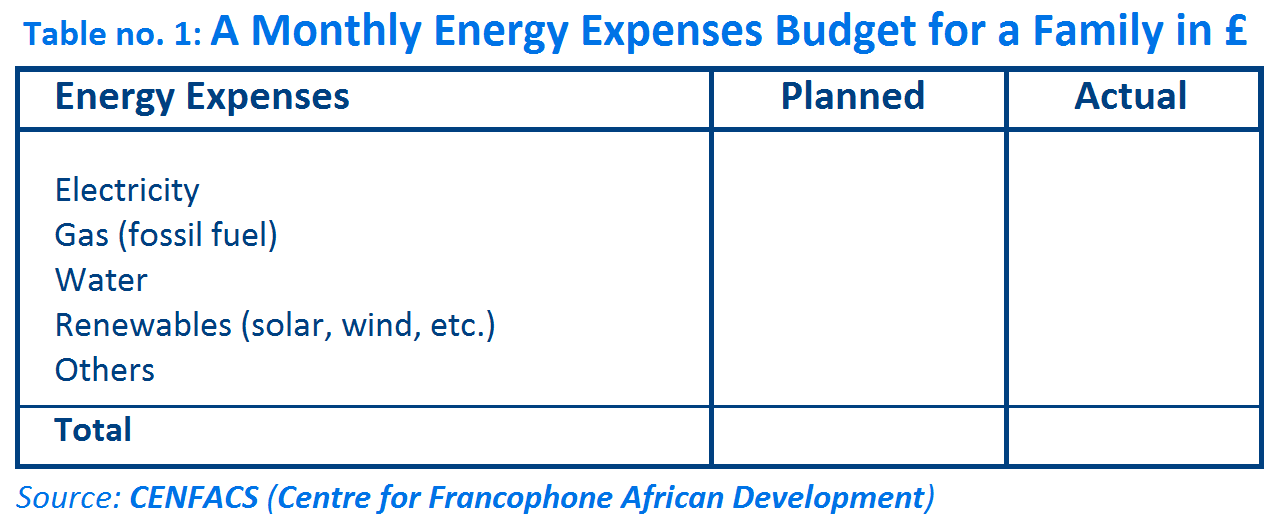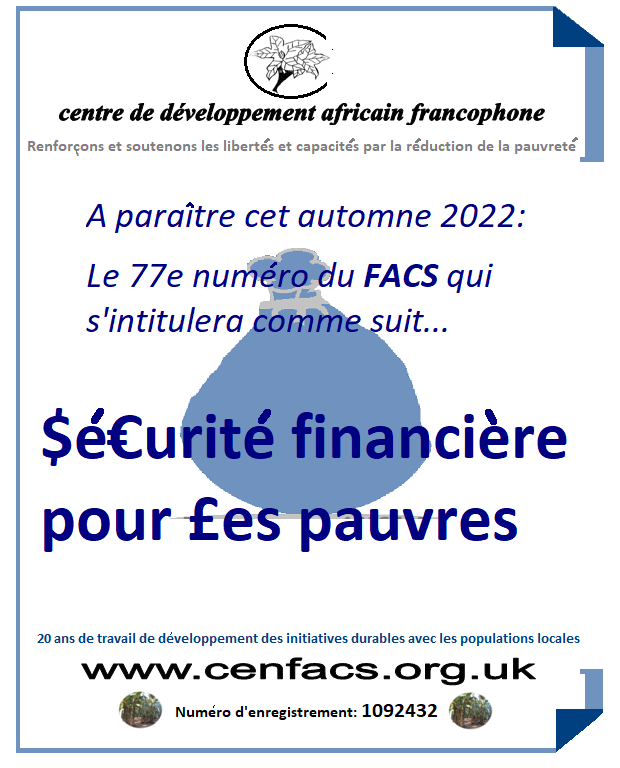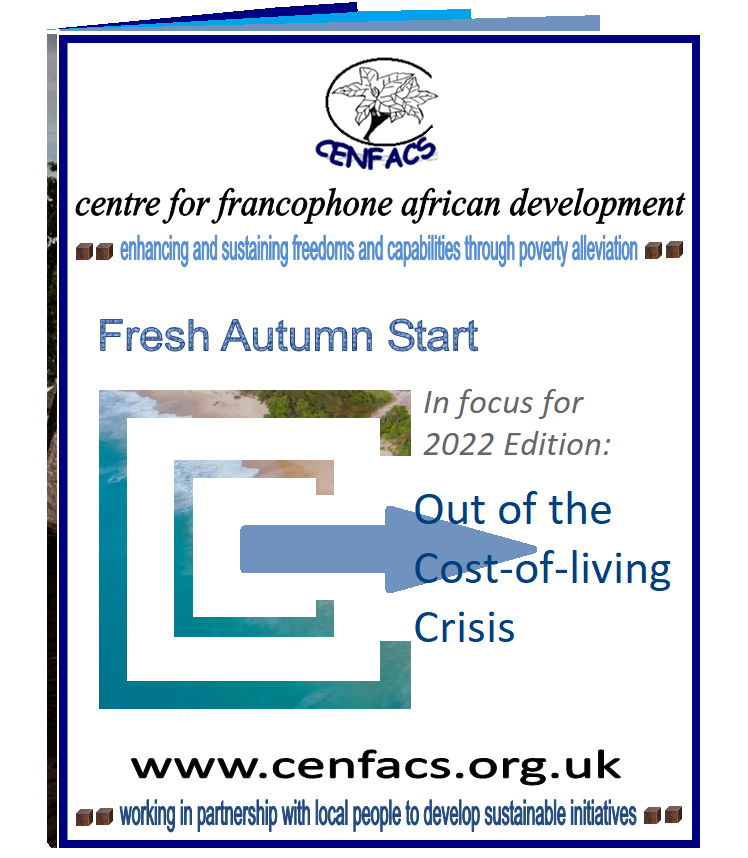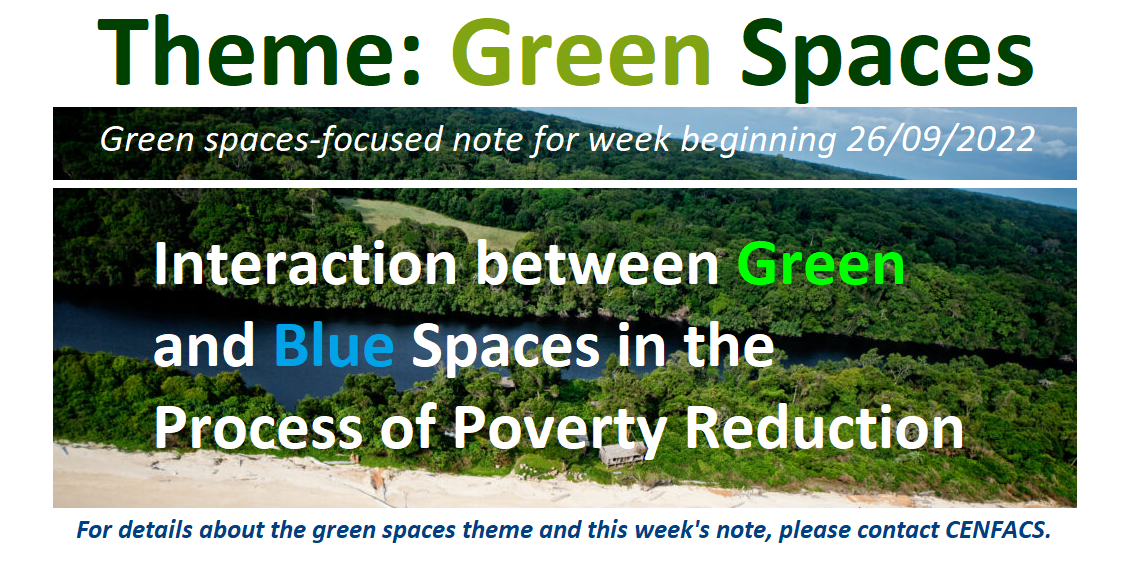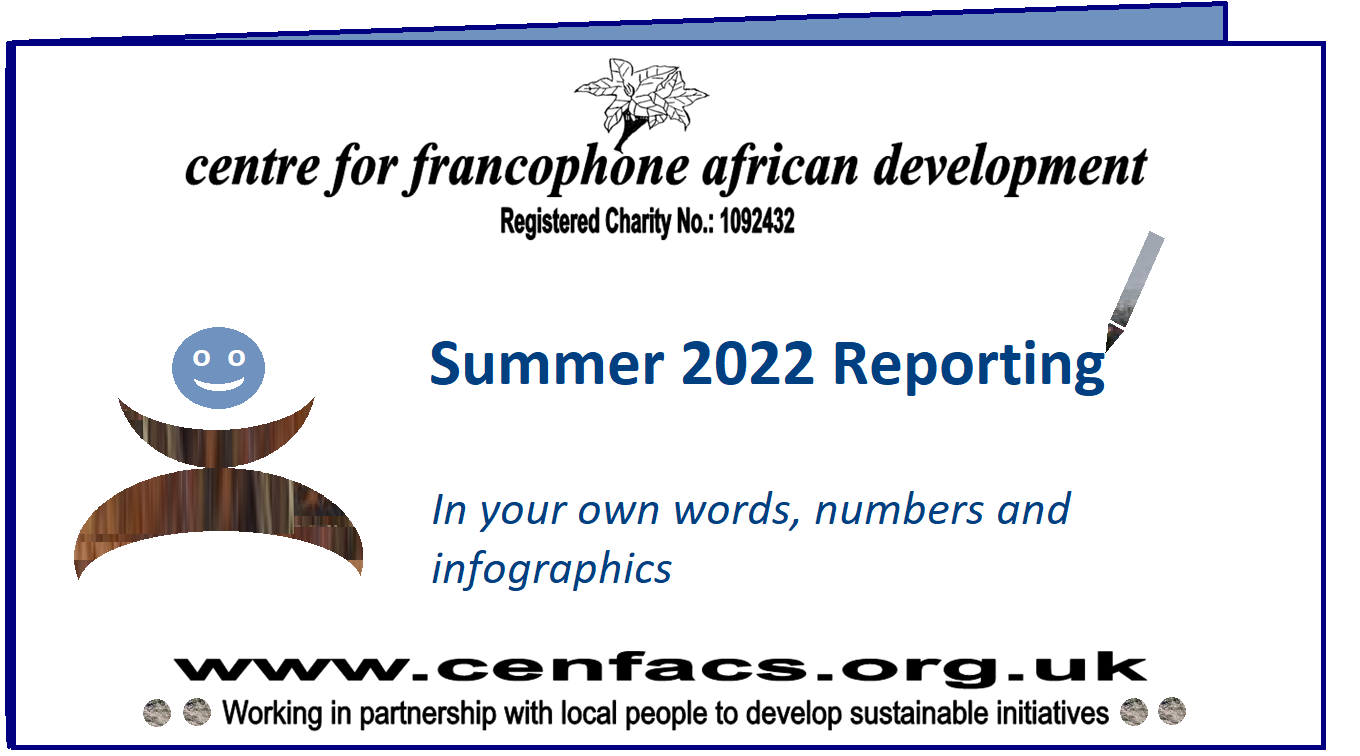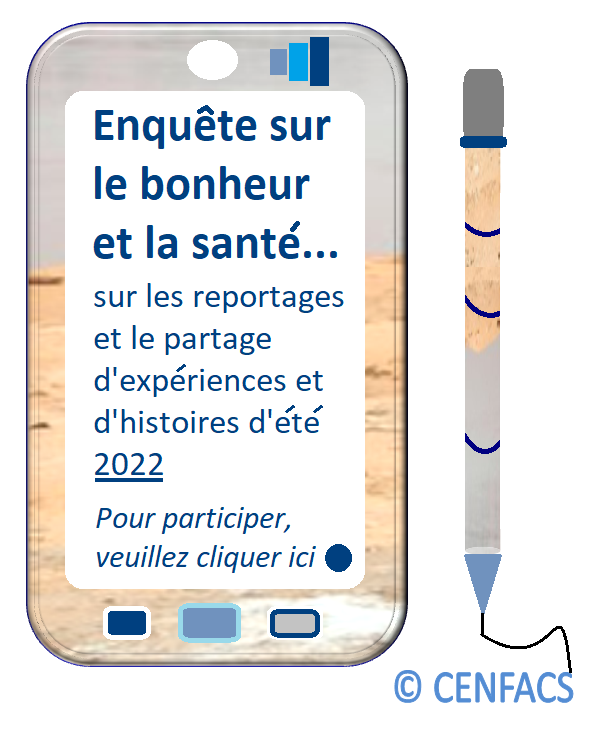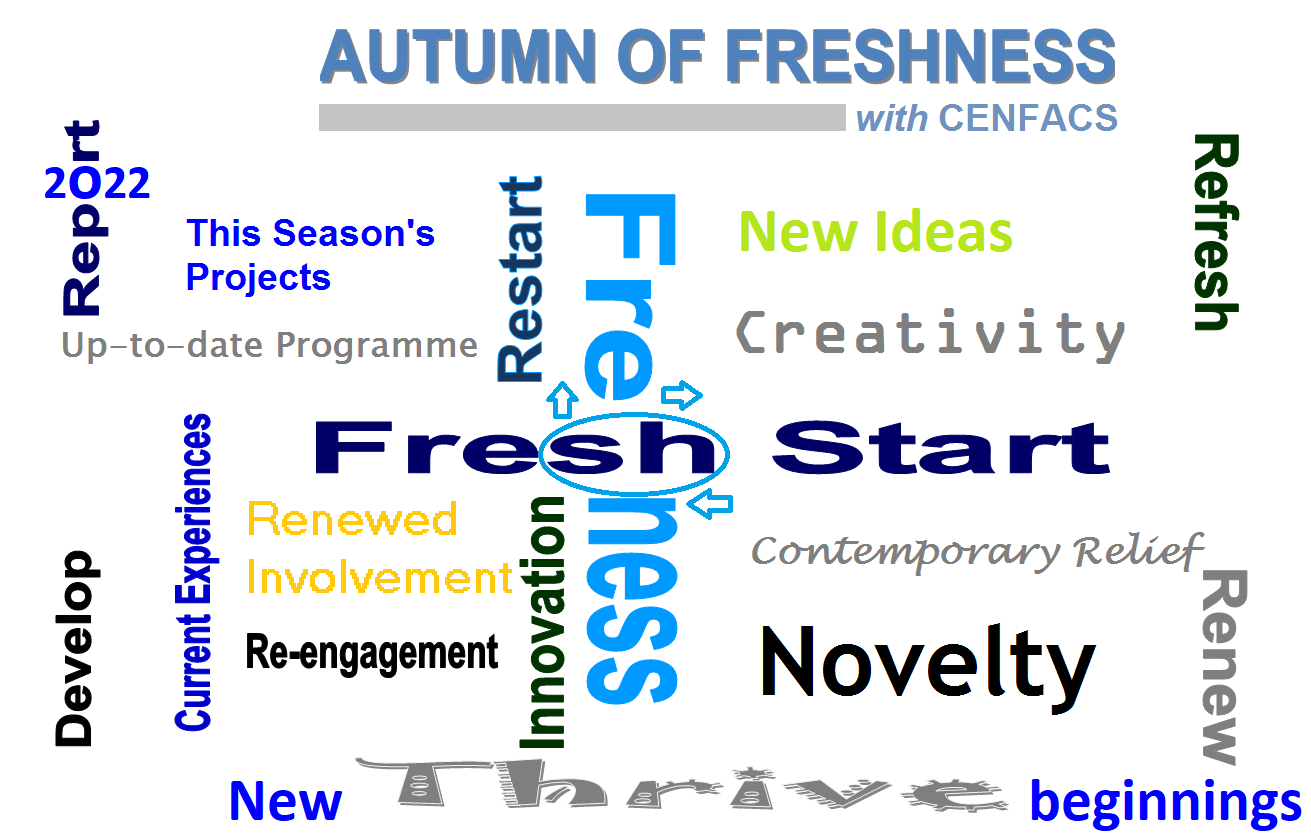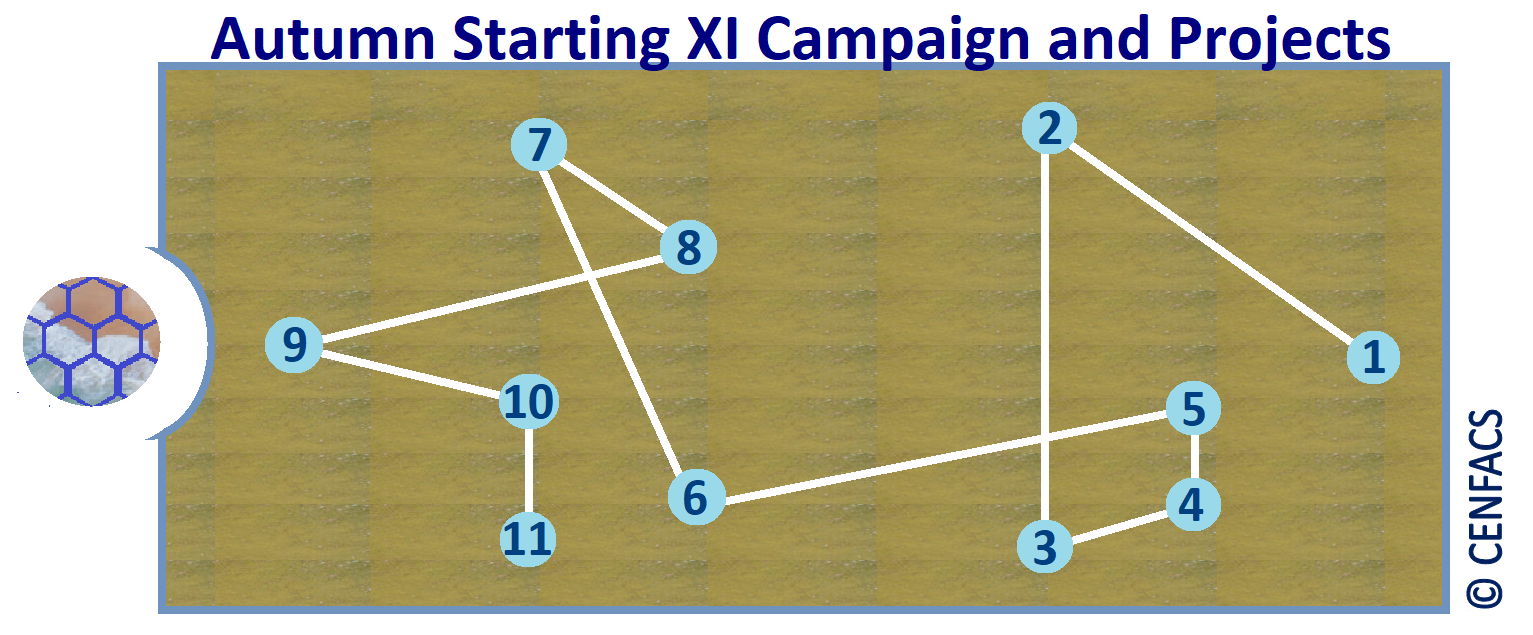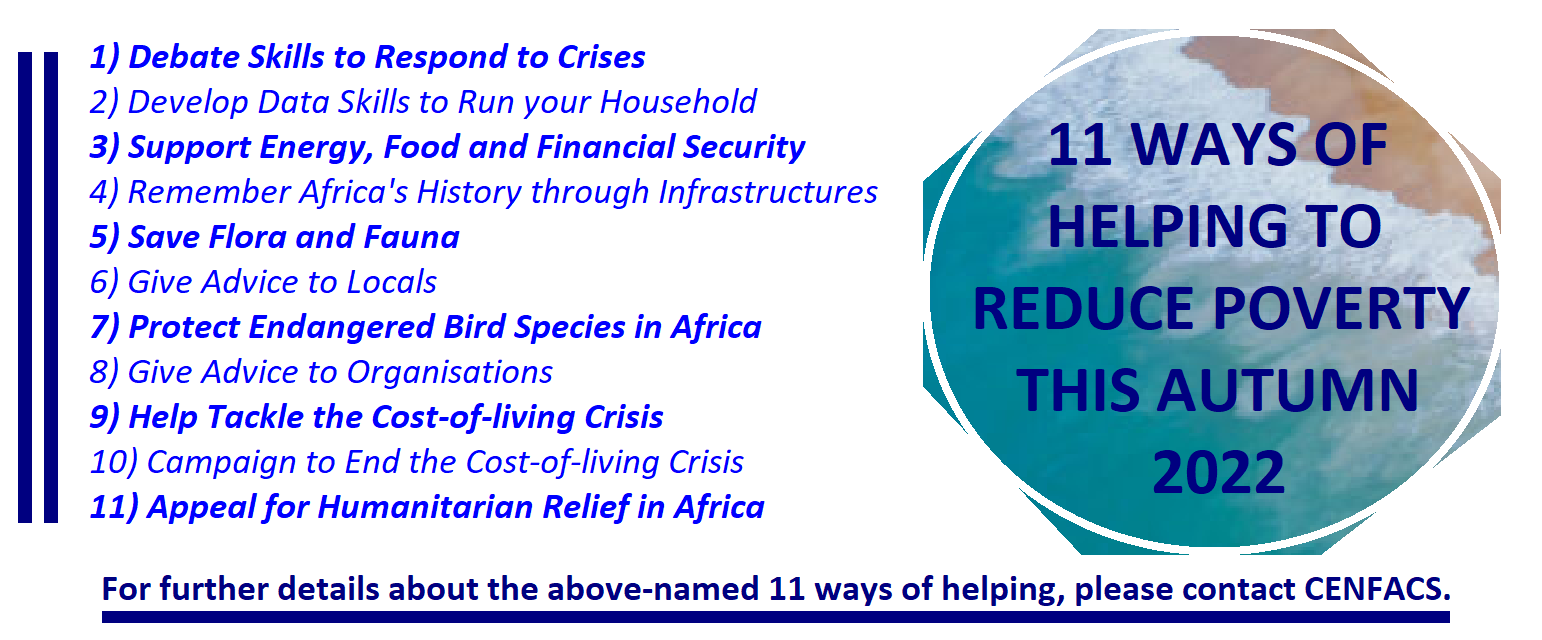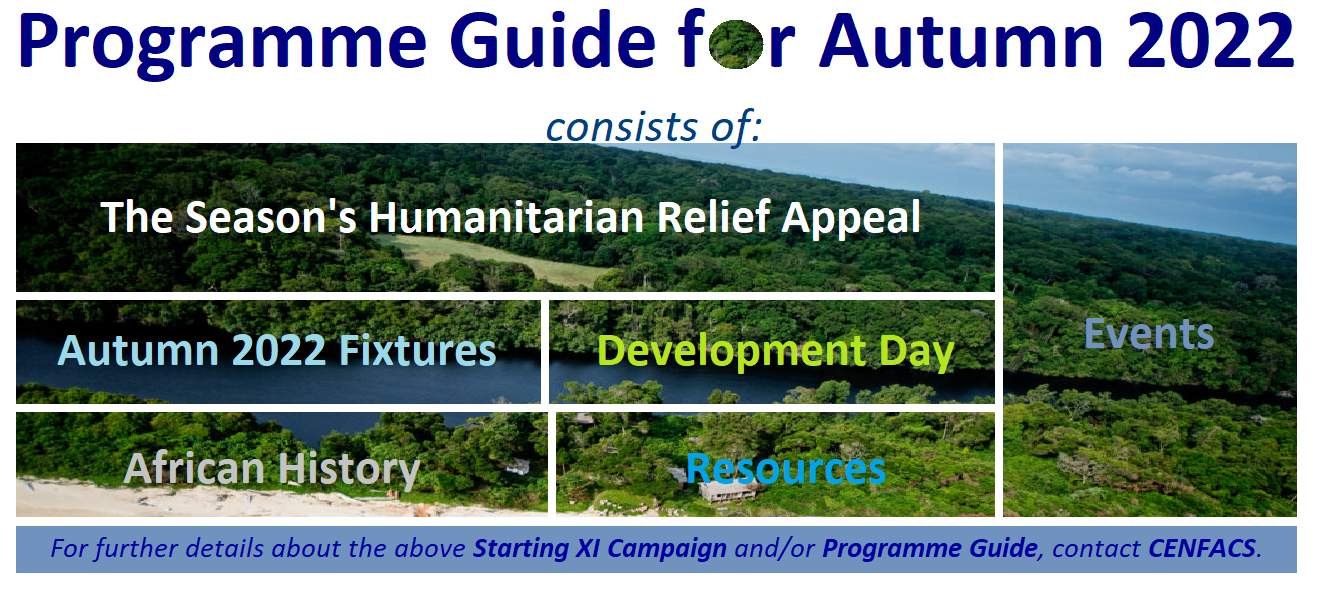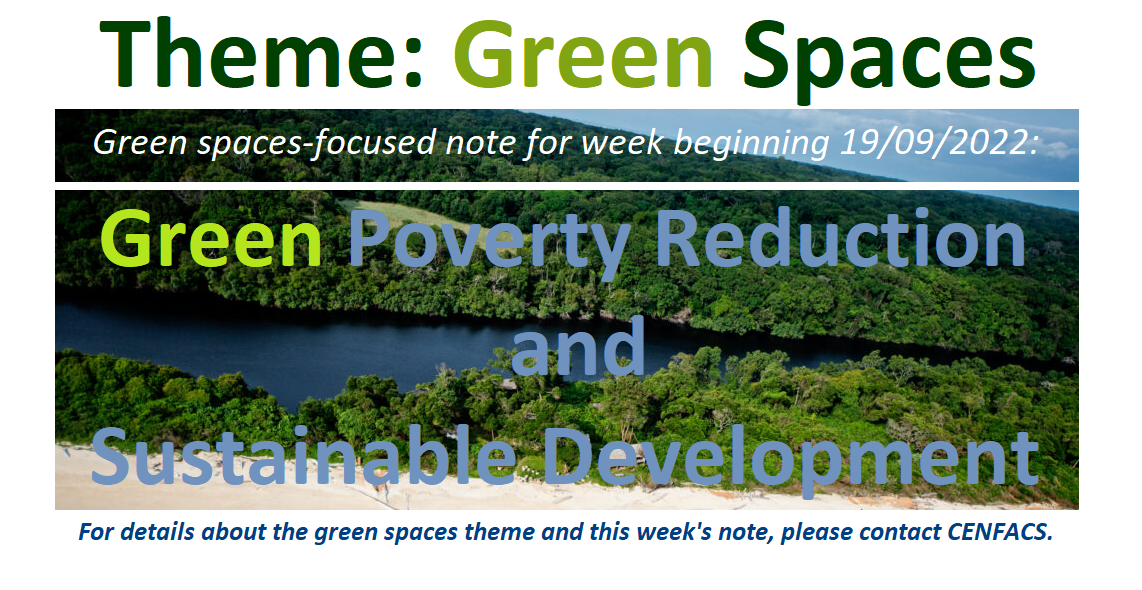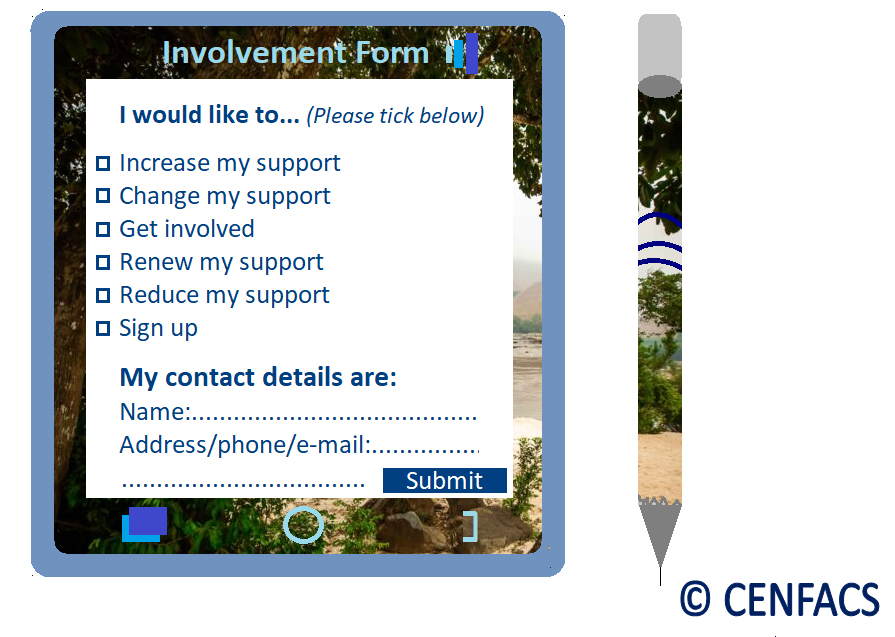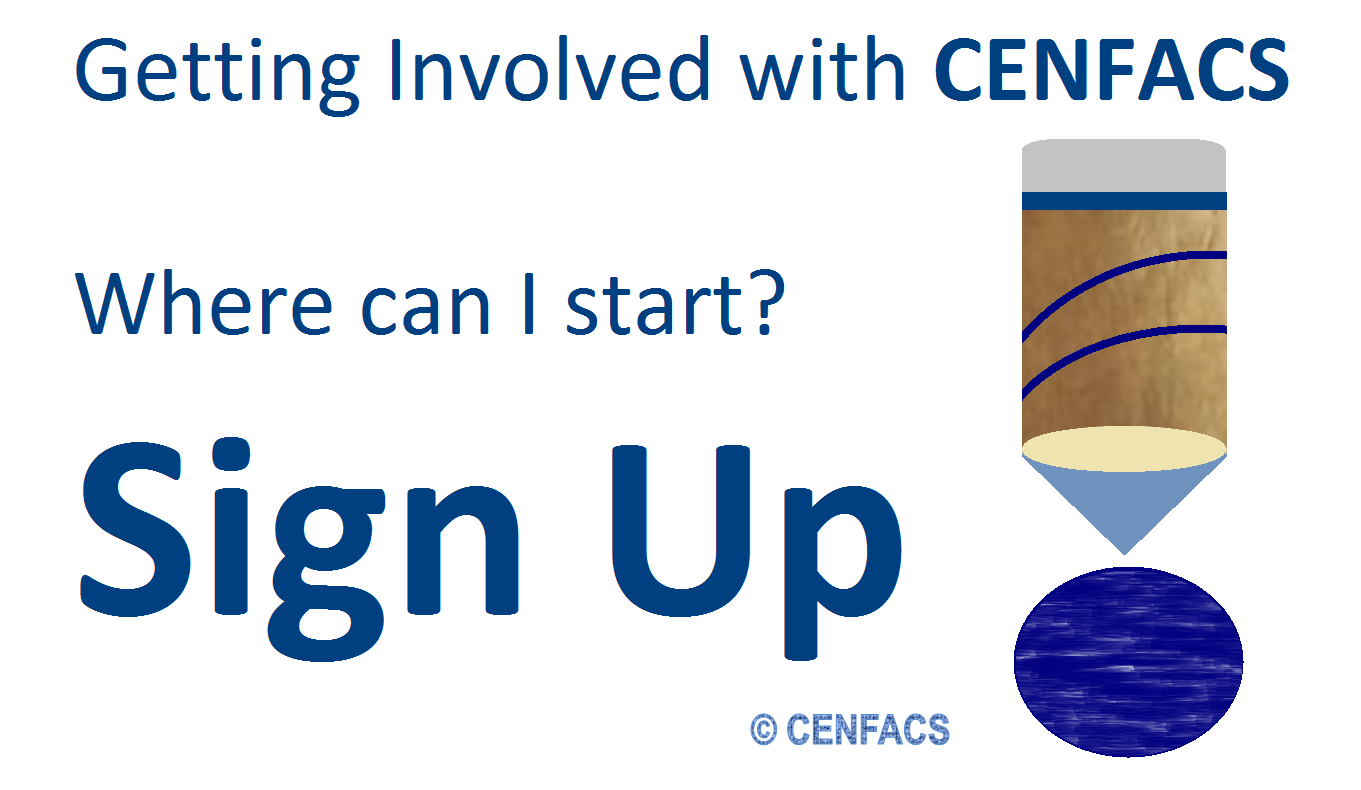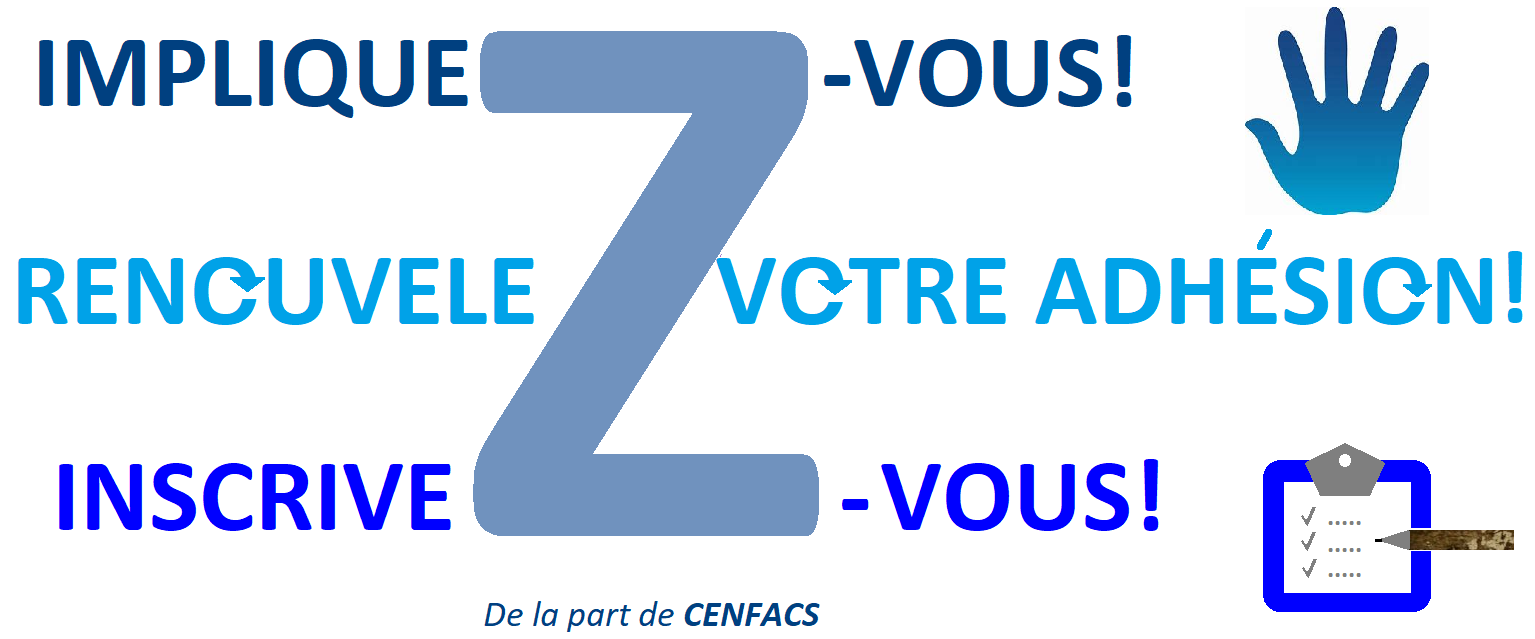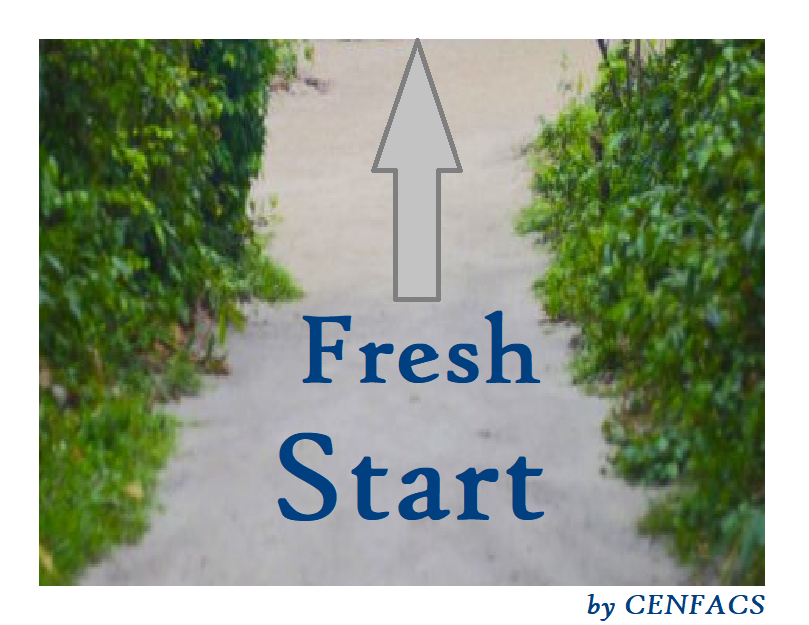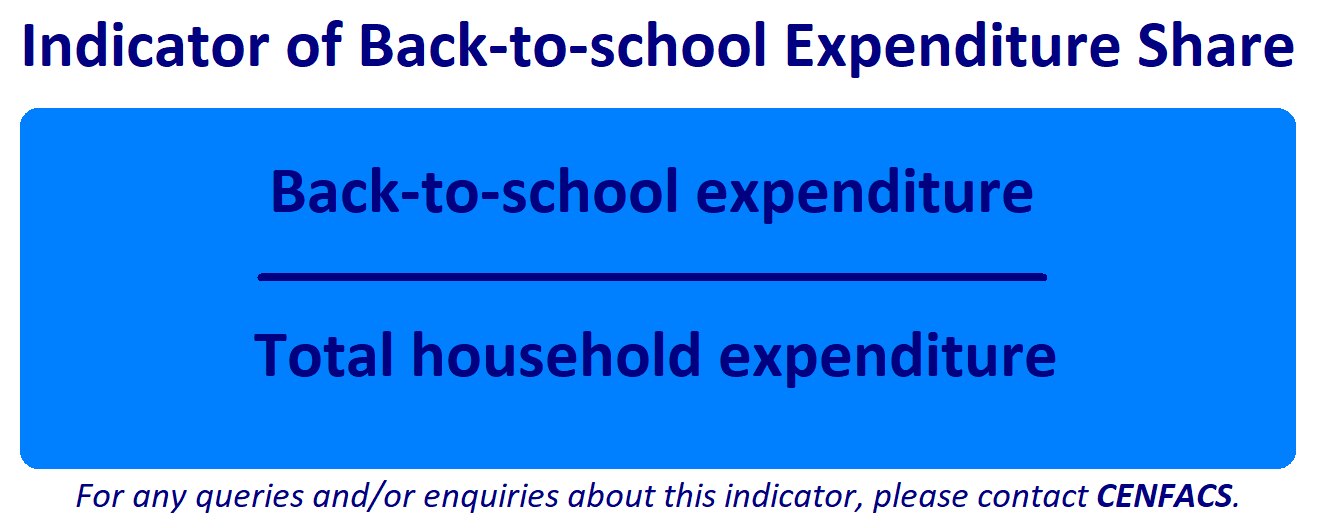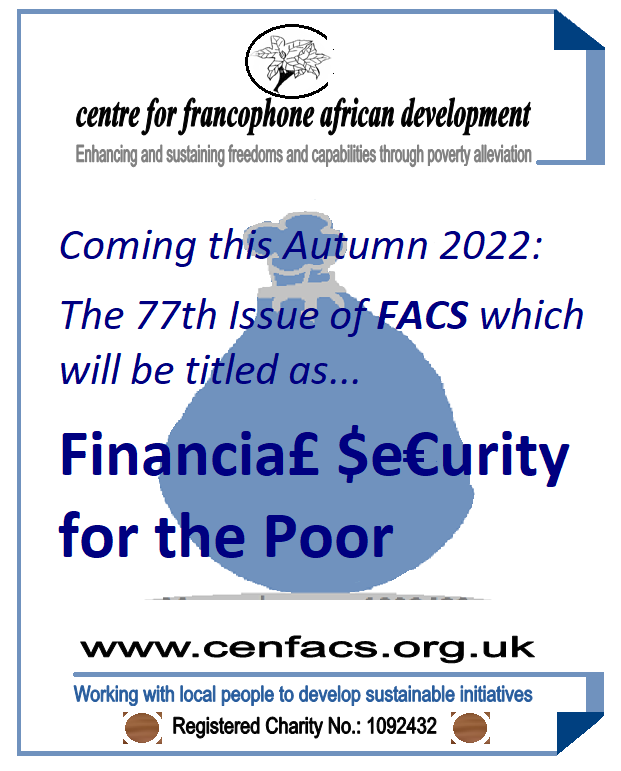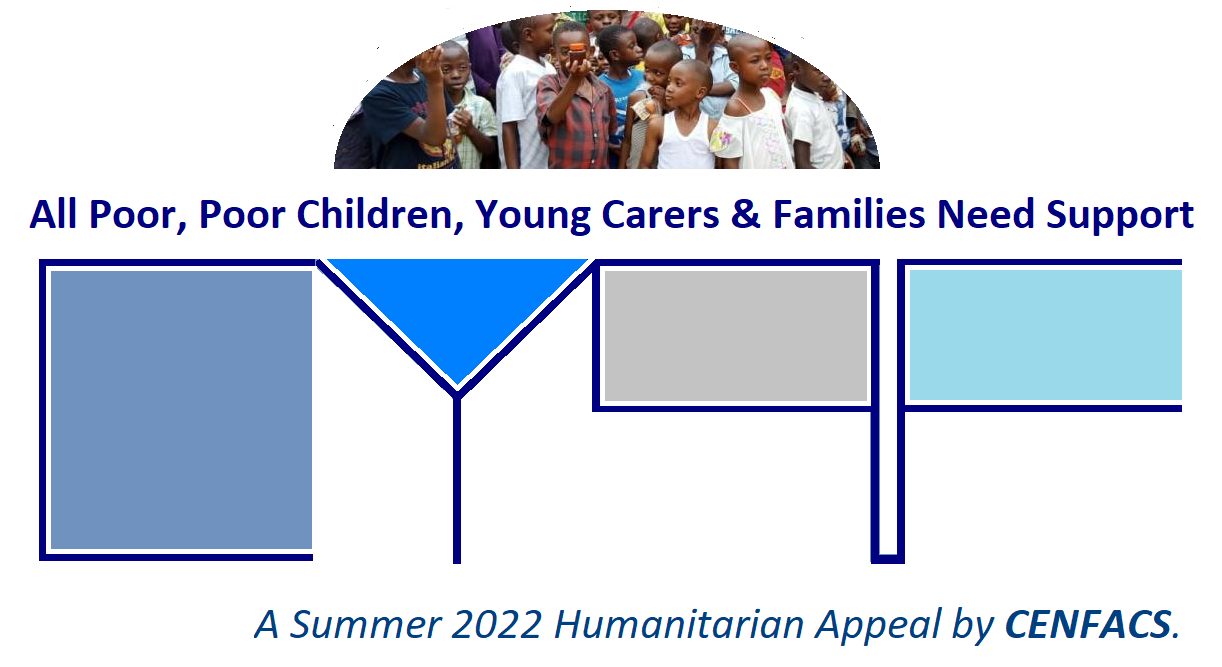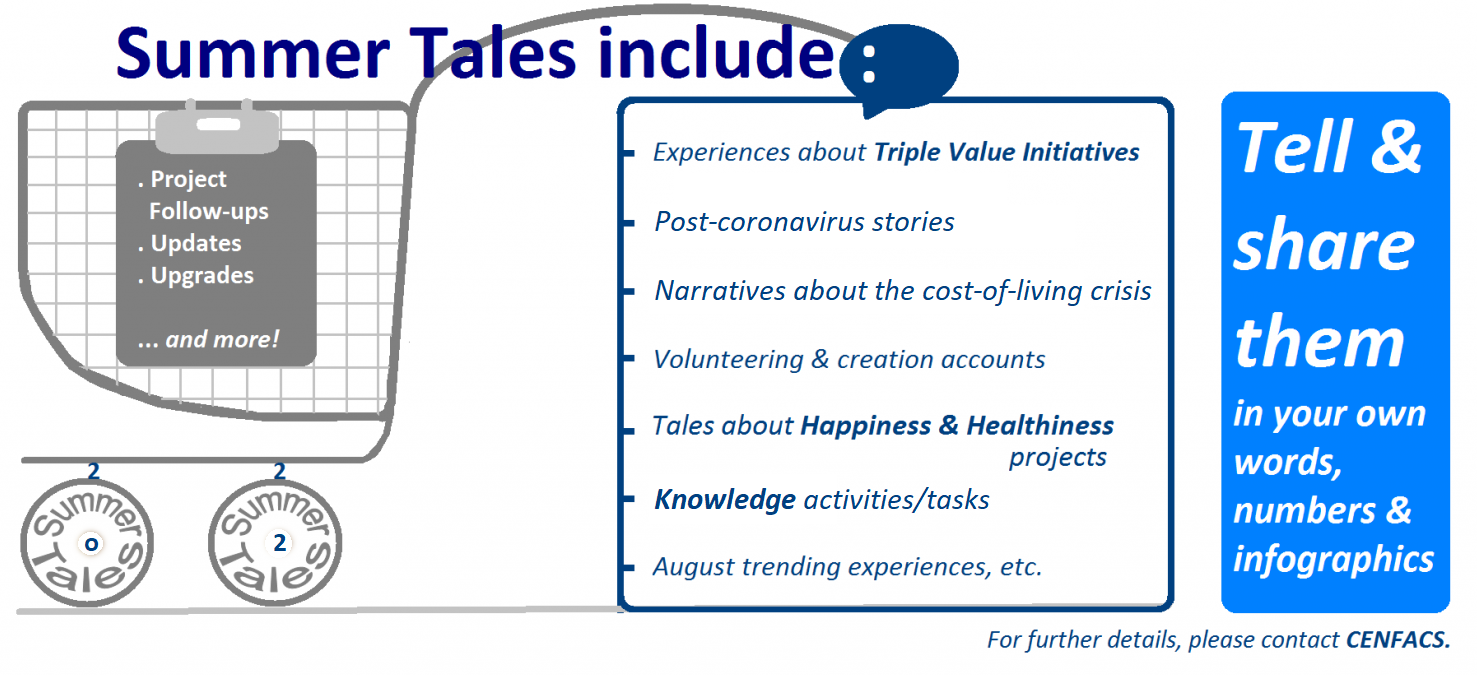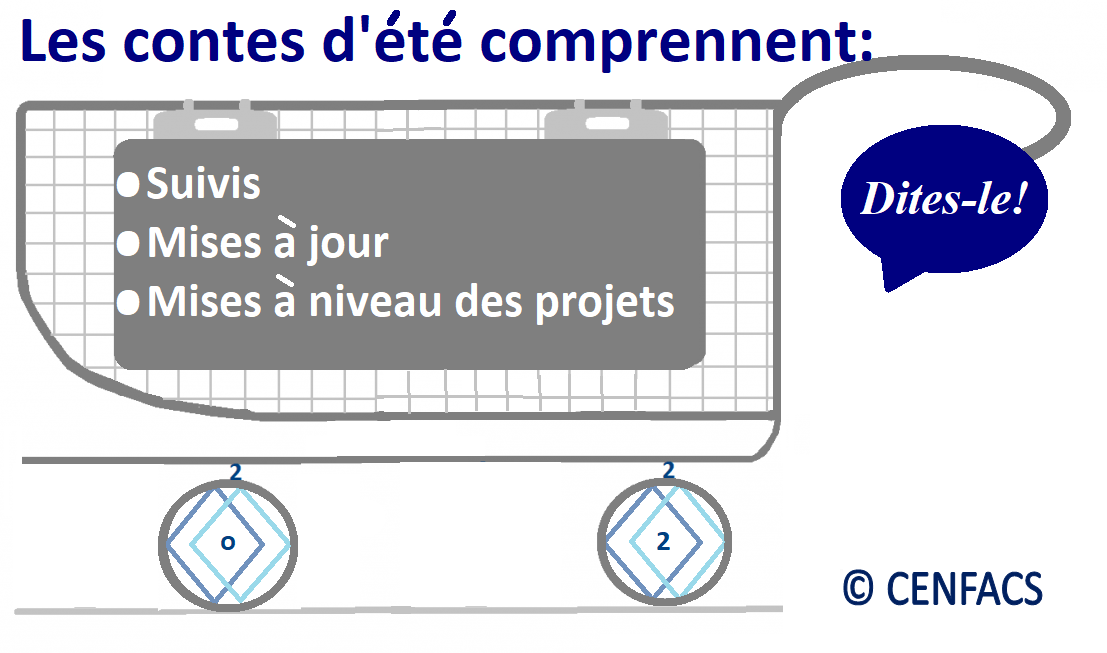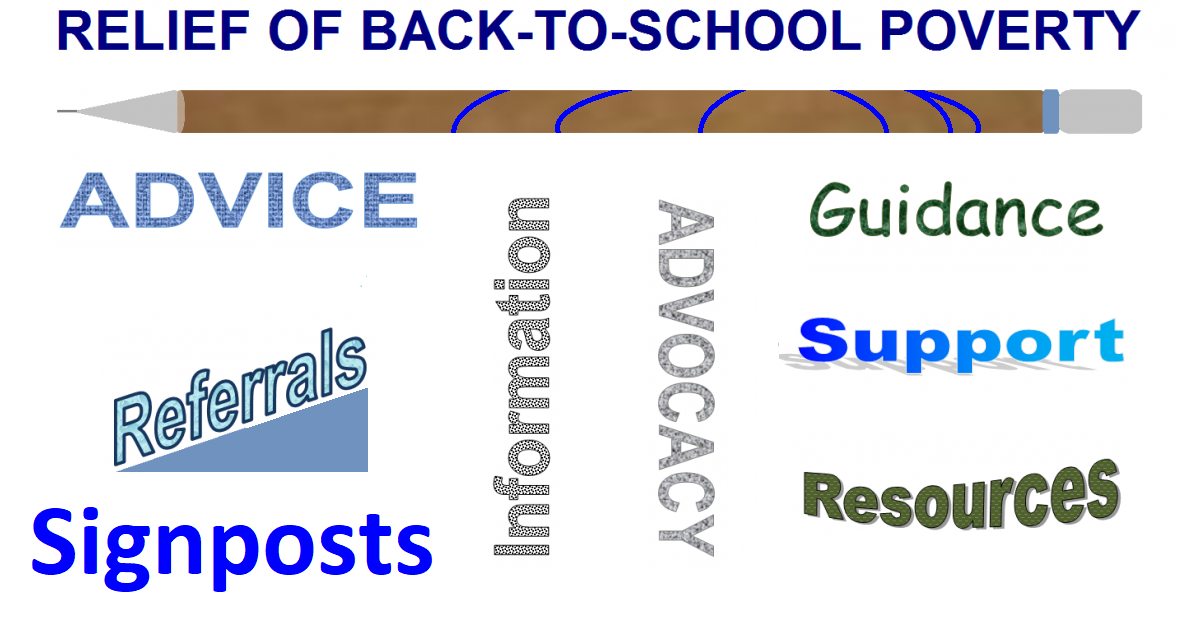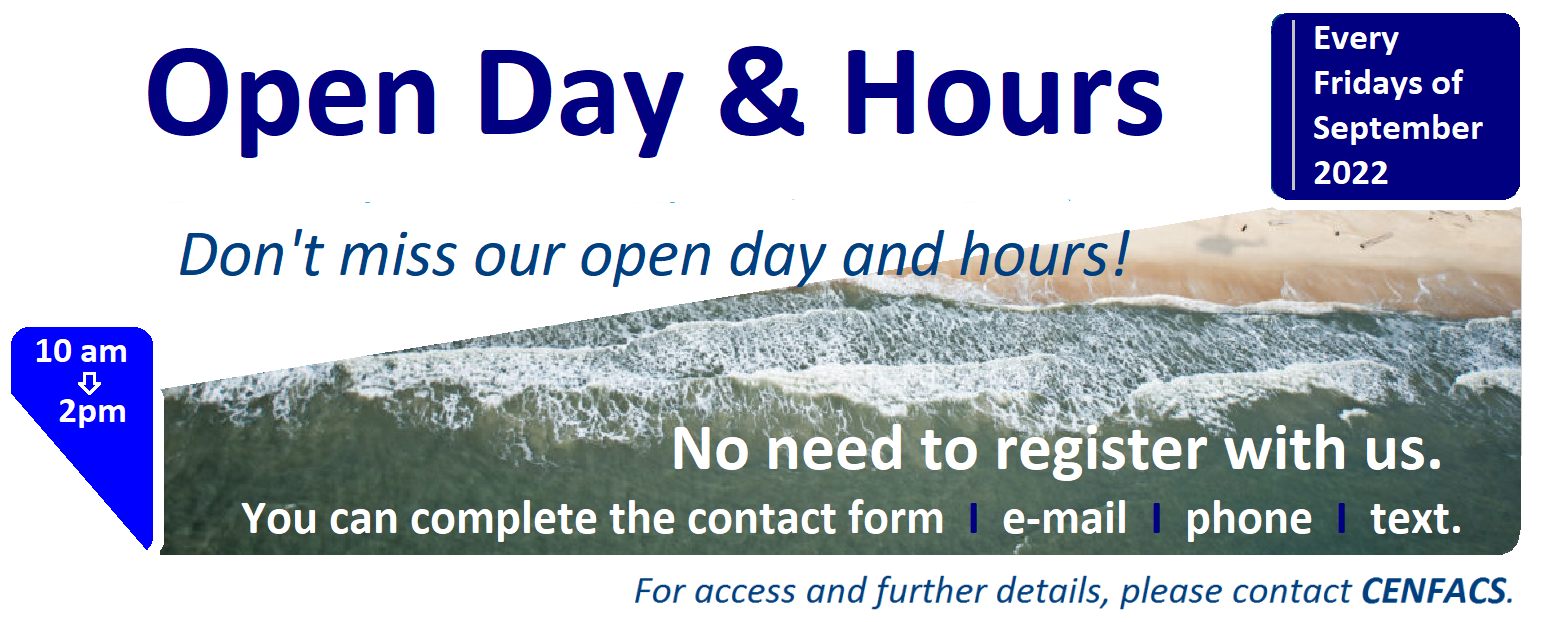Welcome to CENFACS’ Online Diary!
16 November 2022
Post No. 274
The Week’s Contents
• The 13th Women and Children FIRST Development Day to be held on 19/11/2022 with emphasis on Crisis Response Skills
• Impact Monitoring and Evaluation of “A la une” (Autumn Leaves of Action for the Upkeep of the Nature in Existence) Campaign from Week Beginning 14/11/2022
• Data Skills to Run your Household; In Focus from Wednesday 16/11/2022: Data Process Skills
… And much more!
Key Messages
• The 13th Women and Children FIRST Development Day to be held on 19/11/2022 with emphasis on Crisis Response Skills
Let us start by explaining what we mean by Women and Children FIRST Development Day (or in short: Development Day).
The Development Day, which is annually held on 19 November of each year, is a day of enhancing the knowledge, skills and capacities of CENFACS’ Community, particularly women and children making this community, in terms of poverty reduction and sustainable development.
It is about raising awareness and learning on development issues that women and children of our community face.
It is also a day to re-communicate our poverty reduction message about women and children matters while exploring ways of solving their issues.
It is finally a day to re-engage with new and old stakeholders on women and children matters.
As announced last week, the 13th Women and Children FIRST Development Day (in short: Development Day) will take us an extra mile from last year’s Development Day, which was on Foresight Skills. This year, we will be thinking of and celebrating our Crisis Response Skills.
After improving our capacity to predict and forecast future risks and crises as well as plan actions based on improved knowledge, estimations and prospect; we can try to apply this improved capacity and knowledge to respond to crises (like the cost-of-living crisis, debt crisis, climate change crisis, biodiversity crisis, etc.). In fact, the majority of us is already responding to the cost-of-living crisis and other ones.
The 13th Edition of our Development Day will provide a window of opportunities to exchange and celebrate the wins of our responses to crises. It will also offer an occasion to improve or develop our crisis response skills if our responses fall short. Of course, one day of development may not be enough to respond to all the very difficult problems women and children face; but it could be an extra step or turning point for some of them.
As we have gradually curated our services to return them to their pre-COVID-19 conditions, we will be working in hybrid fashion by splitting the two aspects of this year’s Development Day, which are: Thinking and Celebration. The Thinking aspect will be done from home while the Celebration will be carried out in-person for those who can.
The Celebration aspect will be about sharing our wins over poverty in terms of successful crisis response skills while the Thinking element will be on ways of improving or developing our skills to better respond to the side effects of the current crisis (i.e., the cost-of-living crisis) and future crises and risks.
The details about this hybrid fashion of working are given under the Main Development section of this post, where you can also find other details about the Development Day.
• Impact Monitoring and Evaluation of “A la une” (Autumn Leaves of Action for the Upkeep of the Nature in Existence) Campaign from Week Beginning 14/11/2022
Although we finished to compose the five notes or themed activities of the “A la une” Campaign during our 5-week campaign, this campaign for the Upkeep of the Nature does not stop with these notes. Our action for the Upkeep of the Nature continues.
We are now carrying on with the collection and analysis of information regarding this 5-week campaign in order to get its impact or at least its output. The findings from this Impact Monitoring and Evaluation will help to figure out what has been achieved and what has not been accomplished through this campaign and give us some flavour about the future direction of this campaign.
As part of this Impact Monitoring and Evaluation exercise, we would like to ask to those who have been following our 5-week campaign to share with us their feelings and thoughts about these two areas:
(a) The overall “A la une” Campaign and the ‘Mbulu’ project
(b) Any of the themed activities you/they followed with us during this campaign.
By sharing with us your feelings and thoughts about “A la une” Campaign, this could suggest that you value our work and show interest in what we are trying to achieve as an organisation generally and or in respect to the Upkeep of the Nature specifically. Your intervention could as well indicate that we share interest and concern regarding the health and wealth of the nature.
You can share your feelings and thoughts with us by:
∝ Phoning
∝ Texting
∝ E-mailing
∝ Completing the contact form with your feelings and thoughts.
When sharing your feelings or thoughts on the matter, please do not make statements to only please us. We do not expect people to please us. Instead, we would like you to give an objective and fair opinion.
We would like to thank in anticipation those who will be giving their opinions about the “A la une” Campaign.
• Data Skills to Run your Household; In Focus from Wednesday 16/11/2022: Data Process Skills
This week, our campaign on data skills that a typical household or family can use for its effective and efficient running deals with Data Process Skills. To tackle these skills, let us first define data process.
• • What is data processing?
The following definition, which is from ‘simplilearn.com’, will perhaps help to better understand data processing. The website ‘simplelearn.com’ (1) states that
“Data processing is the method of collecting raw data and translating it into usable information. It is usually performed in a step-by-step process by a team of data scientists and data engineers in an organisation. The raw data is collected, filtered, sorted, processed, analysed, stored, and then presented in a readable format”.
In the context of a household running its life on everyday basis, they are not going to call data engineers to deal with their data every day. Data process for them could be about converting their data or information into readable and meaningful formats (like charts, graphs and documents) so that they can better understand their situation such as their financial health and well-being. This could mean they need to find a method to do it.
• • Data processing methods
The website ”simplilearn.com’ (op. cit.) provides the following data process methods, which are: manual, mechanical and electronic.
Data processing is manual when data is handled manually. It is mechanical when data is mechanically processed through the use of devices and machines. It is electronic when data is processed with modern technologies using data processing software and programmes.
For example, if a computerised household knows how to use Microsoft Office Applications software such as Excel spreadsheets, they can undertake electronic data processing by entering the data relating to any aspect of their life (let say monthly food and drink expenses). They can create a table with data and turn this data into a chart or graph. They can for instance do it for the last three months and look at the tendency of this chart or graph. This charted or graphical format of expressing their food and drink data can provide them a visual understanding of their expenses. To be able to carry out this task on a computer, they need to possess some data processing skills.
• • Data Processing Skills to Run your Household
There is a number of skills that a typical household can learn and acquire to process their data. They include the following:
√ Data entry skills
√ Data verification skills
√ Data organisational skills
√ Data supervision skills
√ Data comparison skills
√ Statistical literacy and numeracy skills
Etc.
All these skills and other more will enable to better process data. Not everybody is comfortable or like doing data processing for their own household. Where there is a need of data process and if the needy household wants help, they can ask for it.
• • How CENFACS can work with households to process their data
CENFACS can work with those households making its community and needing some help about the process of their data. We can work with them under CENFACS’ Digital and Social Media Campaign, which provides more help and support than just data processing. Where our capacity to help is limited, we can signpost them to services and/or organisations dealing with the kind of data processing needs they have.
For those members of our community who will be interested in Data Process Skills to Run their Household, they can contact CENFACS. CENFACS can work with them to enhance their Data Process Skills to Run their Household.
To get further insight into Skills Development Month at CENFACS, please continue to read our weekly posts.
Extra Messages
∝ Our Target for the Appeal to End Sexual Violence in Conflicts in Africa is…
∝ Integrating “A la une” Campaign and Nature Aspect of COP27
∝ Goal for the Month: Reduction of Poverty due to the Lack of Matching Skills, Education and Learning
• Our Target for the Appeal to End Sexual Violence in Conflicts in Africa is…
To raise £10 from each donor (individual or organisation) to help the victims-survivors of sexual violence in armed conflicts in Africa. You can help blow past this target.
Please support this appeal to restore and save broken lives as a result of armed conflicts in Africa.
Please don’t wait until the 29th of November 2022 to donate. CENFACS‘ door is already open for donations. You can donate NOW!
To discuss or enquire about this appeal, please contact CENFACS.
Thank you!
• Integrating “A la une” Campaign and Nature Aspect of COP27
Our work of integration of the Nature Aspect of CO27 and “A la une” Campaign continues this week. In particular, we are shadowing the events or activities planned for Nature Zone Pavilion COP27 (2).
For example, today the 16th of November 2022 the following talks have been planned:
a) Nature Based Solutions Political Uptake: What is at stake? by IUCN, WWF International, Climate Champions
b) Accelerating Net Zero and Nature Positive Business Contributions Through Land-based Solutions by World Business Council for Sustainable Development (WBCSD), Forest Solutions Group (FSG), One Planet Business for Biodiversity (OP2B)
c) Mobilizing for a Climate Neutral and Nature Positive World Ahead of COP15 by WWF International
d) Meet the Experts Networking Session by WWF International
e) Repairing our World to Avoid Runaway Climate Change by Global Choices Arctic Angels, Global Commons Alliance, Global Fund for Coral Reefs, Green Africa Youth Organisation, SilverLining, UNDP
f) Nature for the Planet: Building a Nature Positive Future by BirdLife International, Trillion Trees, IUCN.
We are discussing these planned subjects from our own perspective, but with in mind what will come out of the talks from Nature Zone Pavilion COP27.
The discussion will enable us to find out how they affect our users and future generations.
For those who would like to find out more about this integration of CENFACS’ Nature Campaign and aspects of COP27 relating to nature, they can contact CENFACS.
• Goal for the Month: Reduction of Poverty due to the Lack of Matching Skills, Education and Learning
Our goal for this month of November 2022 has three targets as it deals with three lacks, which are: the lack of matching skills, that of education and that of learning.
Indeed, the month of the Economics of Education and Skill Formation is also of addressing the lack of matching skills for those members of our community who have skills, but their skills do not match what is on offer on the labour market.
It is as well the month during which we are trying to address educational poverty, particularly for those children who are having some problems to stay in the educational system.
It is finally the month during which work can be done with those members of our community suffering from the lack of learning opportunity, particularly those who are suffering from illectronism (that is, the lack or total absence of knowledge concerning the use of electronic means).
• • Working with the community to tackle the lack of matching skills, education and learning
CENFACS can work with the community through its advice service so that the members of its community can find their way out of these three types of lack. In particular, we can undertake the following:
√ Support their journey to acquire and develop their matching skills
√ Back families with children struggling to maintain school momentum so that their children can stay in the school system and cope with the pressure of the educational requirements without forcing them
√ Work with those members of our community who need digital learning to overcome illectronism they are facing.
The above is our poverty reduction goal for this month, which we are asking to our audiences and supporters to help or promote.
Message in French (Message en français)
Notre cible pour l’Appel pour mettre fin à la violence sexuelle dans les conflits en Afrique est de…
Collecter 10 livres sterling (11.43 Euros) auprès de chaque donateur/donatrice (individu ou organisation) pour aider les victimes-survivantes de violences sexuelles dans les conflits armés en Afrique. Vous pouvez aider à dépasser cette cible.
Le CENFACS vous prie de soutenir cet appel pour restaurer et sauver des vies brisées à la suite des conflits armés en Afrique.
N’attendez pas le 29 novembre 2022 pour faire un don. La porte du CENFACS est déjà ouverte aux dons. Vous pouvez faire un don MAINTENANT!
Pour discuter ou en savoir plus sur cet appel, veuillez contacter le CENFACS.
Merci!
Main Development
• The 13th Women and Children FIRST Development Day to be held on 19/11/2022 with emphasis on Crisis Response Skills
To help those who might be interested in the Development Day to prepare themselves; we have assembled the following items:
∝ What is crisis response?
∝ Crisis response skills
∝ How this year’s Development Day will be organised
∝ Have queries or enquiries for the Development Day 2022.
Let us highlight each of them.
• • What is crisis response?
The literature review about crisis response provides us with many definitions. Amongst definitions, there is the definition from ‘theclassicwander.com’ (3) which is:
“Crisis response is the process of dealing with a crisis [that is, a time of difficulty or distress]. It includes both the immediate response to the crisis itself, as well as the longer-term process of recovery”.
There are crisis stages: pre-crisis, crisis, and post-crisis.
To respond to any crisis, it requires skills. What are those skills?
• • Crisis response skills
We found what Rajeev Peshawaria (4) argues about the four typical responses in any crisis interesting. R. Peshawaria distinguishes the following four responders to a crisis: the dangerous dunce, the calculating opportunist, the caring fool or Samaritan, and the true leader. Each of these crisis responders embodies characteristics or skills.
It is possible to use Peshawaria’s theory or model to find out when one tries to respond to any crisis whether they act or display skills like a dangerous dunce or a calculating opportunist or a caring fool/Samaritan or a true leader. In other words, one can ask themselves when responding to crises: are they a dangerous dunce, a calculating opportunist, a caring fool or Samaritan, and a true leader?
Depending on their answer to the above question, they can draw up the skills relating to each of these characters. For instance, a crisis responder who has leadership skills will build relationships, manage conflicts, negotiate to reduce or end crisis, critically think, etc. A crisis responder who has Samaritan skills will listen to others, be helpful to crisis-impacted people, but not be judgemental. A crisis responder who has an opportunist’s skills will look for opportunity to exploit, achieve selfish ambitions, use ends to justify the means, etc.
• • How this year’s Development Day will be organised
The Development Day will be organised in two parts: Thinking and Celebration.
CELEBRATING THE WINS WHILE DEVELOPING SKILLS
Every one of us tries to respond to any crises we face in our life. In this response, sometimes we succeed while other times we fail. For example, some people are successfully responding to the cost-of-living crisis while others are failing to do so.
On the Development Day, we are going to celebrate those wins or successes in terms of crisis responses that have met their goals and targets. However, where our crisis responses were inadequate or failed, the Development Day can give us the opportunity or mental/moral resources/strengths to think and acknowledge the losses/failures so that we can improve our crisis responses in the future. In this respect, it is also the day of Skills Development in Crises Response.
• • • Thinking part
Since we are going to work in hybrid fashion, the participants to the Thinking part can remotely (from their home or office or anywhere else) think and share their thoughts on the Day using their Crisis Response Skills and any other skills about the future crises and risks, particularly what they can do if any of these crises and risks become a reality.
For example, there are forecasts or predictions that the UK could enter into a lengthy economic recession. What could be your response as a Development Day Thinker to mitigate the impacts of this recession if it materialises?
• • • Celebratory part
Potential Development Day Celebrators could group themselves in a small COVID-19 secure working space (let say a group made up of 2 to 10 people including children) to share and recognise the value of poverty reduction and sustainable development amongst women and children. They can make up a Healthy, Safe and Secure Development Day Small Group (HSSDDSG).
• • • • What is a Healthy, Safe and Secure Development Day Small Group (HSSDDSG)
A HSSDDSG is a number of two to ten adults including children gathered in a healthy, safe and secure space to share their poverty reduction and sustainable development experiences and wins in an informal and unstructured way.
Like in a discussion focus group, the group can systematically collect important information shared for impact monitoring and evaluation, learning and development purposes. The group can as well seize the outputs or outcomes achieved. Finally, the group can report to the community their experience of taking part in a HSSDDSG.
• • Have queries or enquiries for the Development Day 2022
The above are the main items that will feature this year’s Development Day. For any queries or enquiries about them, please do not to hesitate to contact CENFACS.
At the end of this Main Development section of this post, we have appended a timeline of CENFACS Development Day milestones.
Wishing you a SUCCESSFUL, HEALTHY, SAFE AND SECURE Development Day 2022!
_________
• References
(1) https://www.simplelearn.com/what-is-data-processing-article (accessed in November 2022)
(2) https://nature4climate.org/cop-27-nature-zone-pavilion/ (accessed in November 2022)
(3) https://theclassicwander.com/travel-blog/what-is-crisis-response-travel-nursing.html (accessed in November 2022)
(4) https://www.forbes.com/sites/rajeevpeshawaria/2020/04/01/four-typical-responses-in-a-crisis-which-one-is-yours/ (accessed in November 2022)
_________
• Appendix
Women and Children FIRST Development Day (WCFDD) Timeline: 2010 to 2021
Since its inception in 2010, the WCFDD provides an opportunity and scope to communicate CENFACS’ anti-poverty work/message and the need to develop new ideas and proposals and improve practices to enable us to enhance the quality of life of multidimensionally-deprived women/mothers and children. The following are the milestones so far for WCFDD.
In 2010, the WCFDD was devoted to AWARENESS on SUSTAINABLE ACCESS TO & PROTECTION OF ENVIRONMENTAL RESOURCES AND ENERGIES
In 2011, CENFACS’ WCFDD tackled the challenging issue of BARRIERS TO POVERTY REDUCTION, with a special emphasis on one particular way of overcoming them, which is participation. Women & Children’s Participation was looked at within the context of Race in the Road to Poverty Reduction.
In 2012, our Development Day in Putting Women and Children FIRST went further with the sub-theme of participation as it was organised around the theme of IMPROVING WOMEN’S AND CHILDREN’S PARTICIPATION IN THE RACE TO REDUCE POVERTY.
In 2013, WCFDD at CENFACS extended and deepened the idea of more and better participation by focussing on Infrastructures for Women’s and Children’s contribution to poverty relief. The theme for 2013 was “INFRASTRUCTURES FOR A POSITIVE ECONOMY TO REDUCE POVERTY”.
In 2014, we guesstimated and compared the cost for acting to the cost for inaction to reduce poverty. The theme of COSTING DOING NOTHING FOR POVERTY RELIEF improves our understanding on an early prevention that helps reduce costs and avoid escalating or detrimental effects for poor Women and Children.
In 2015, WCFDD was dedicated to MAKING THE 2030 AGENDA FOR SUSTAINABLE DEVELOPMENT WORK FOR WOMEN & CHILDREN (W&C). This was the local community response from the W&C of CENFACS to the 2030 Global Agenda and Goals for Sustainable Development.
In 2016, the theme for our Development Day was ENSURING HEALTHY LIVES AND PROMOTING WELL-BEING FOR WOMEN & CHILDREN. This was the continuation of 2015 Development Day. Ensure-Healthy-Lives-and-Promote-Well-being is itself Goal no.3 of the United Nations Sustainable Development Goals. One day of development thoughts does not make the 2030 Agenda works as we need more times and days. But it helped to look at Goal 3 (G3) as both global and local concept, G3 as a practical response and G3 as Protection for W&C in the CENFACS’ Year of Protections.
In 2017, ENDING POVERTY IN ALL ITS FORMS EVERYWHERE FOR WOMEN AND CHILDREN was our working theme for the WCFDD
In 2018, we thought ways of working together to come out of the linear model that consists of make, use and dispose goods and resources; to embrace the CIRCULAR ECONOMY
In 2019, we discussed and put ECONOMIC SUSTAINABILITY into practice via three specific activities which were: advice, art and design, and clothes recycling as an example to end clothing poverty.
In 2020, we formalised and structured CORONAVIRUS TALKS BUBBLE by giving it purpose and objectives so that participants to it can measure its impact or output on their lives.
In 2021, we celebrated and thought of Foresight Skills to help improve our capacity to predict and forecast future risks and crises (similar to the coronavirus) as well as plan actions based on improved knowledge, estimations and prospect.
• Note: For your information,
3W (What Women Want) is a CENFACS support network scheme to enhance the lives of multi-dimensionally deprived women/mothers and families.
PPS (Peace, Protection & Sustainability) is a CENFACS child and environmental protection programme to support multi-dimensionally vulnerable children, young people and families
W&CSDP (Women & Children Sustainable Development projects) – a CENFACS amalgamation of 3W and PPS projects
_________
• Help CENFACS keep the Poverty Relief work going this year
We do our work on a very small budget and on a voluntary basis. Making a donation will show us you value our work and support CENFACS’ work, which is currently offered as a free service.
One could also consider a recurring donation to CENFACS in the future.
Additionally, we would like to inform you that planned gifting is always an option for giving at CENFACS. Likewise, CENFACS accepts matching gifts from companies running a gift-matching programme.
Donate to support CENFACS!
FOR ONLY £1, YOU CAN SUPPORT CENFACS AND CENFACS’ NOBLE CAUSES OF POVERTY REDUCTION.
JUST GO TO: Support Causes – (cenfacs.org.uk)
Thank you for visiting CENFACS website and reading this post.
Thank you as well to those who made or make comments about our weekly posts.
We look forward to receiving your regular visits and continuing support throughout 2022 and beyond.
With many thanks.
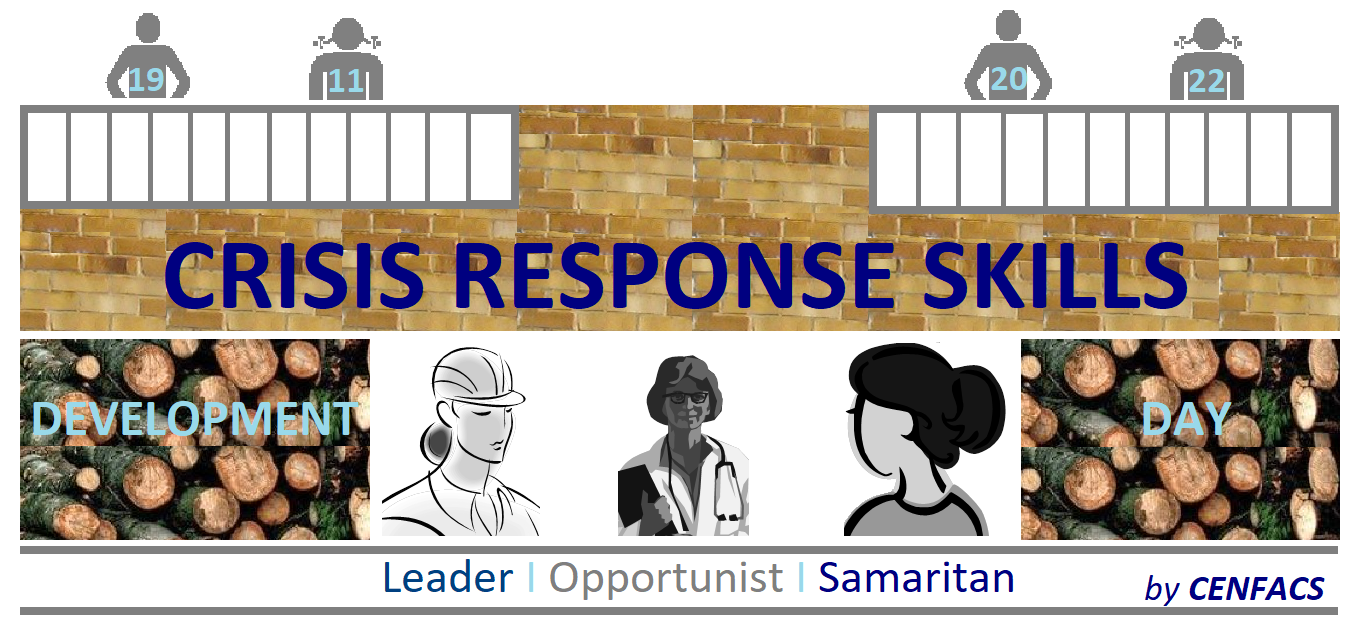
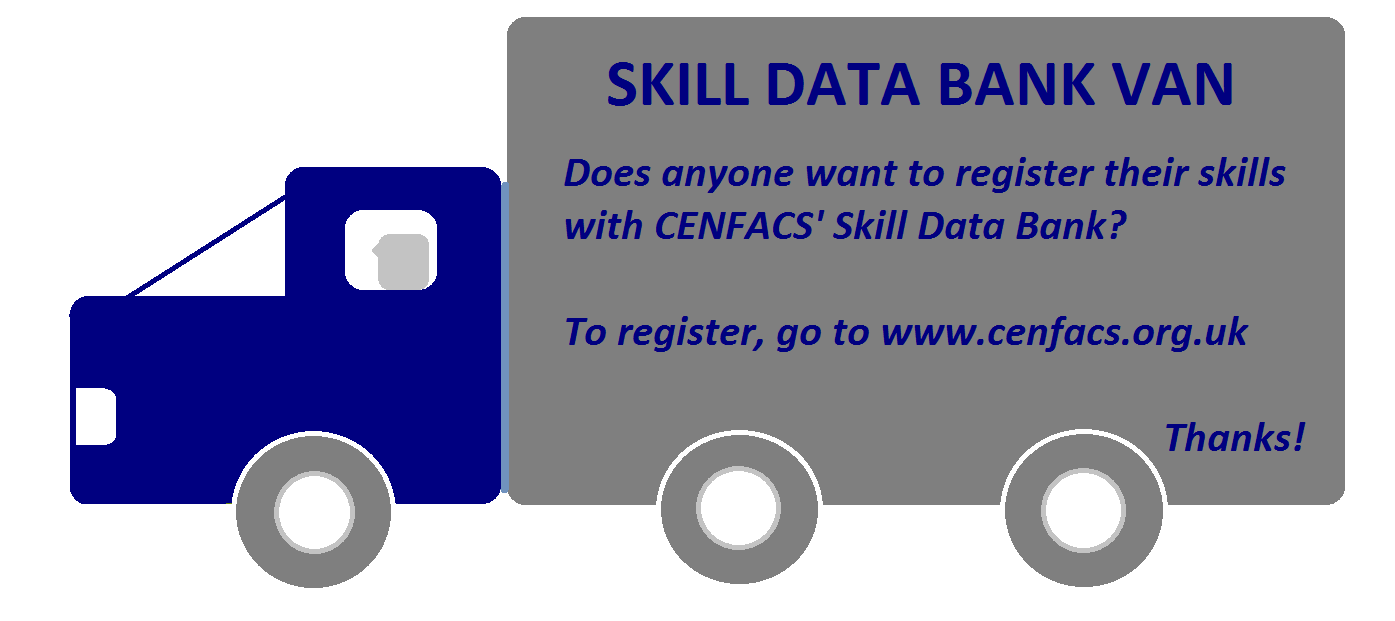
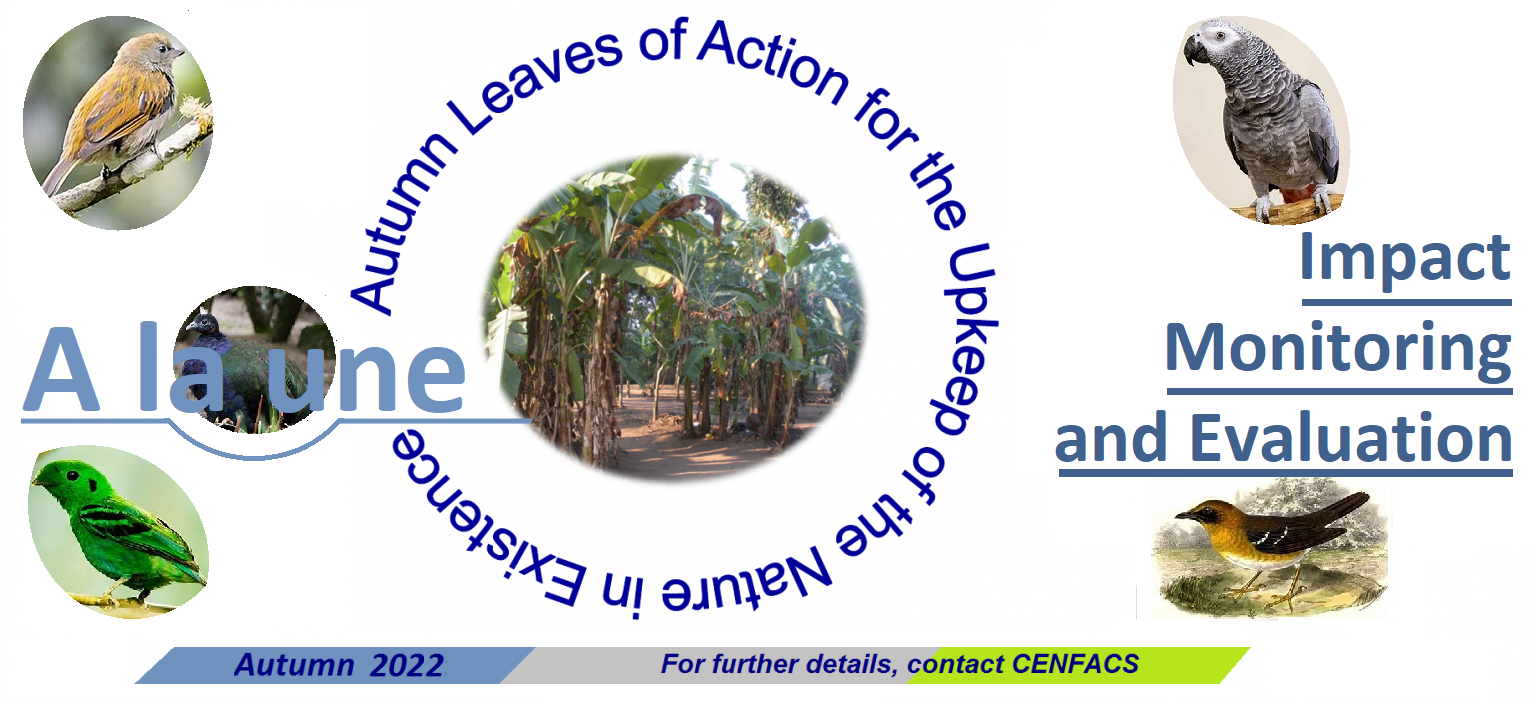

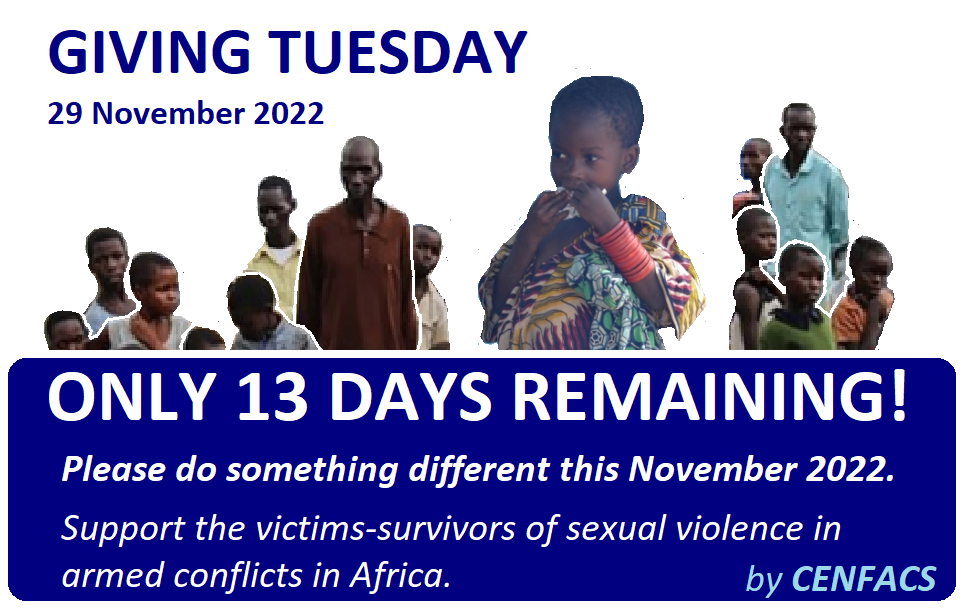
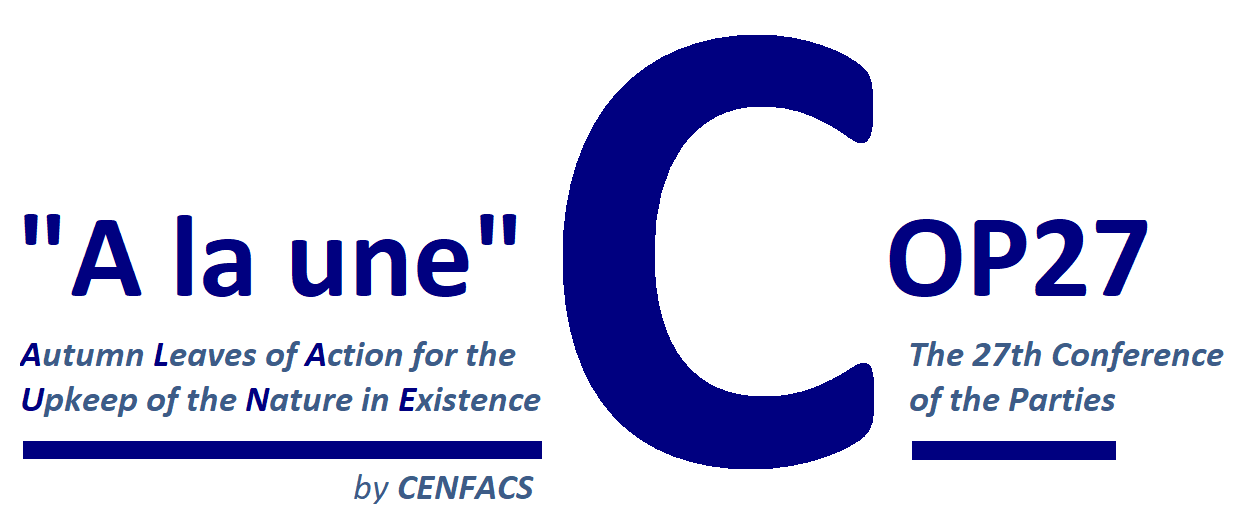
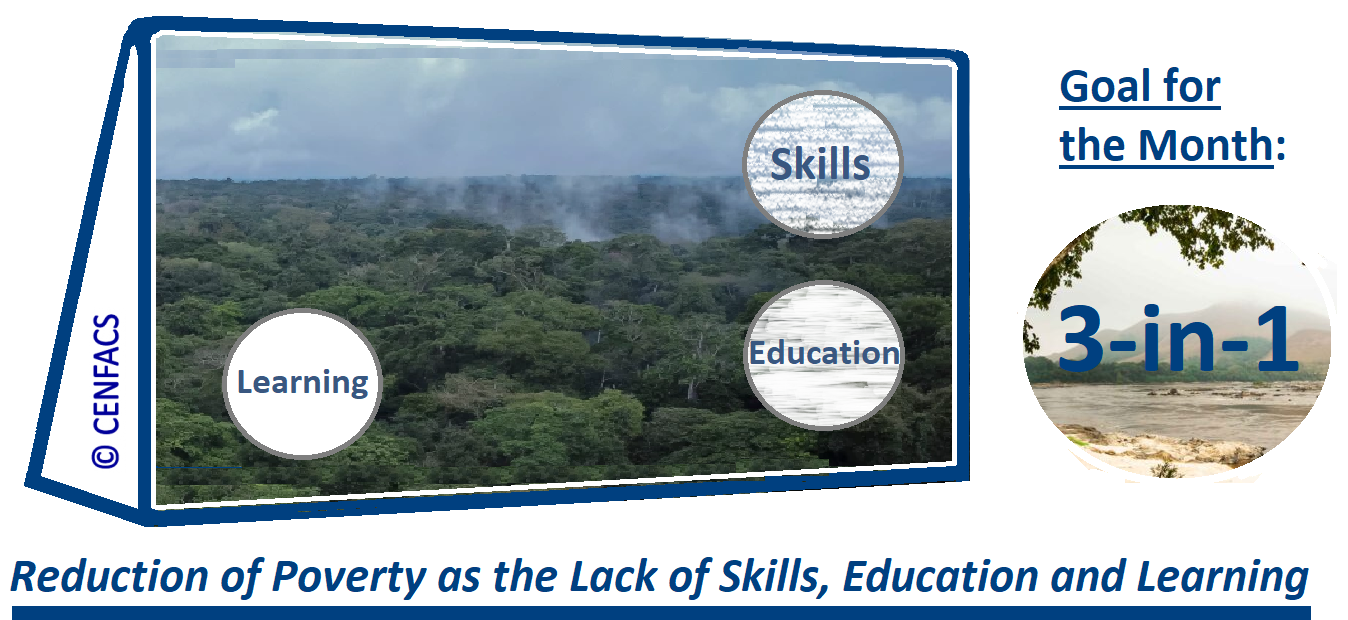
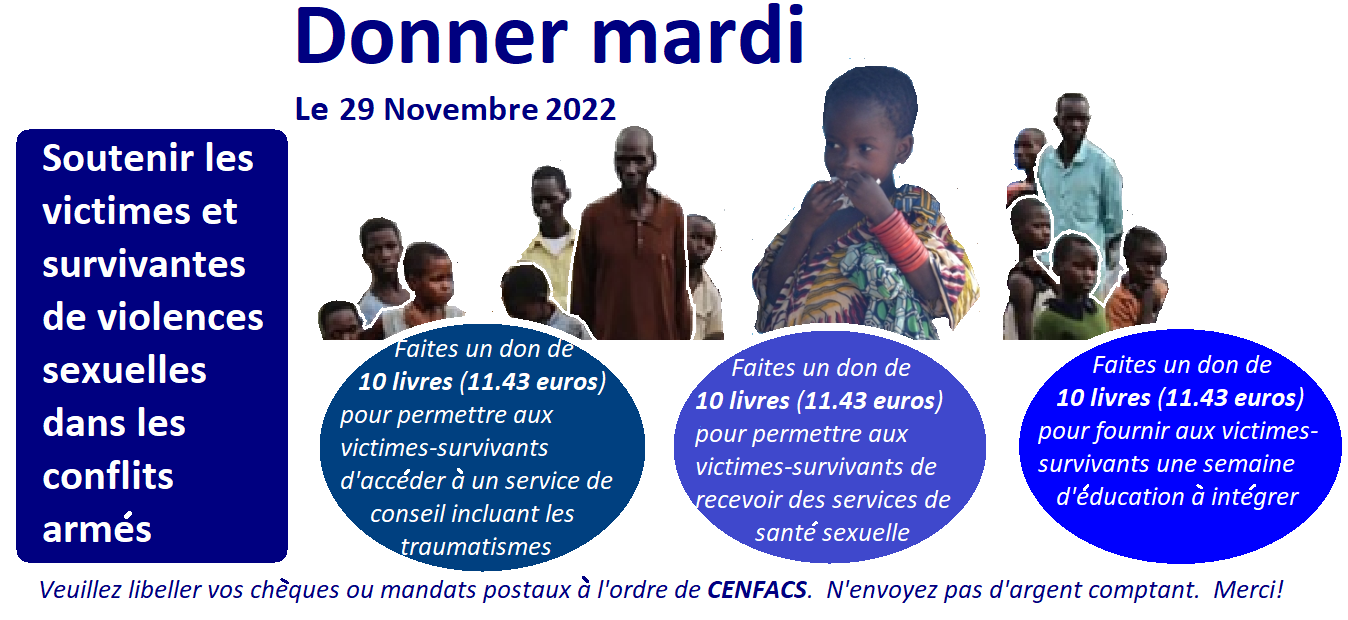
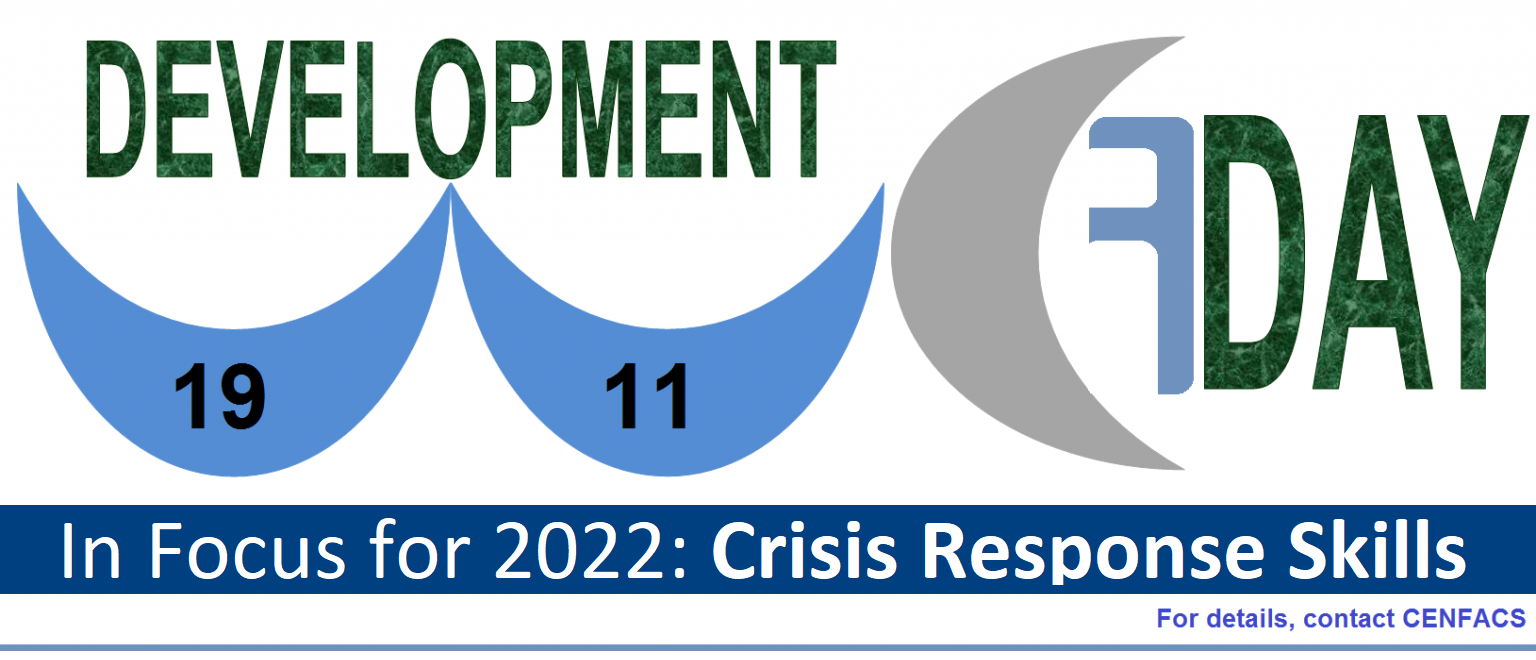

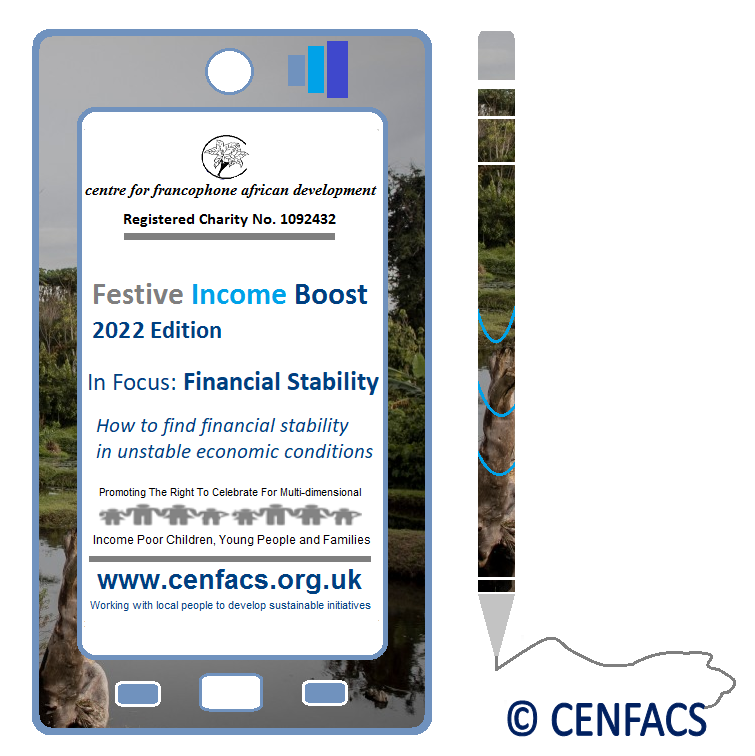

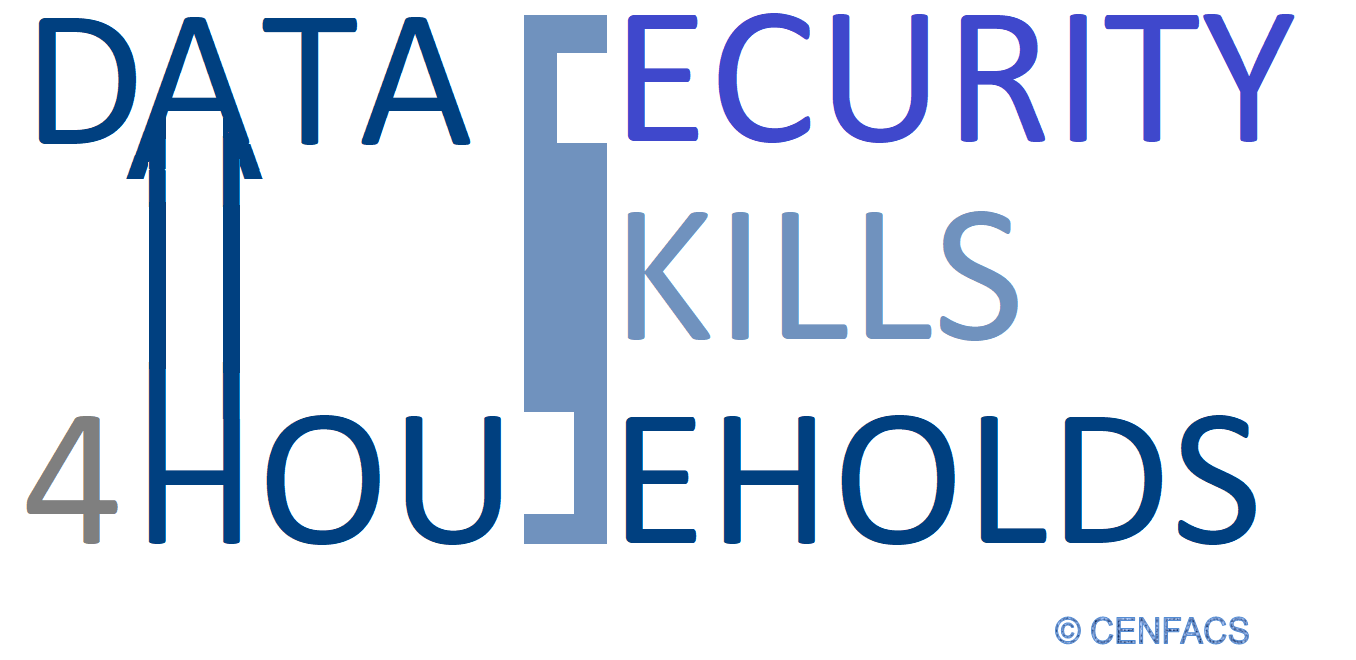
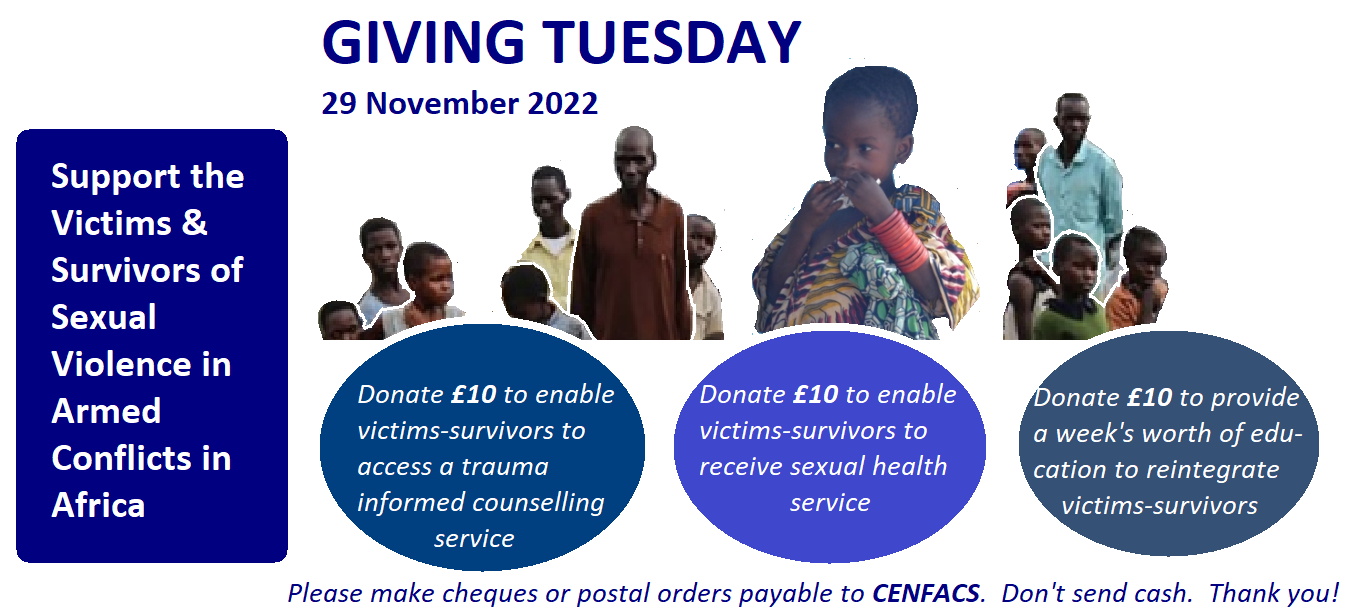
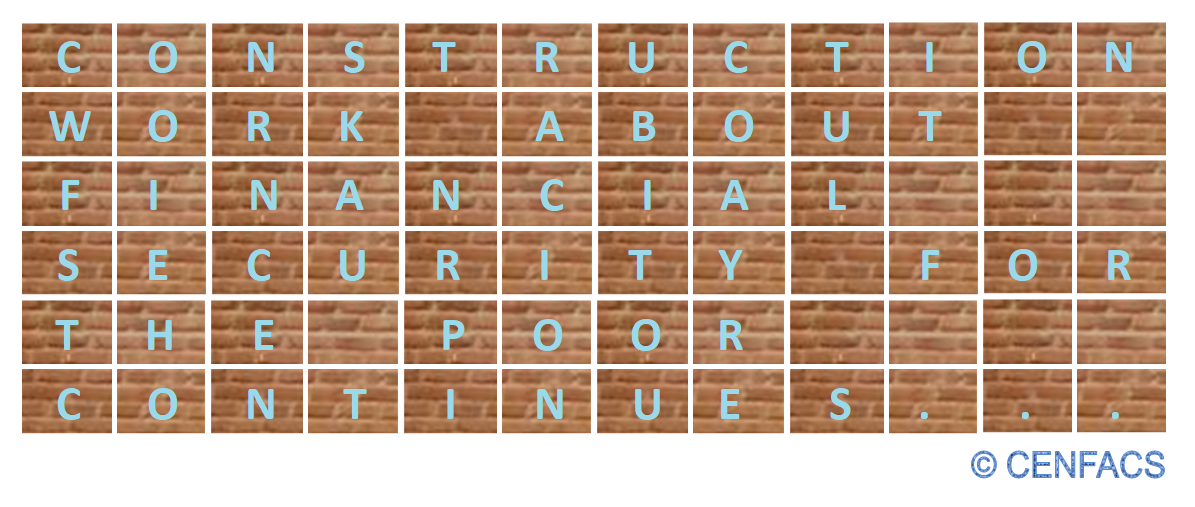
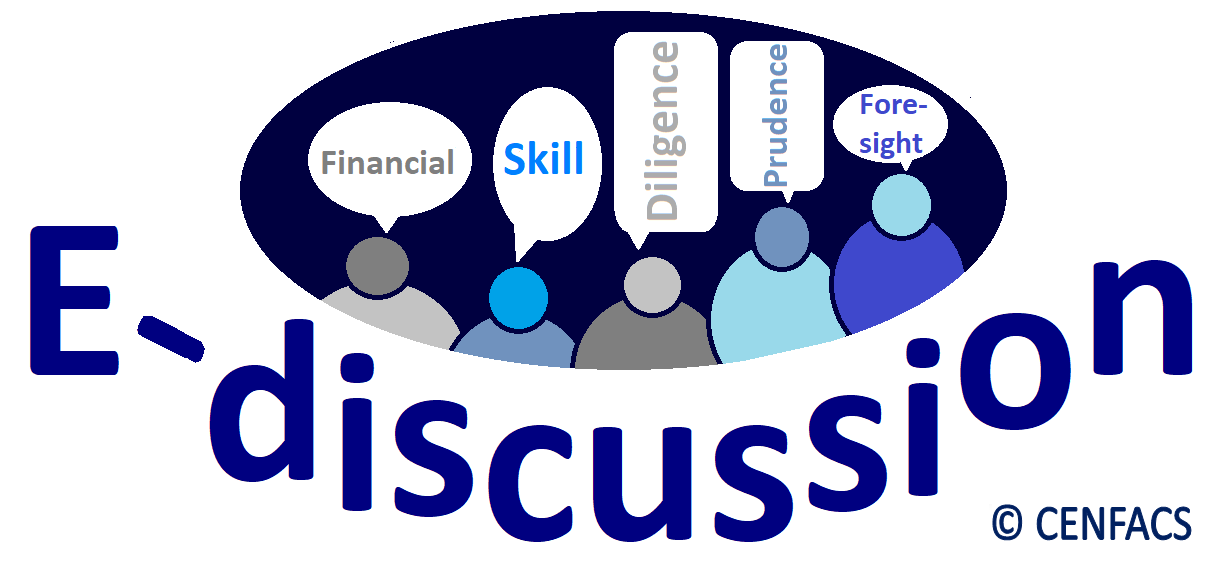
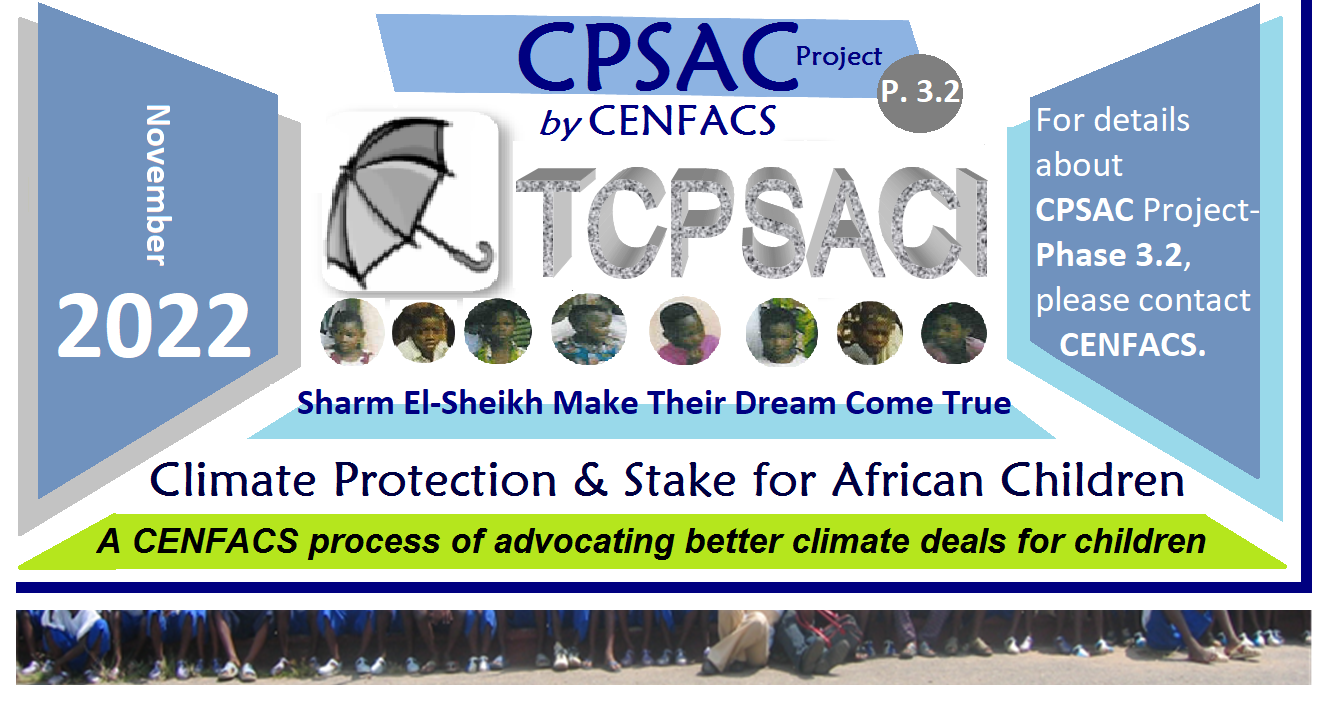
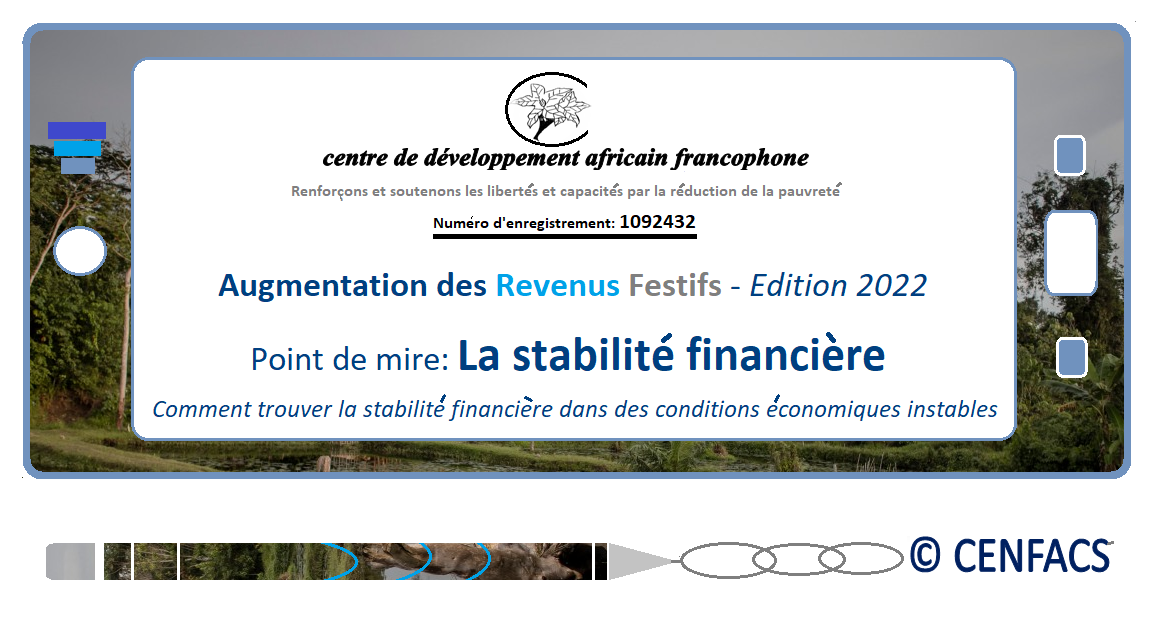
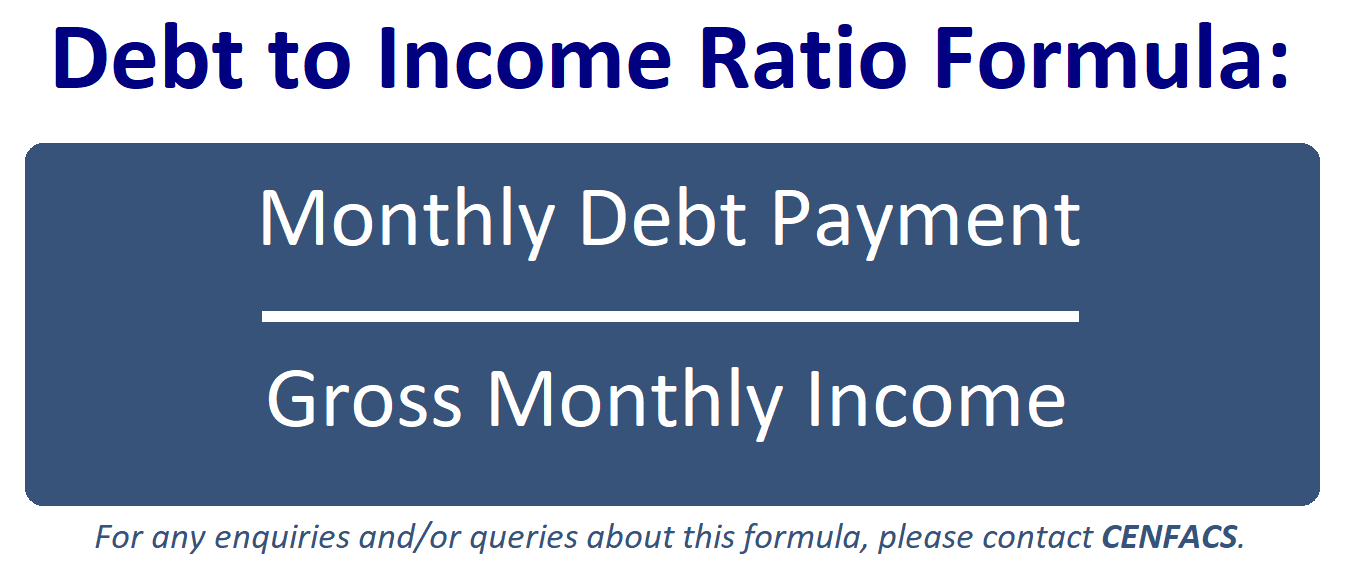
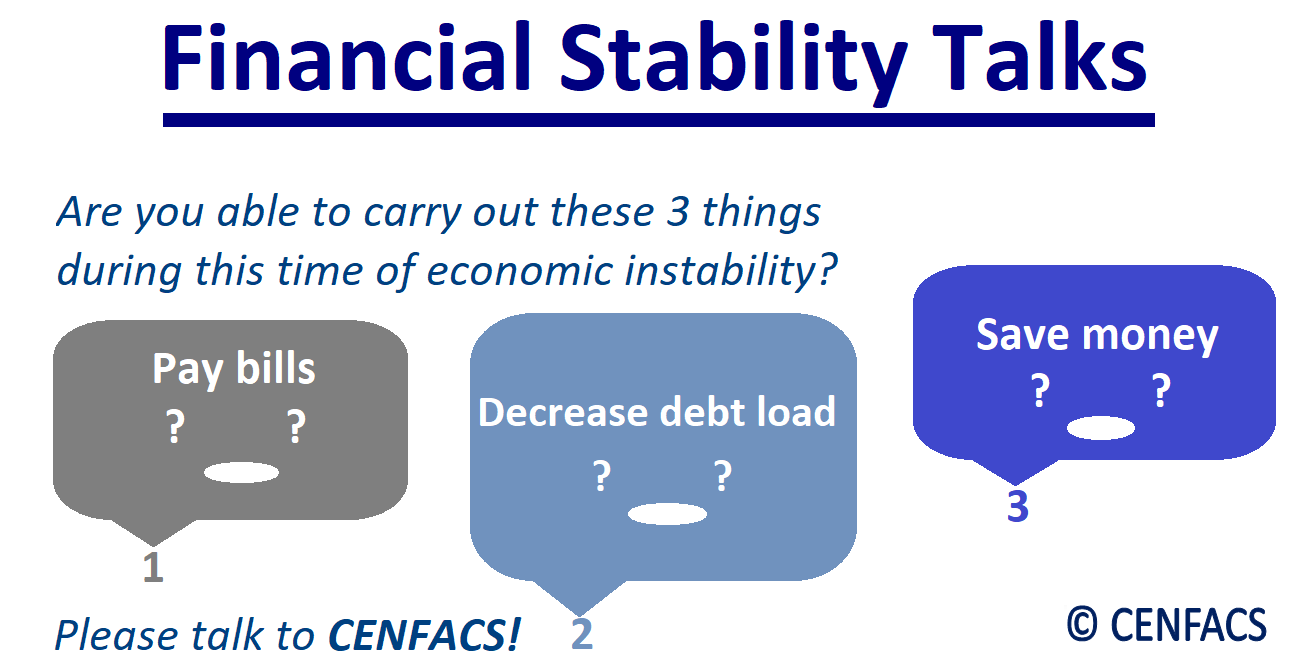
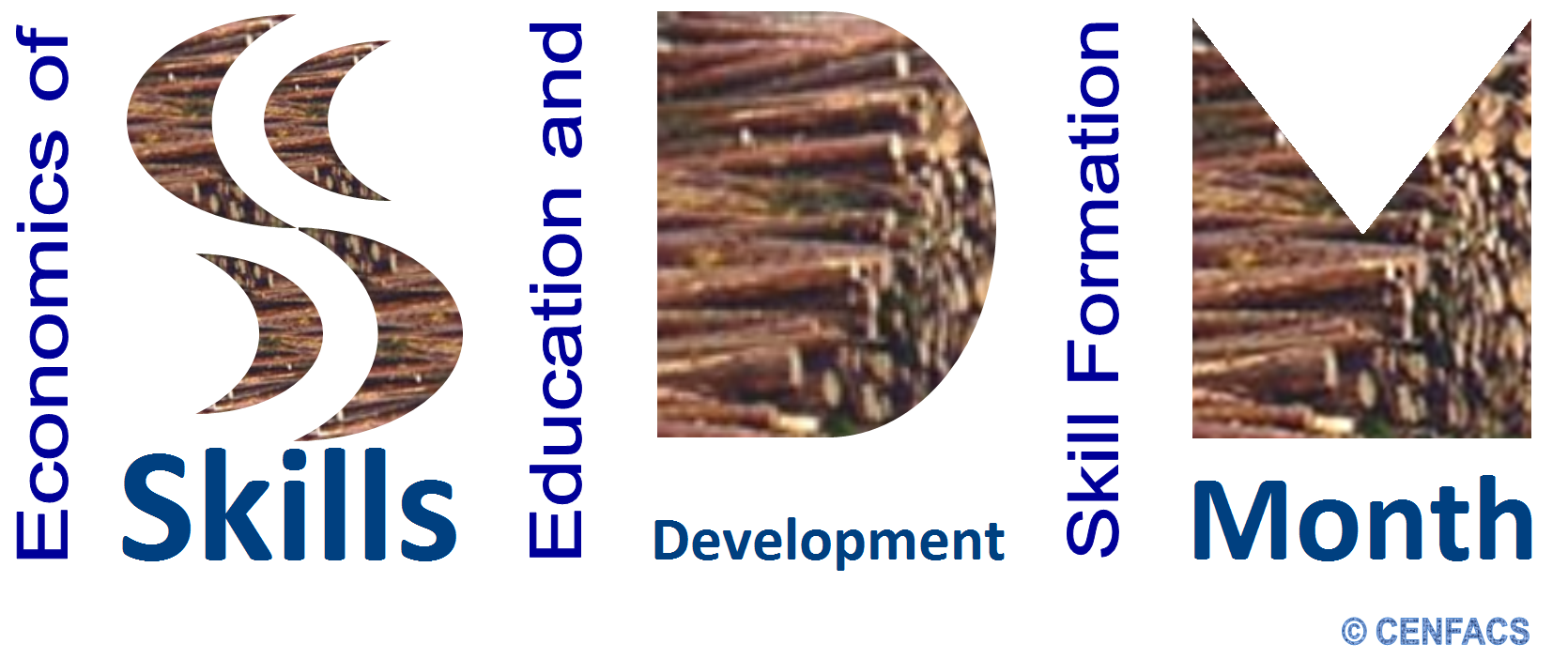
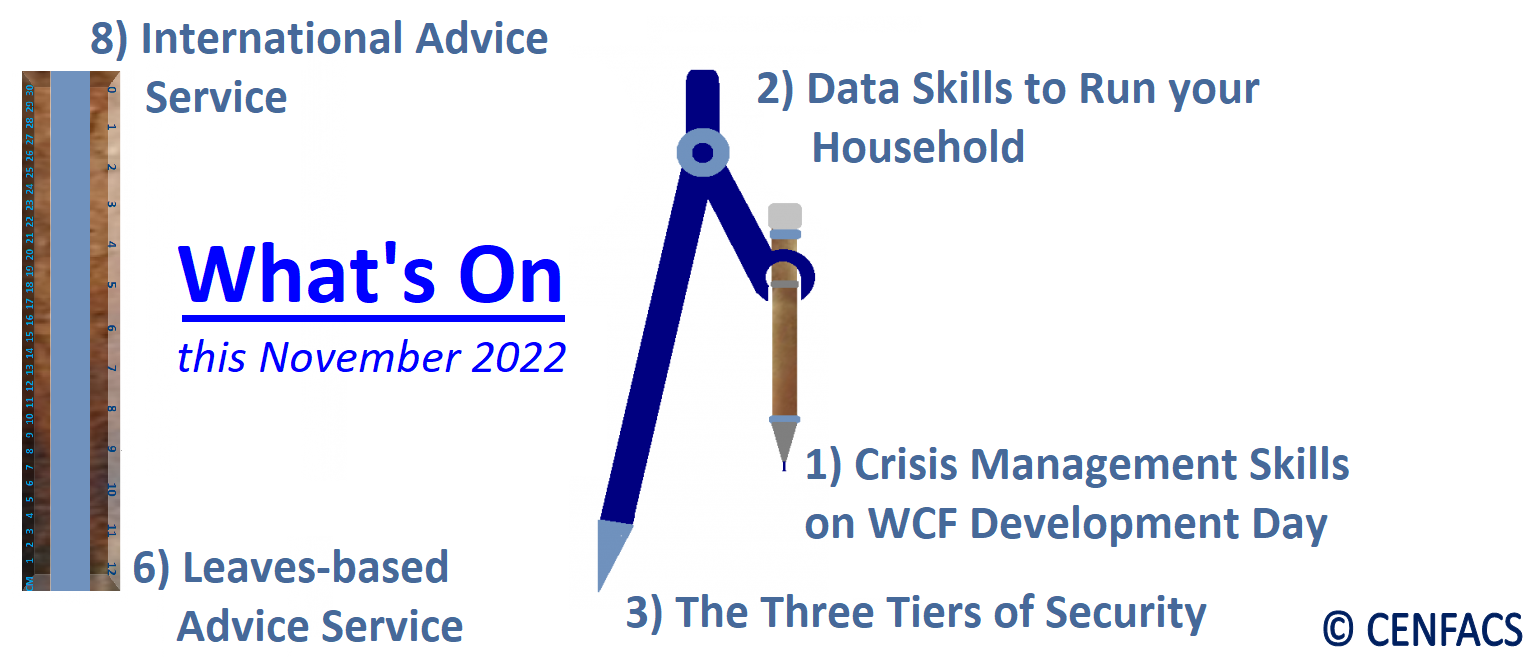
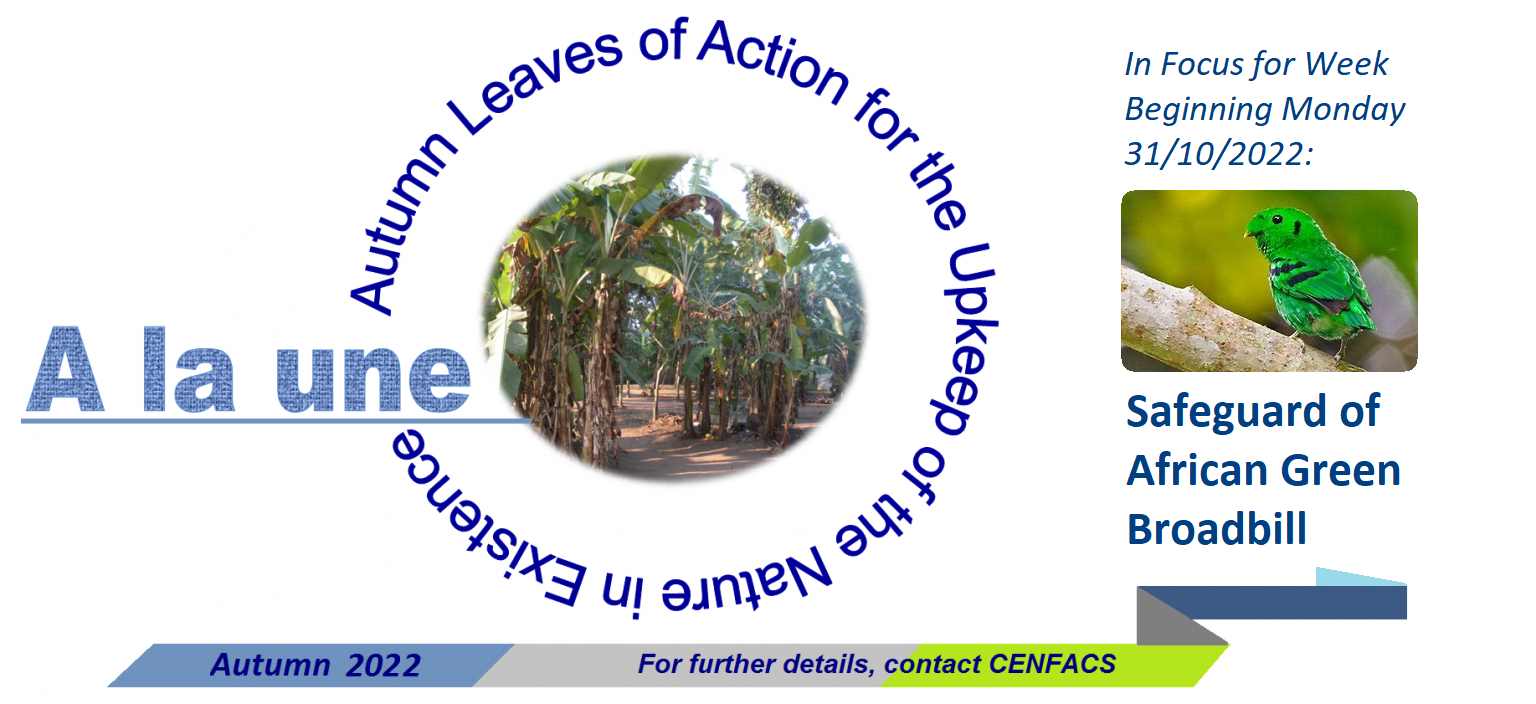

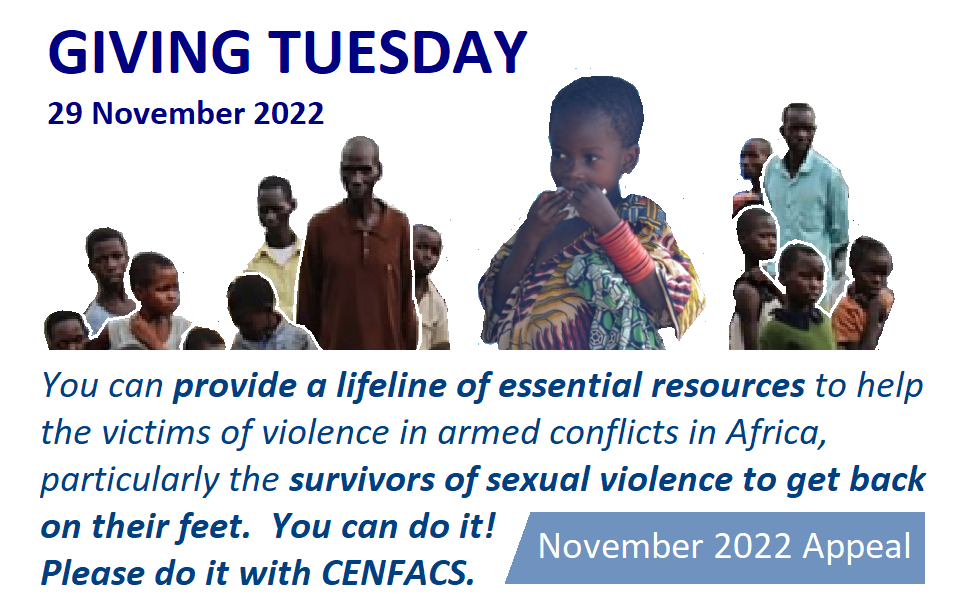

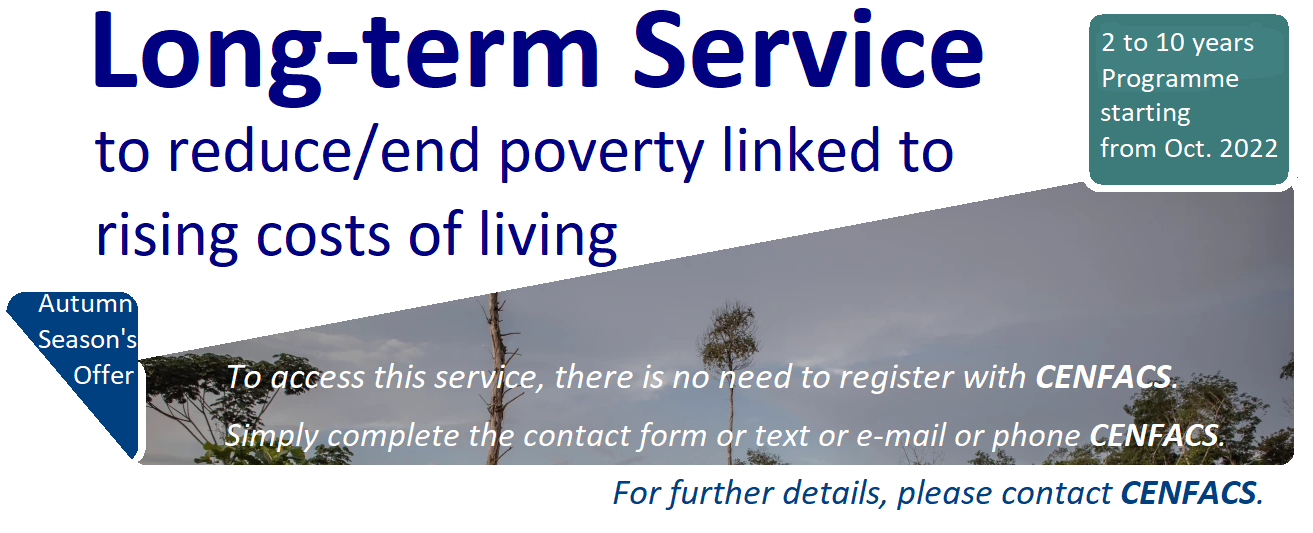
 Help beneficiaries improve their productivity and capacity to earn or generate sufficient income
Help beneficiaries improve their productivity and capacity to earn or generate sufficient income